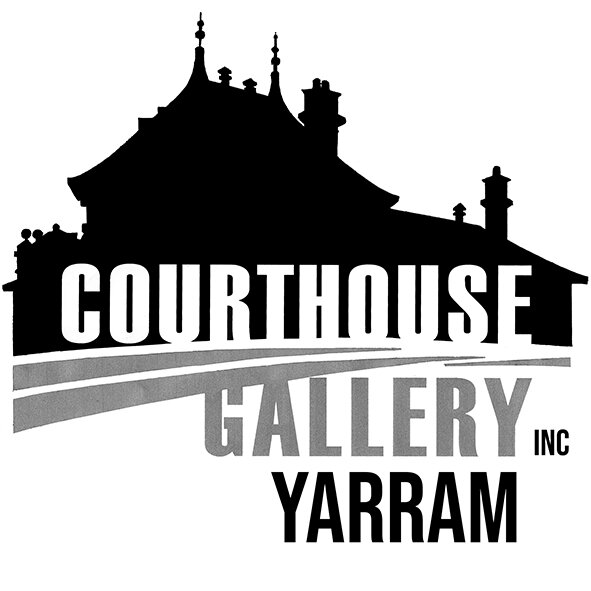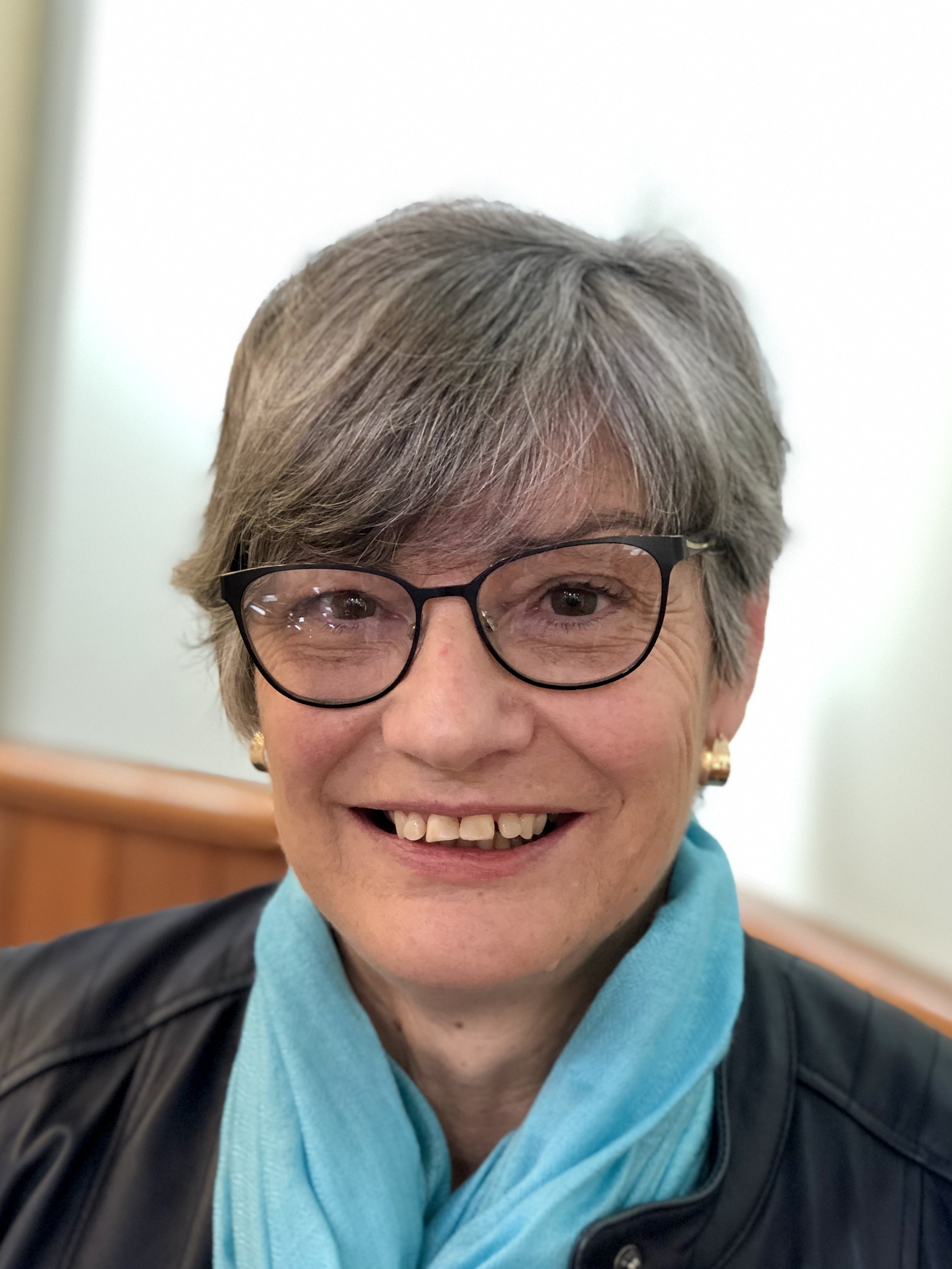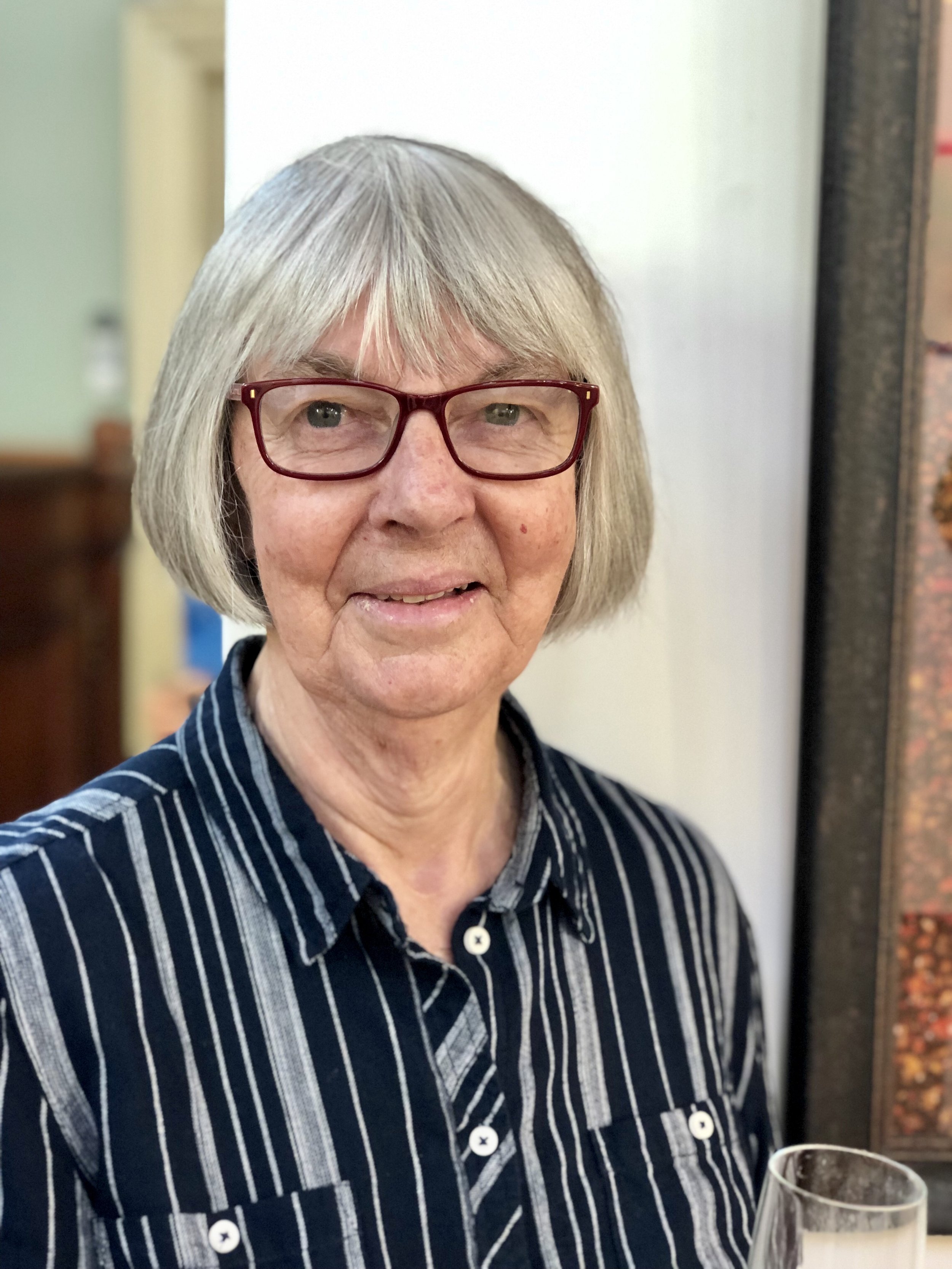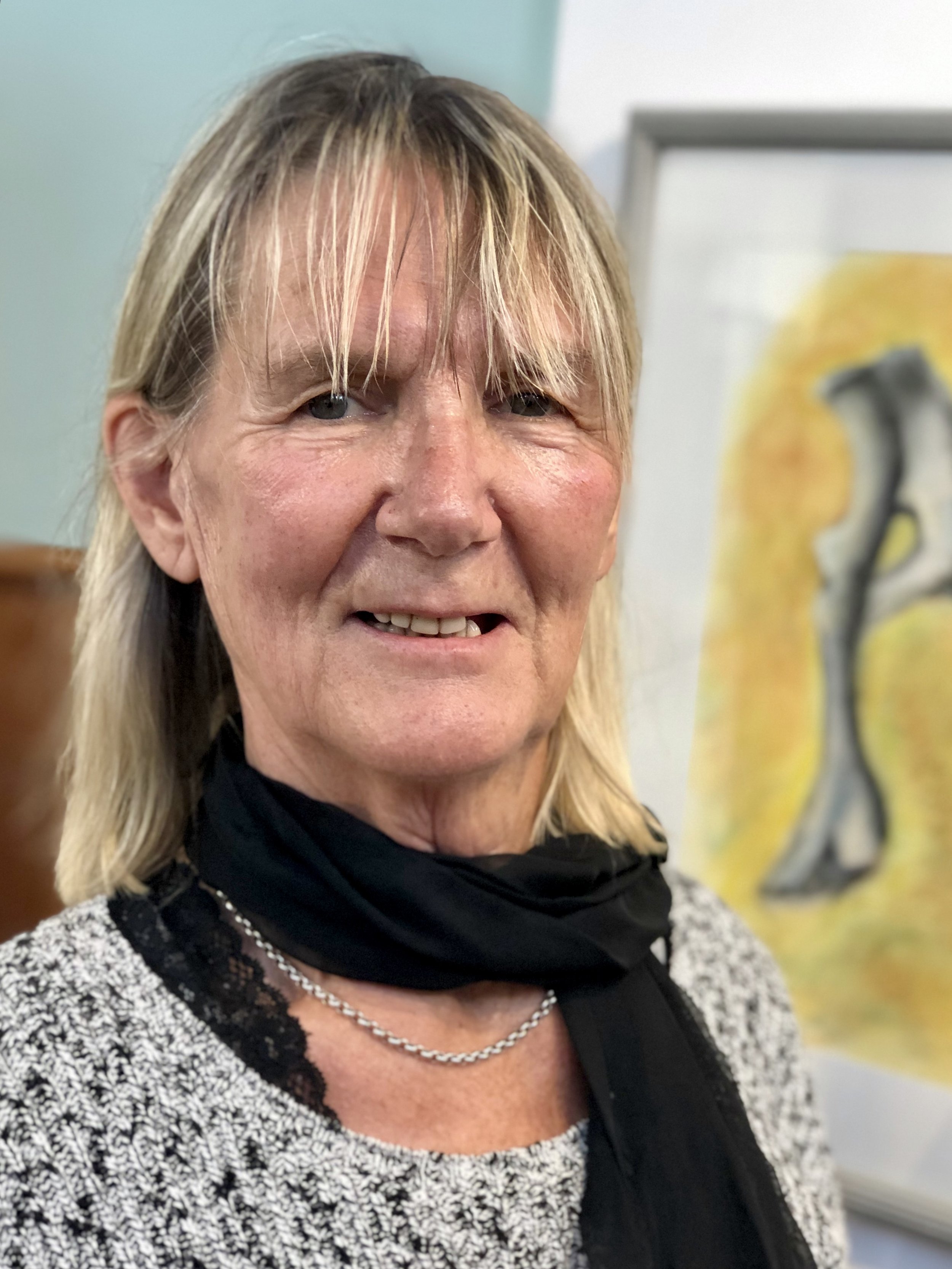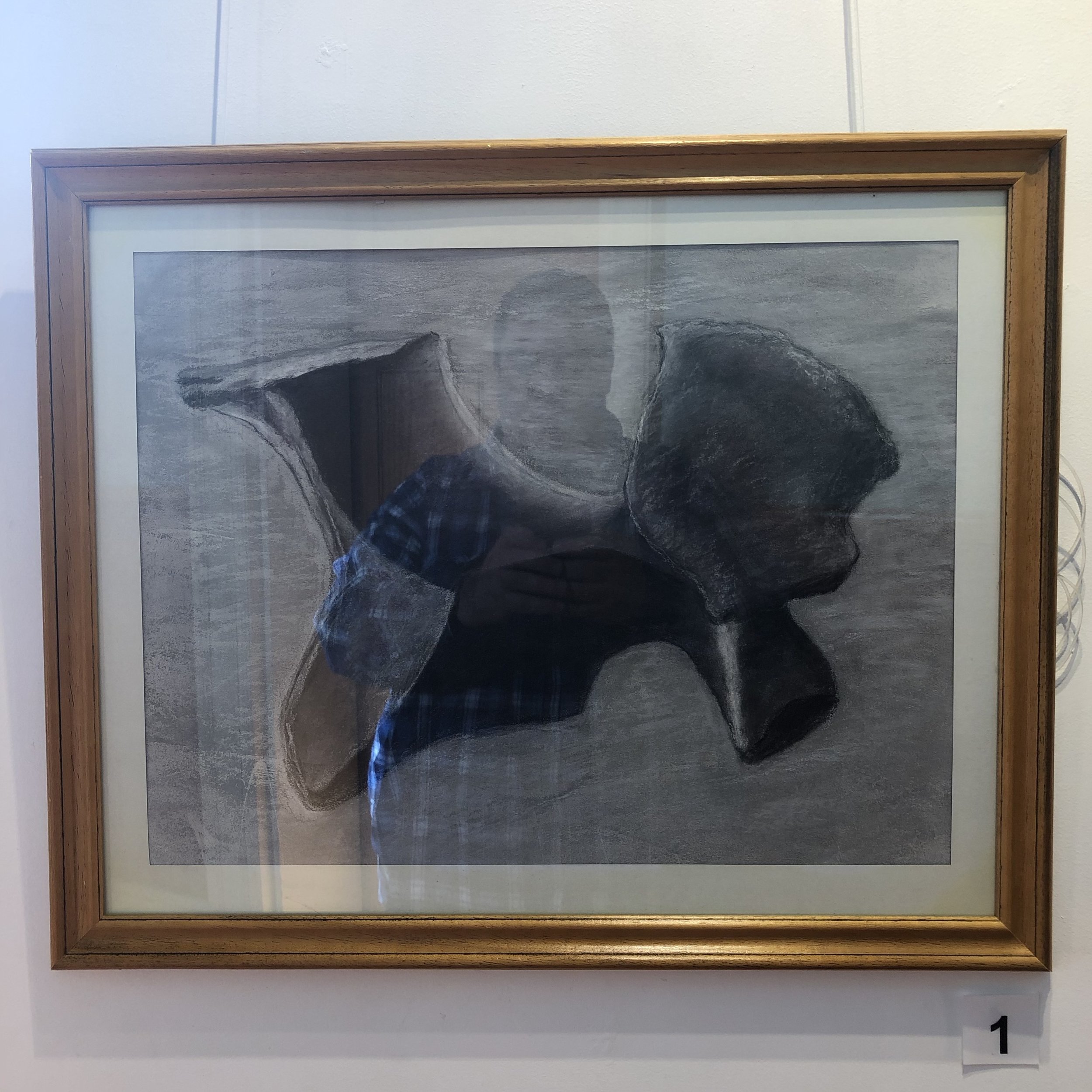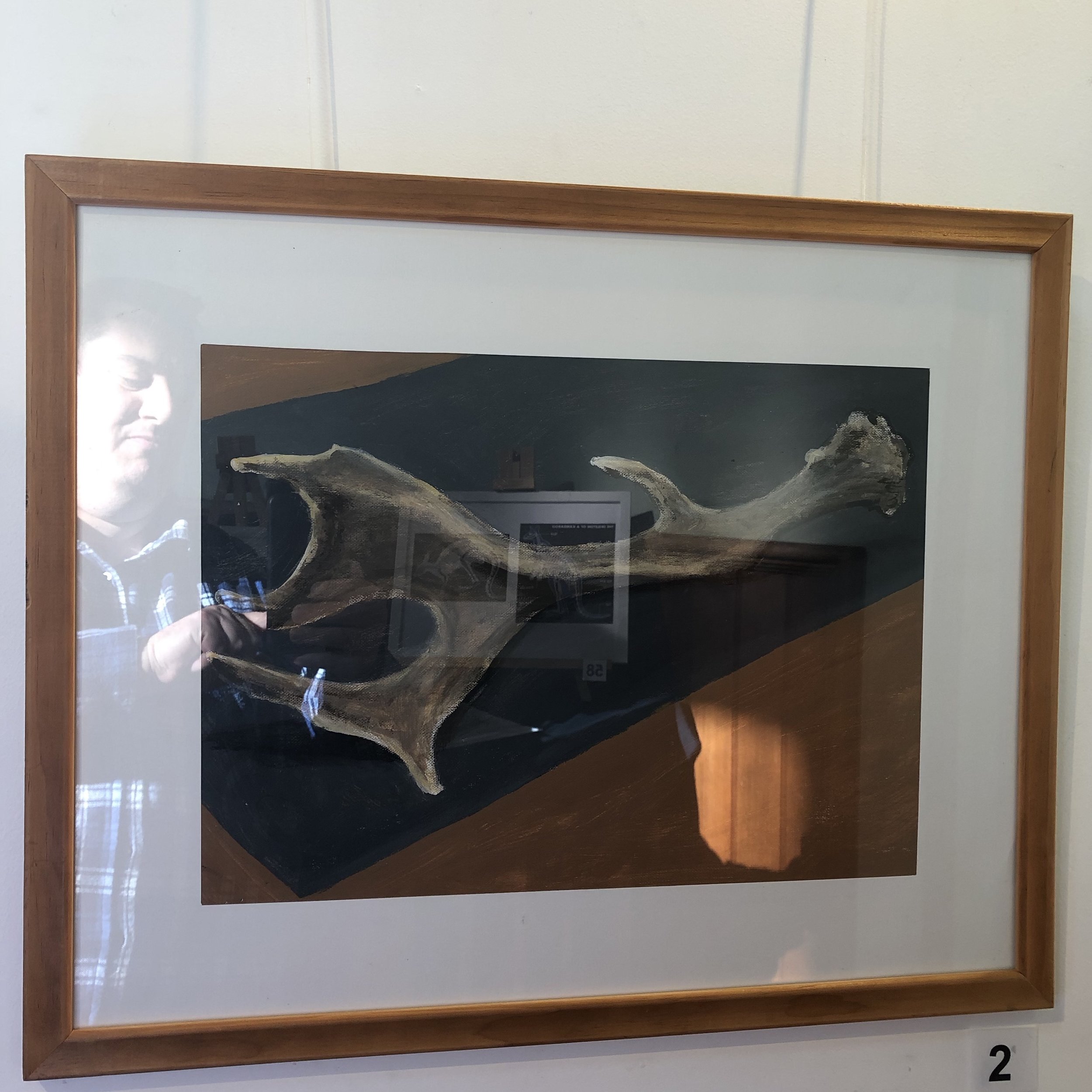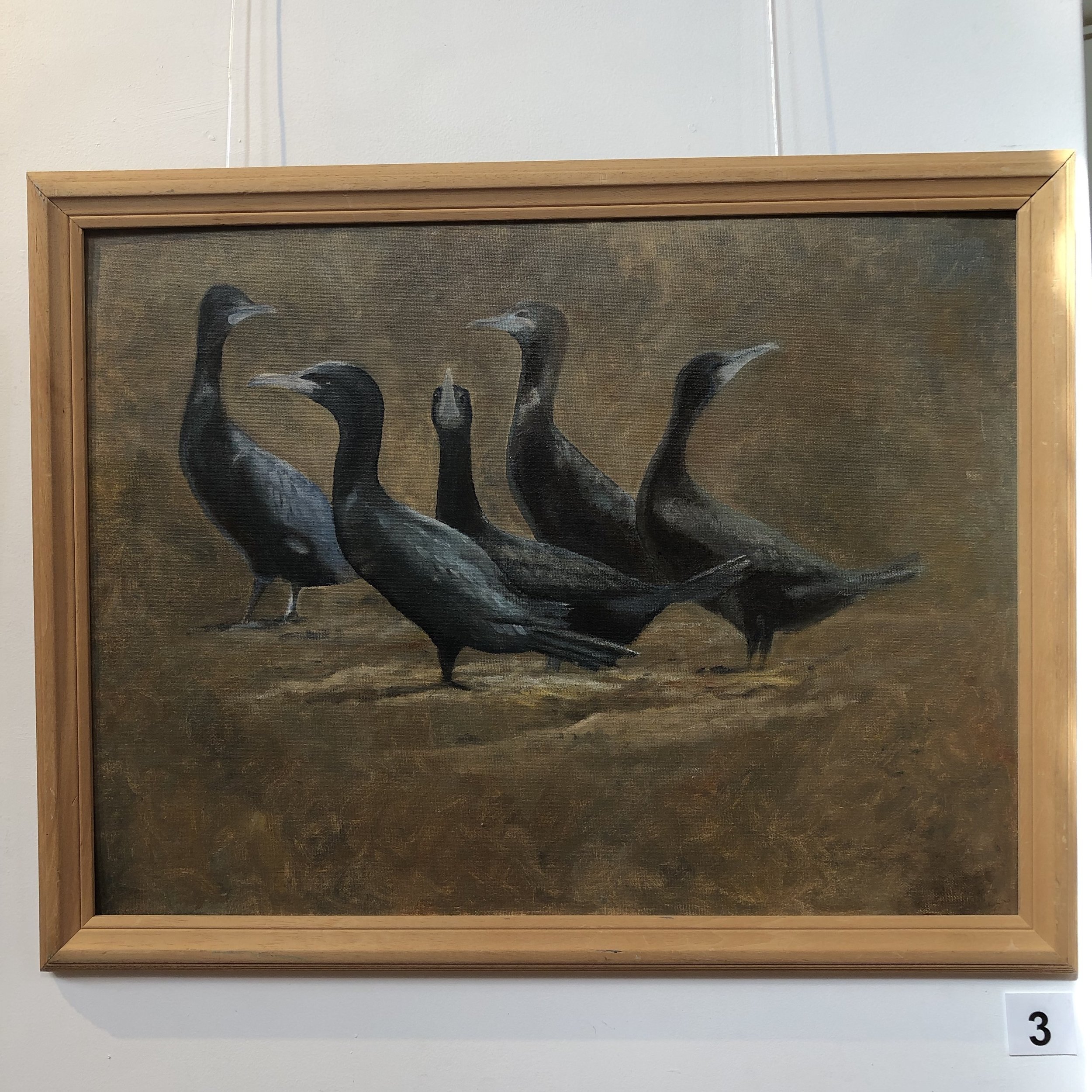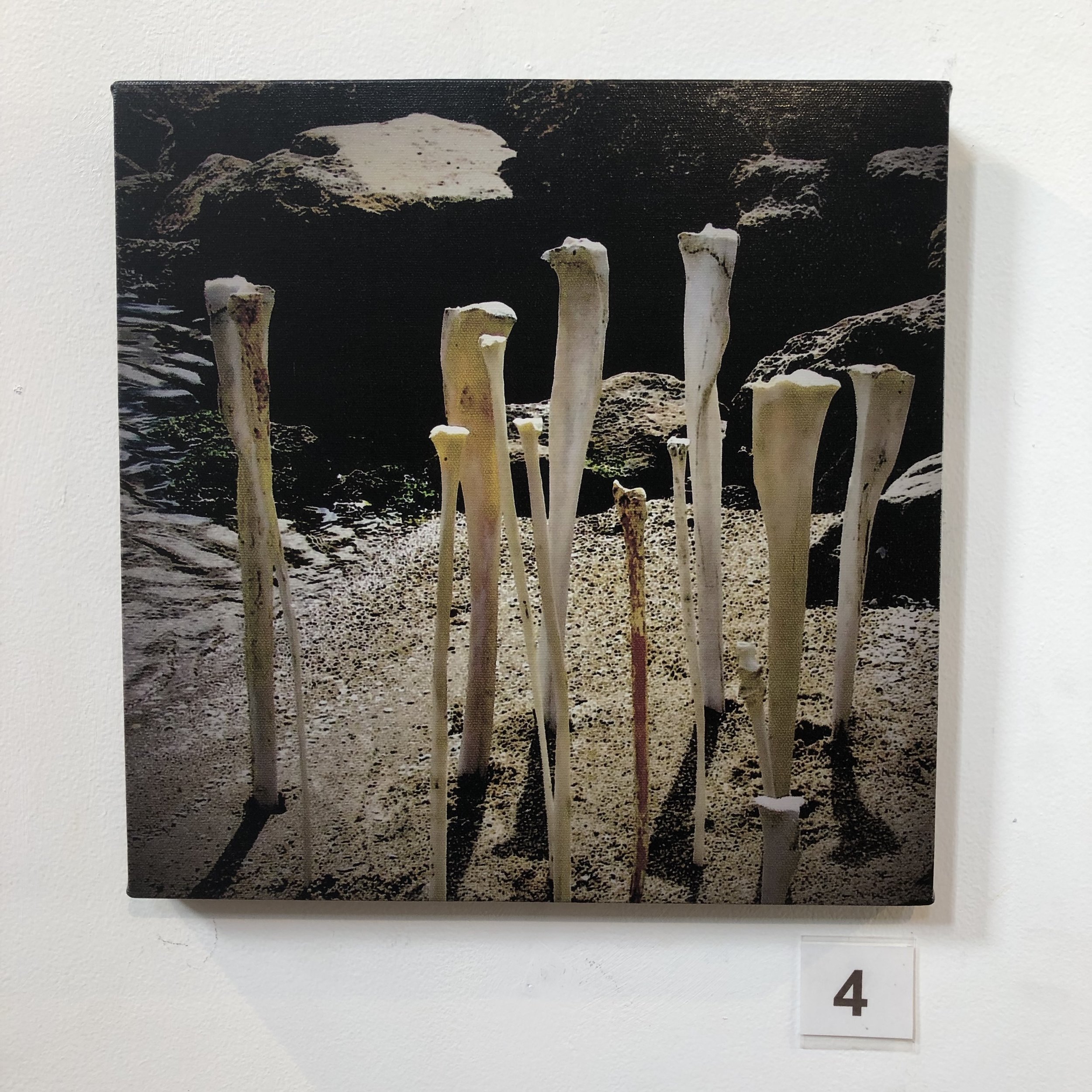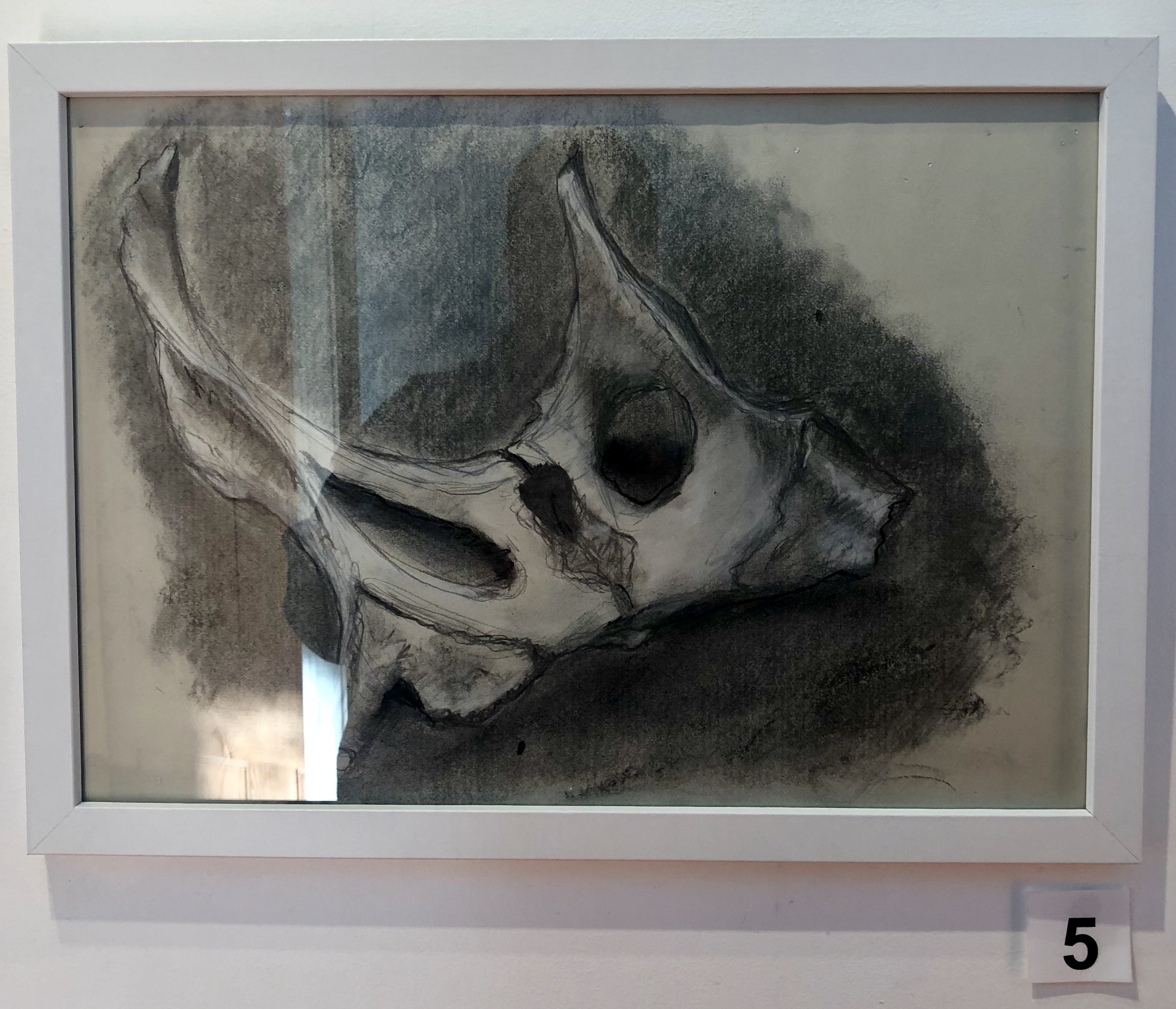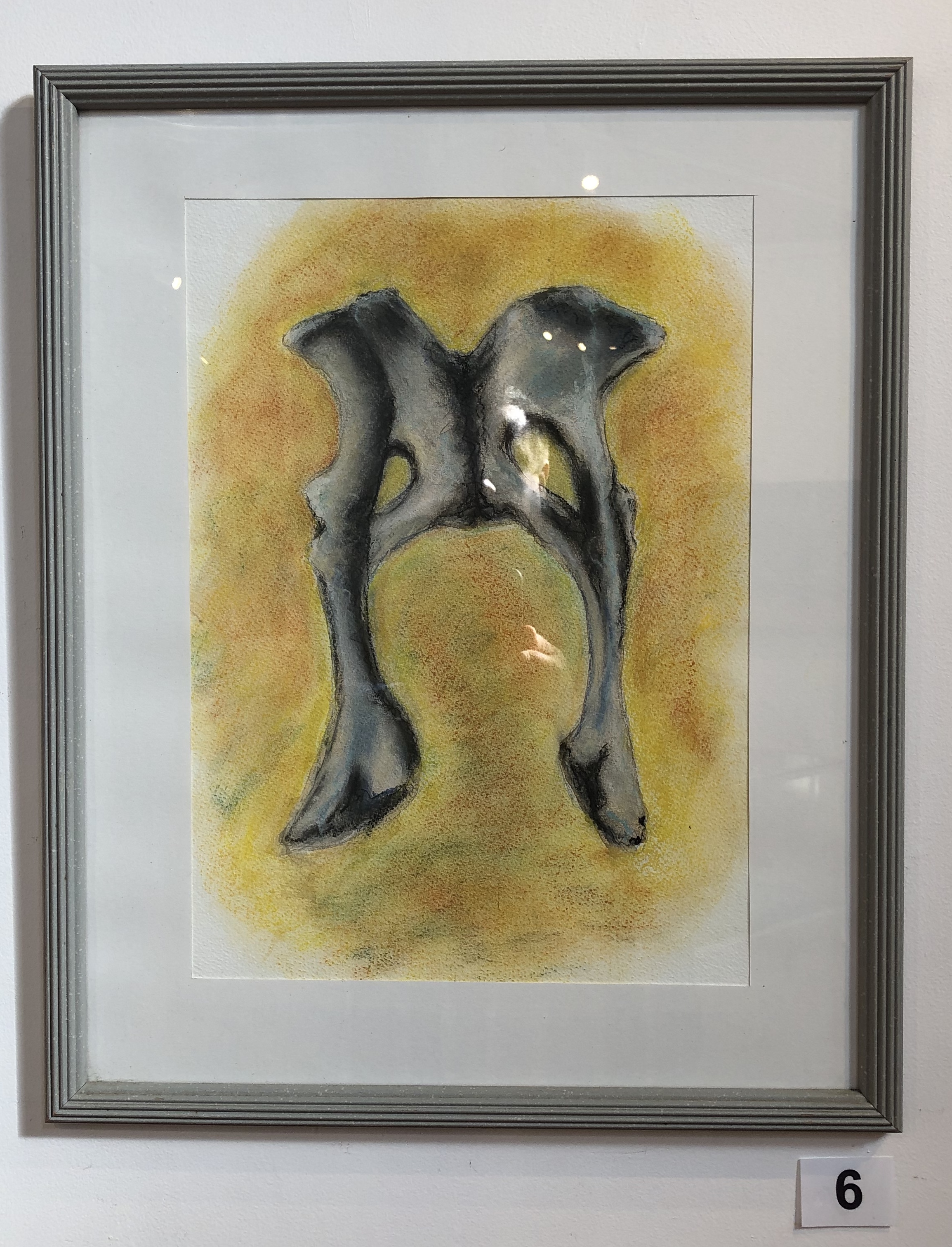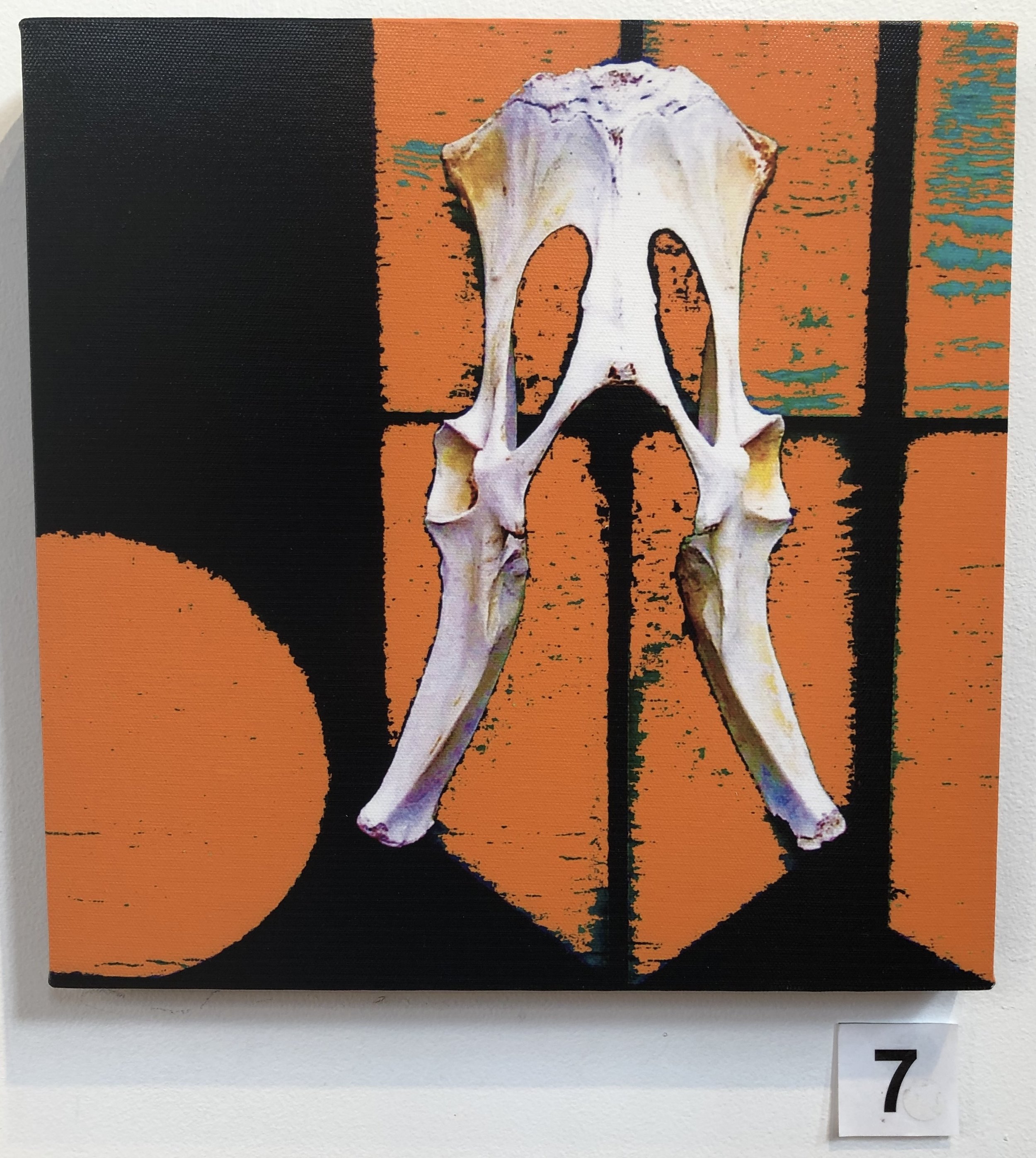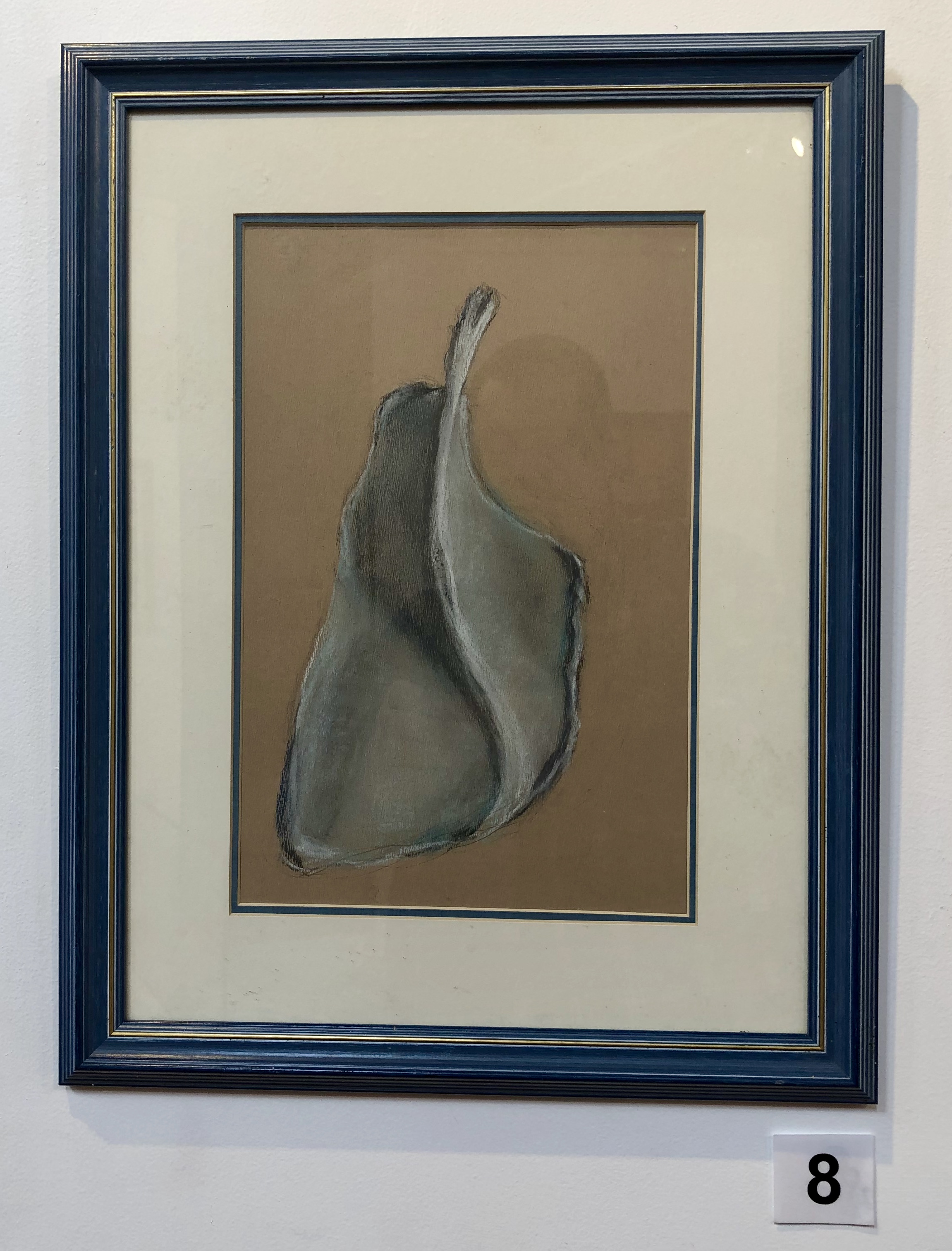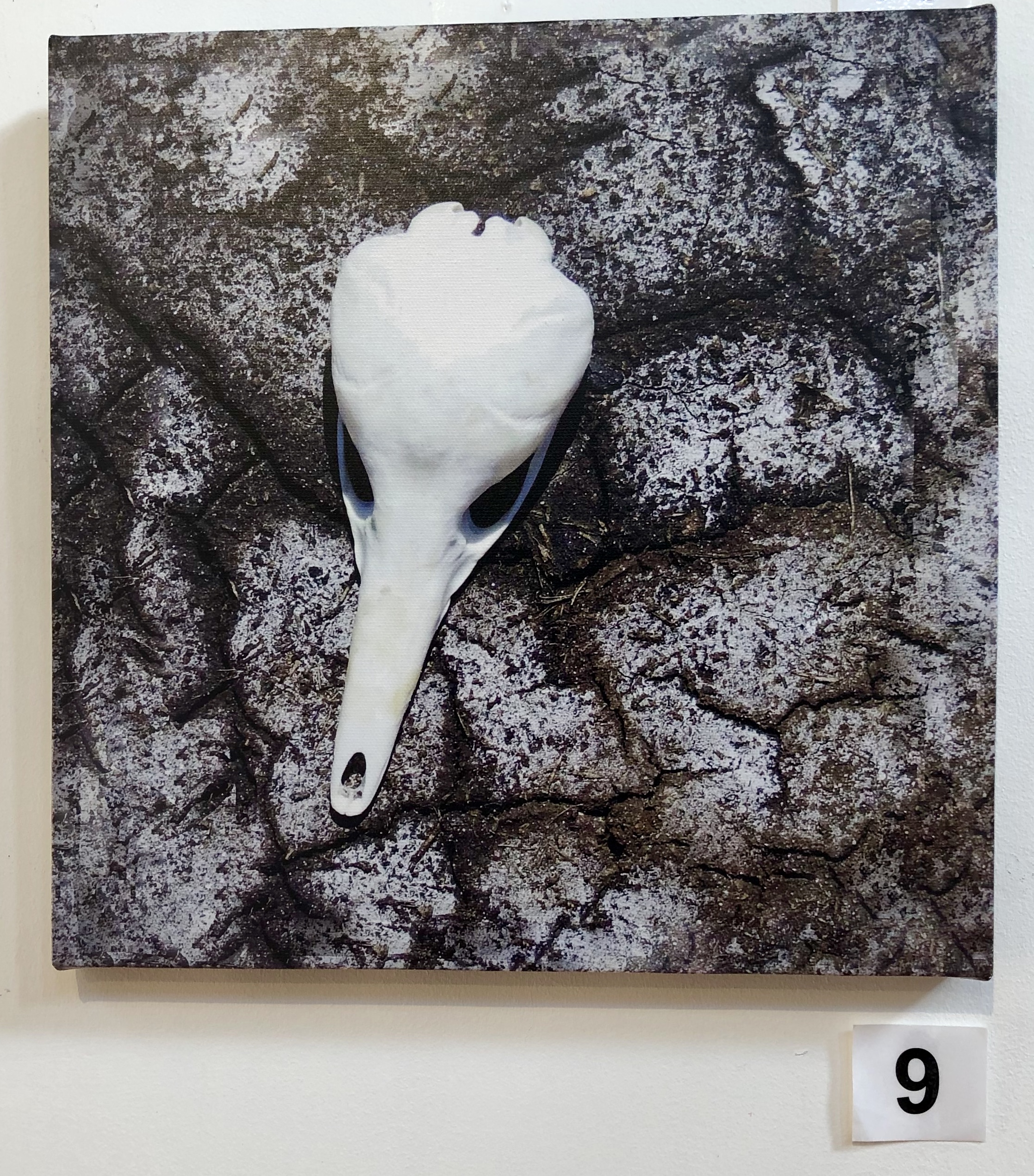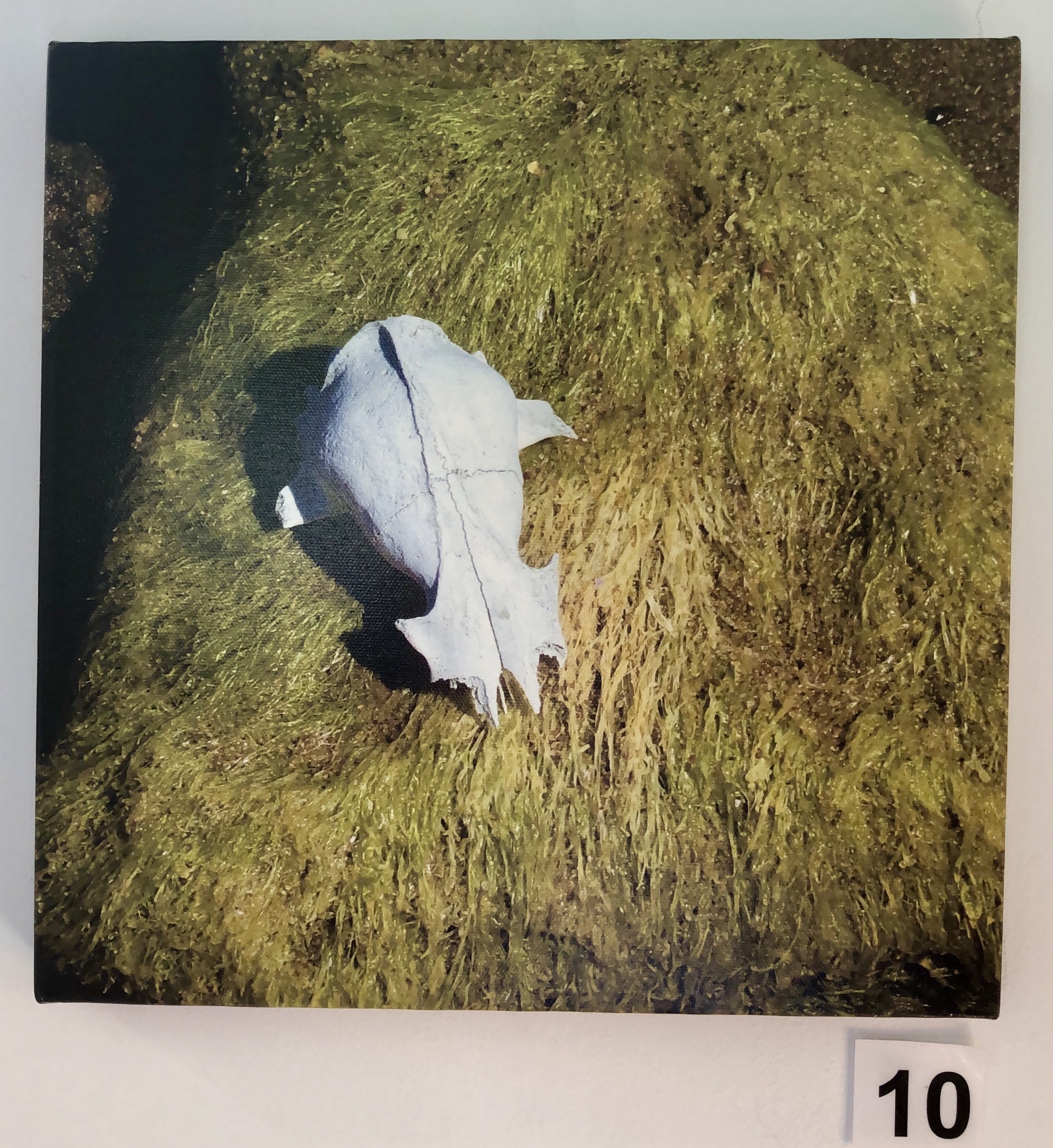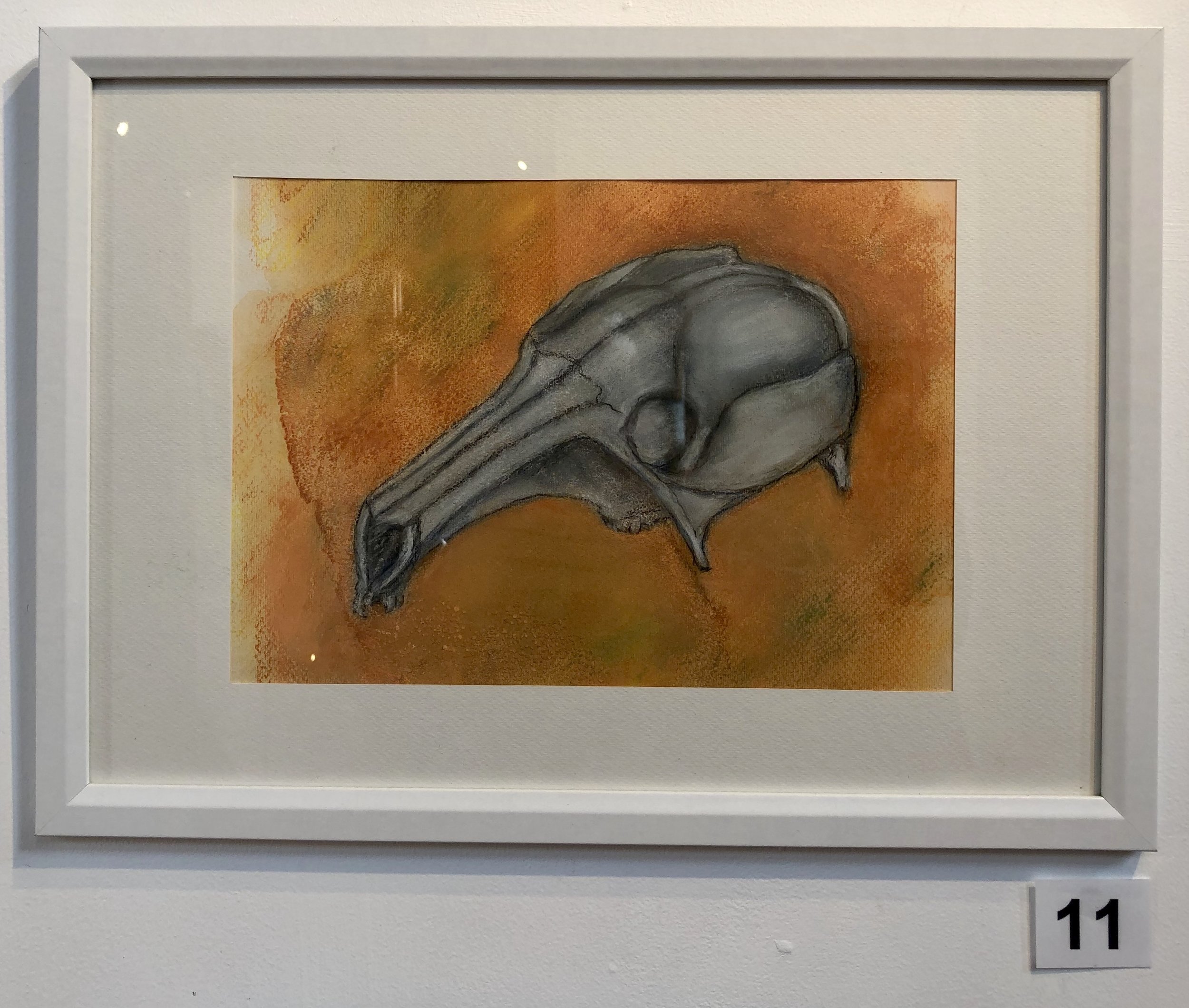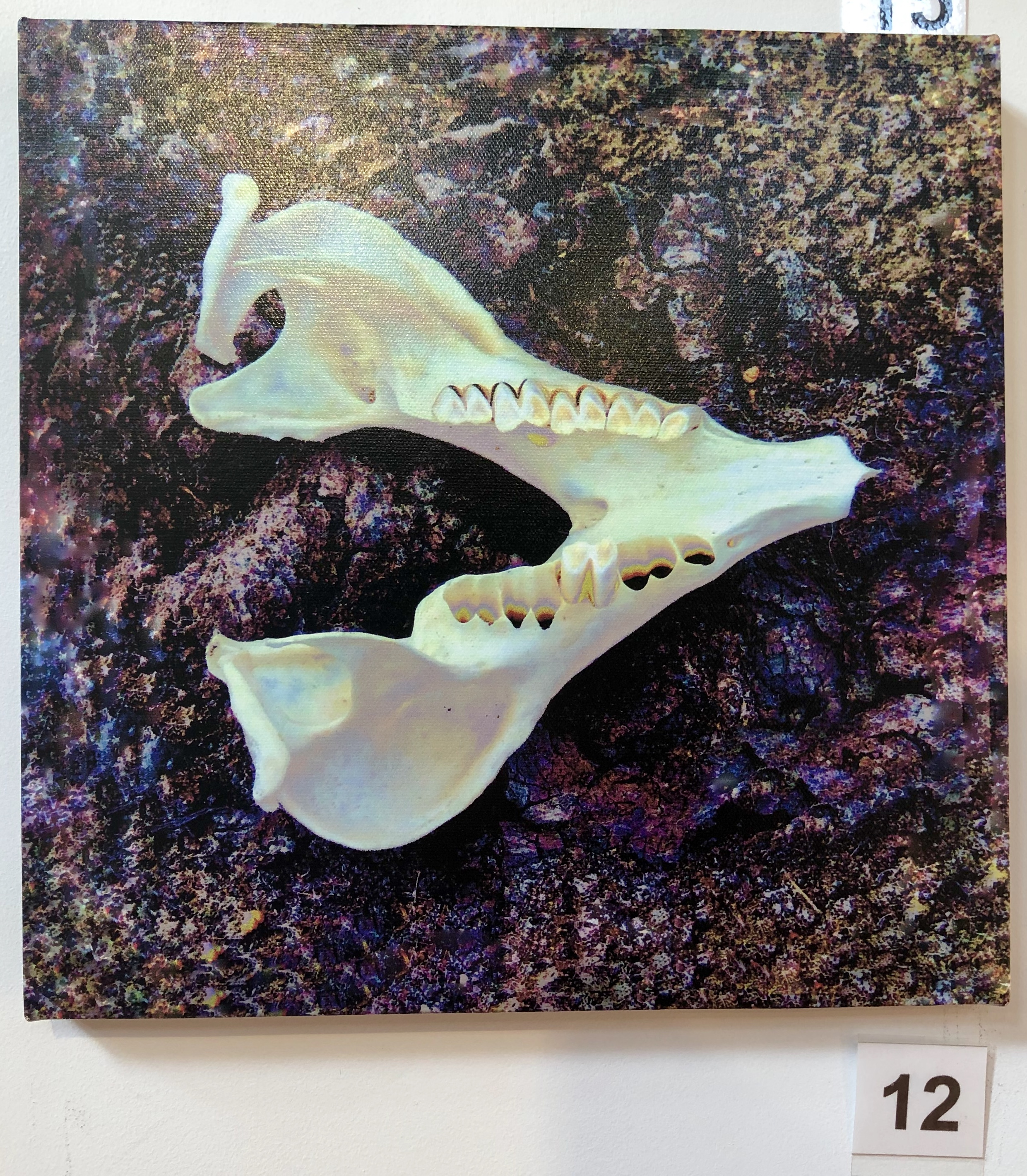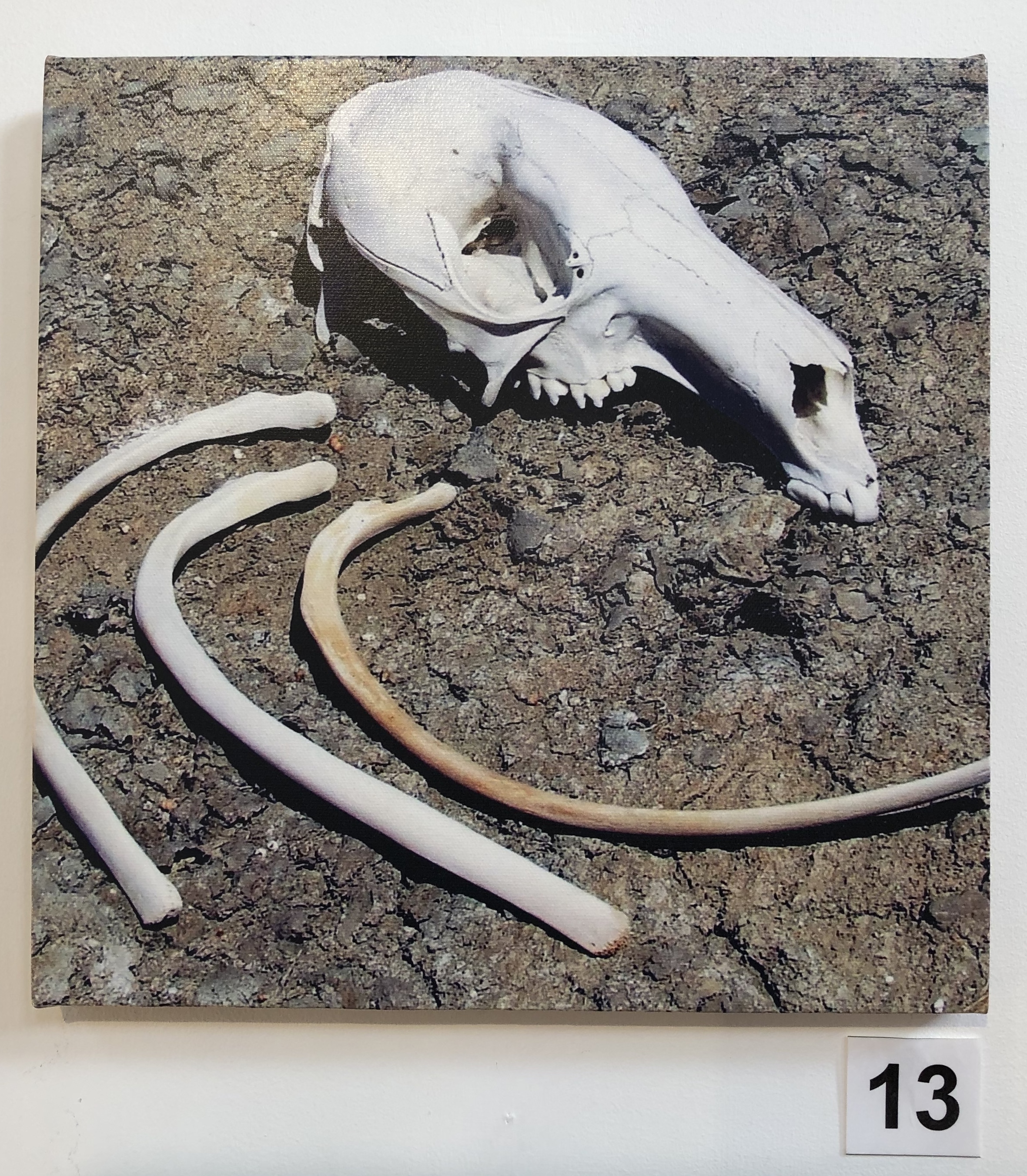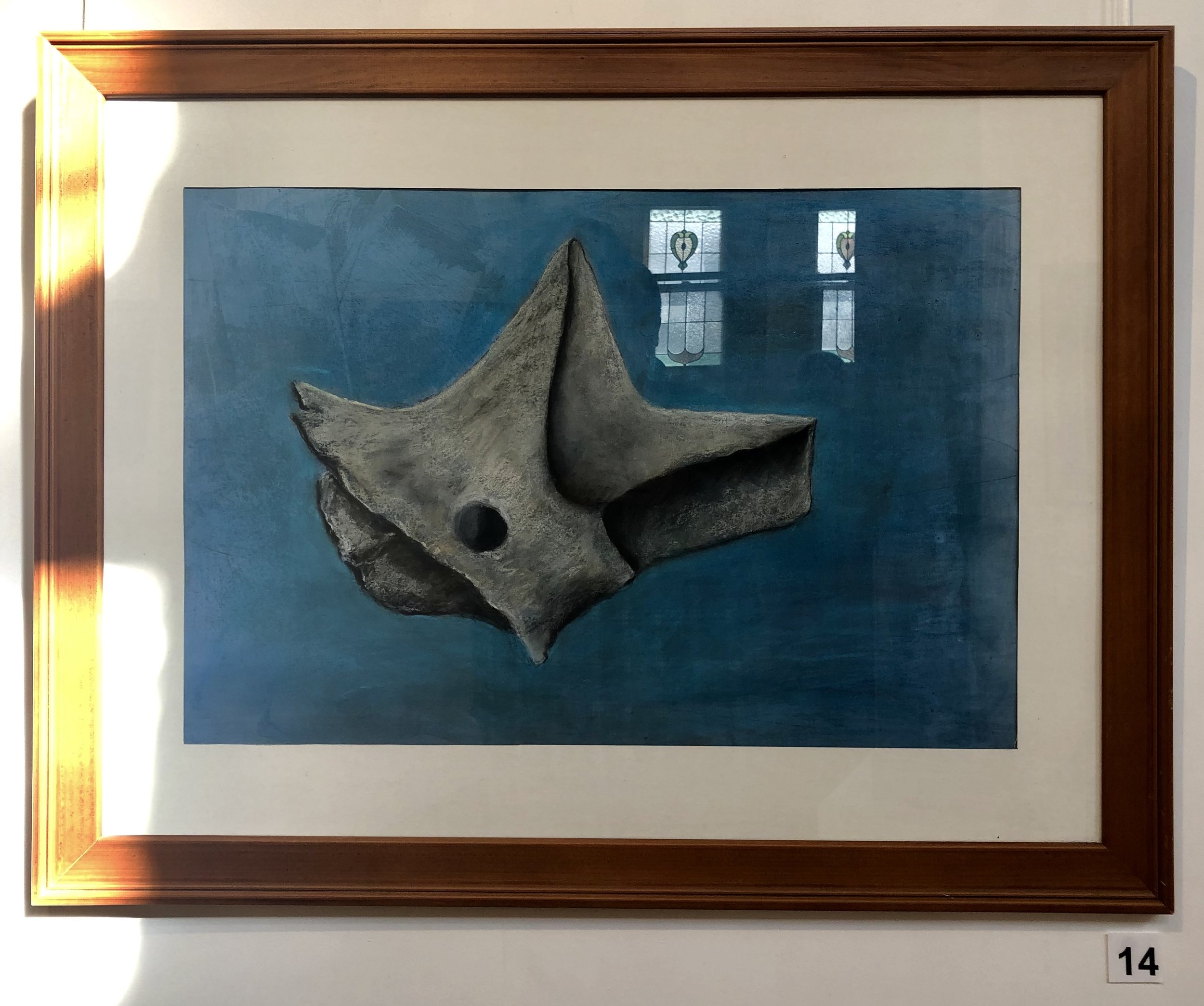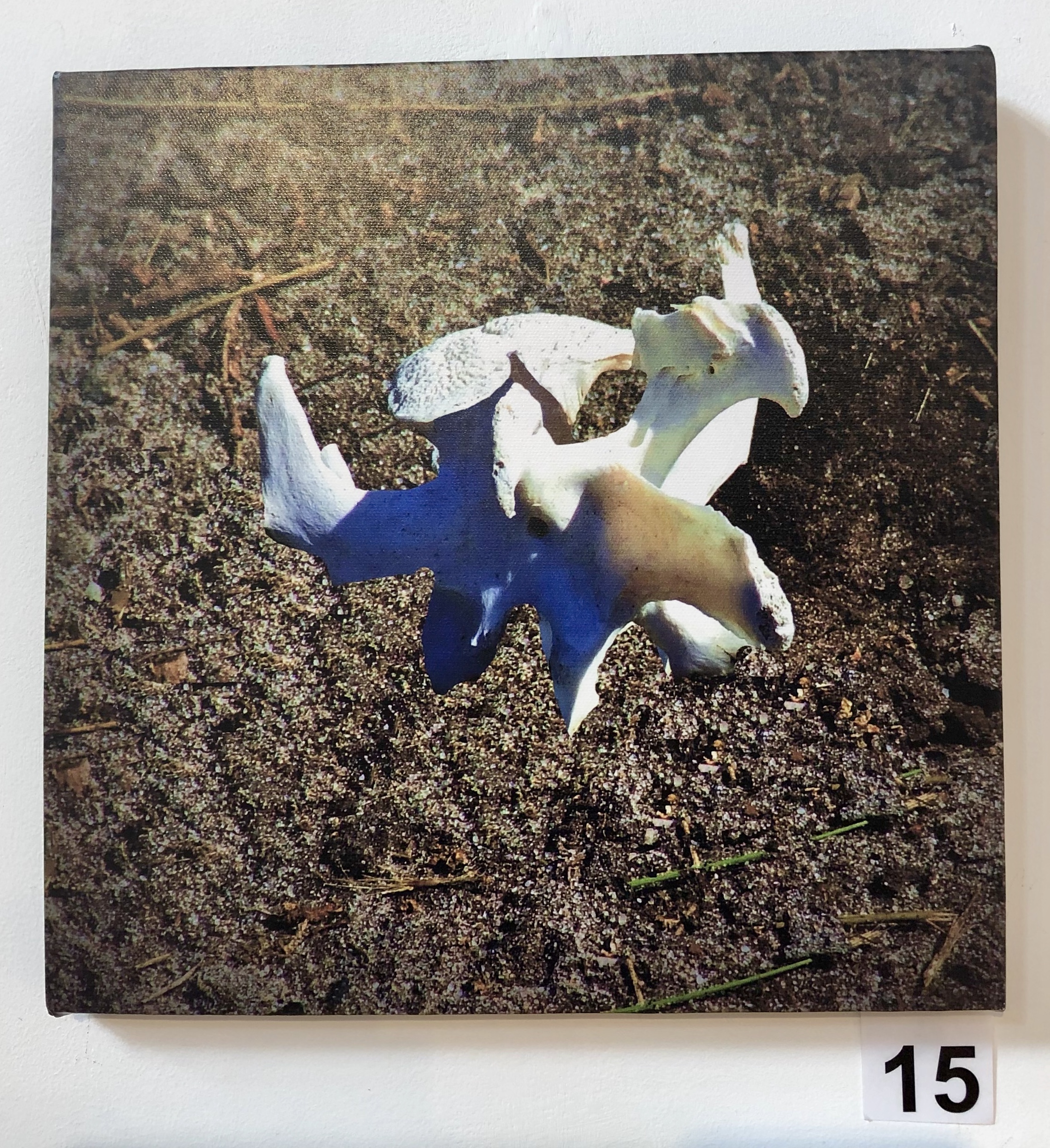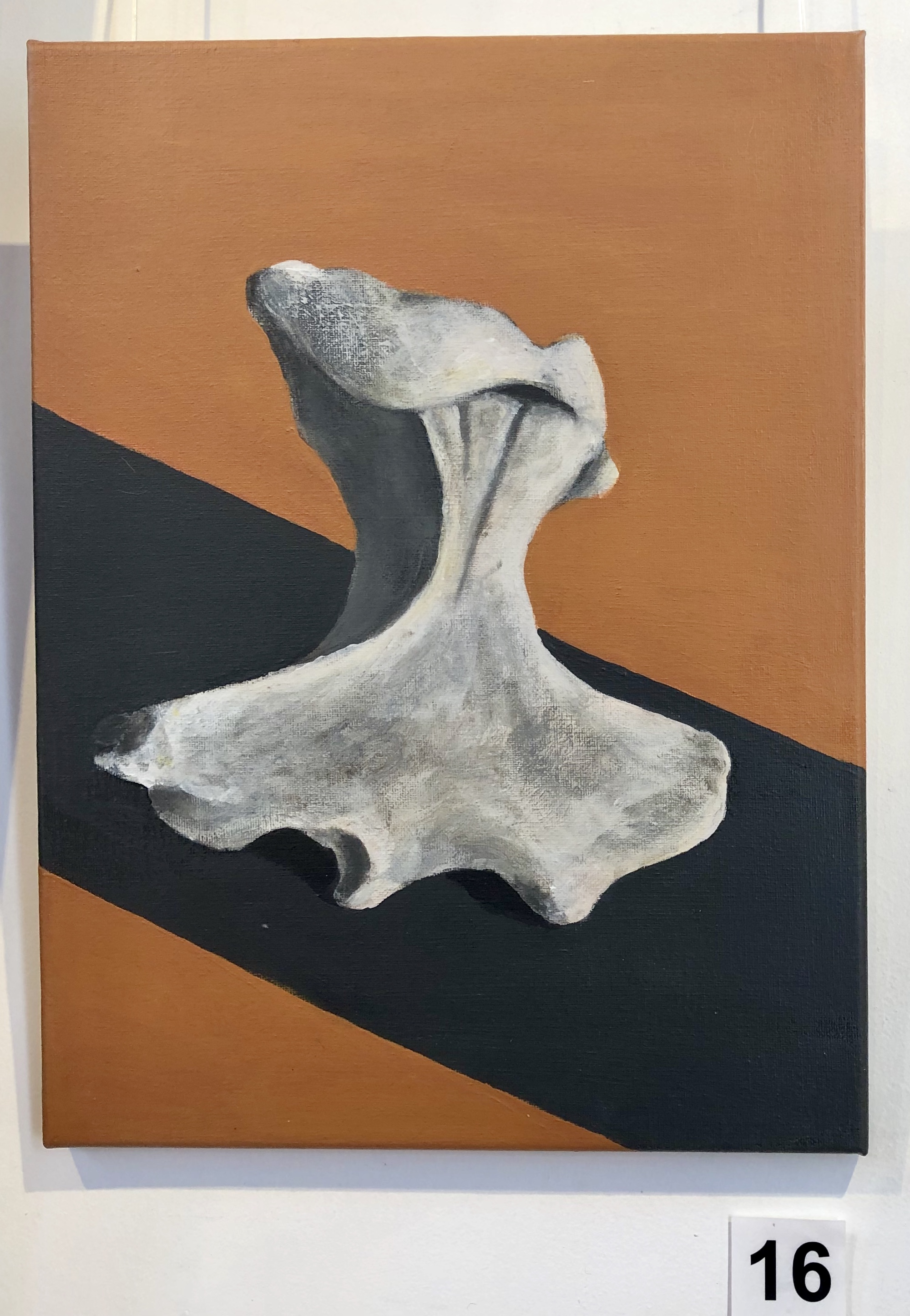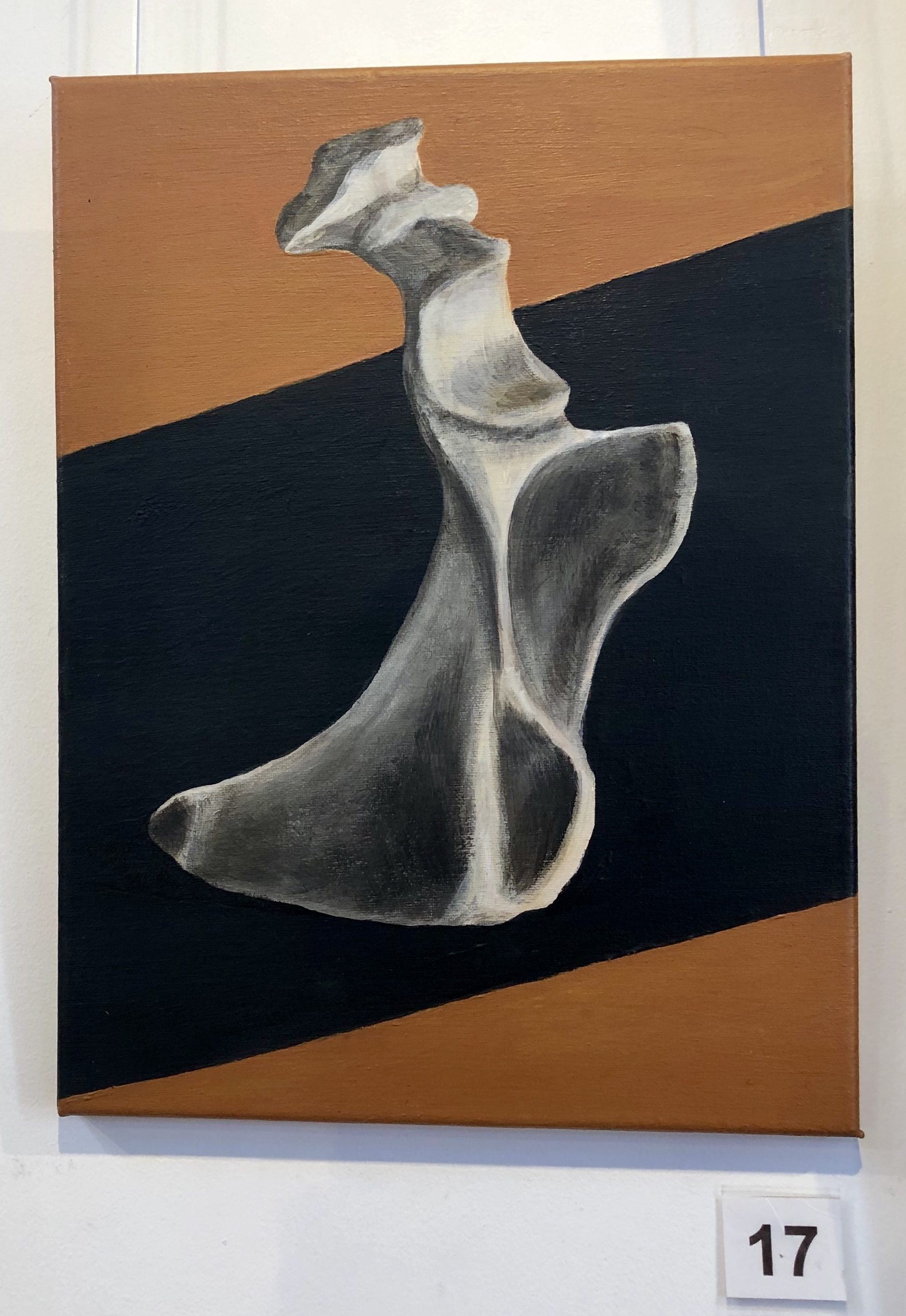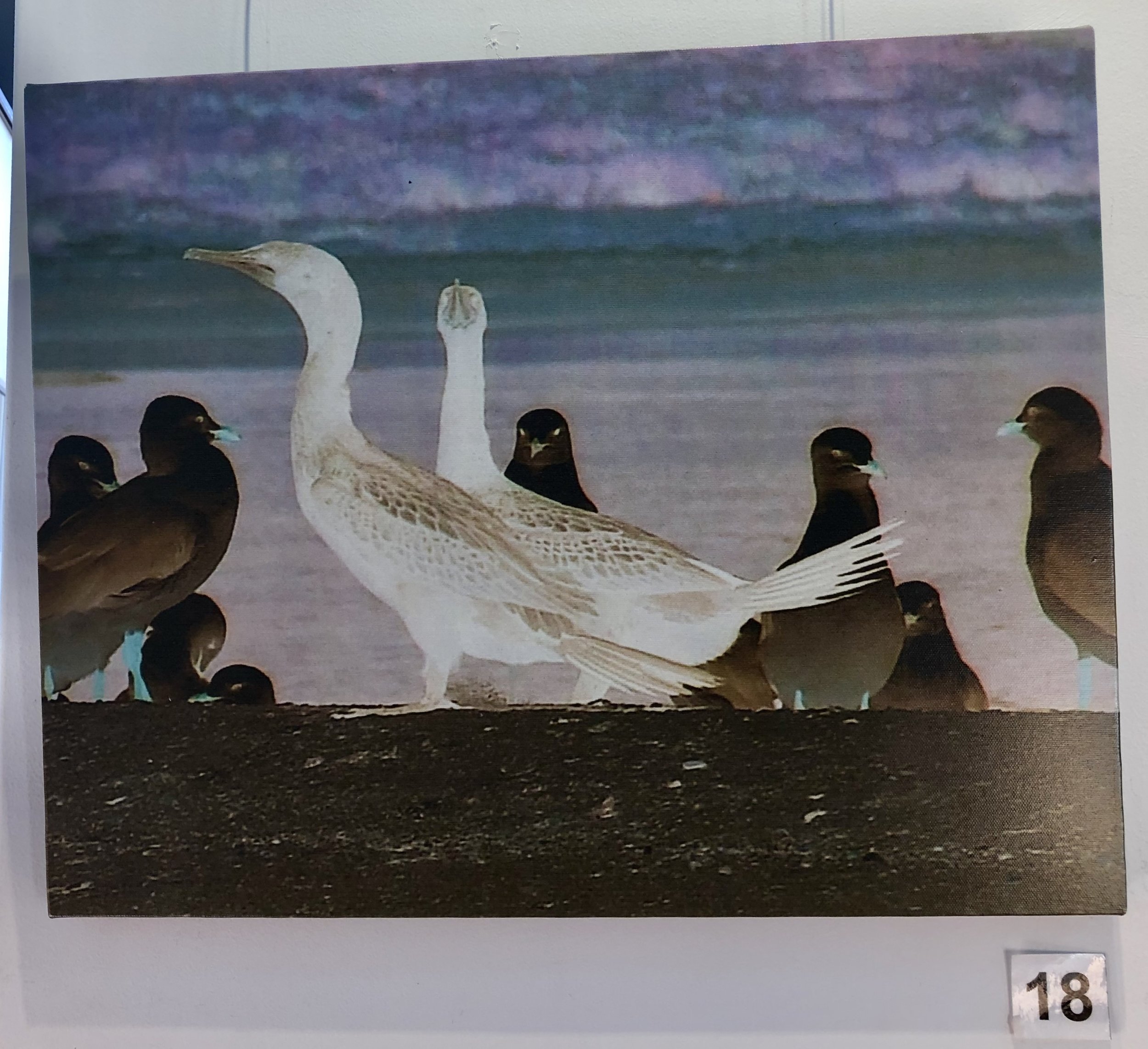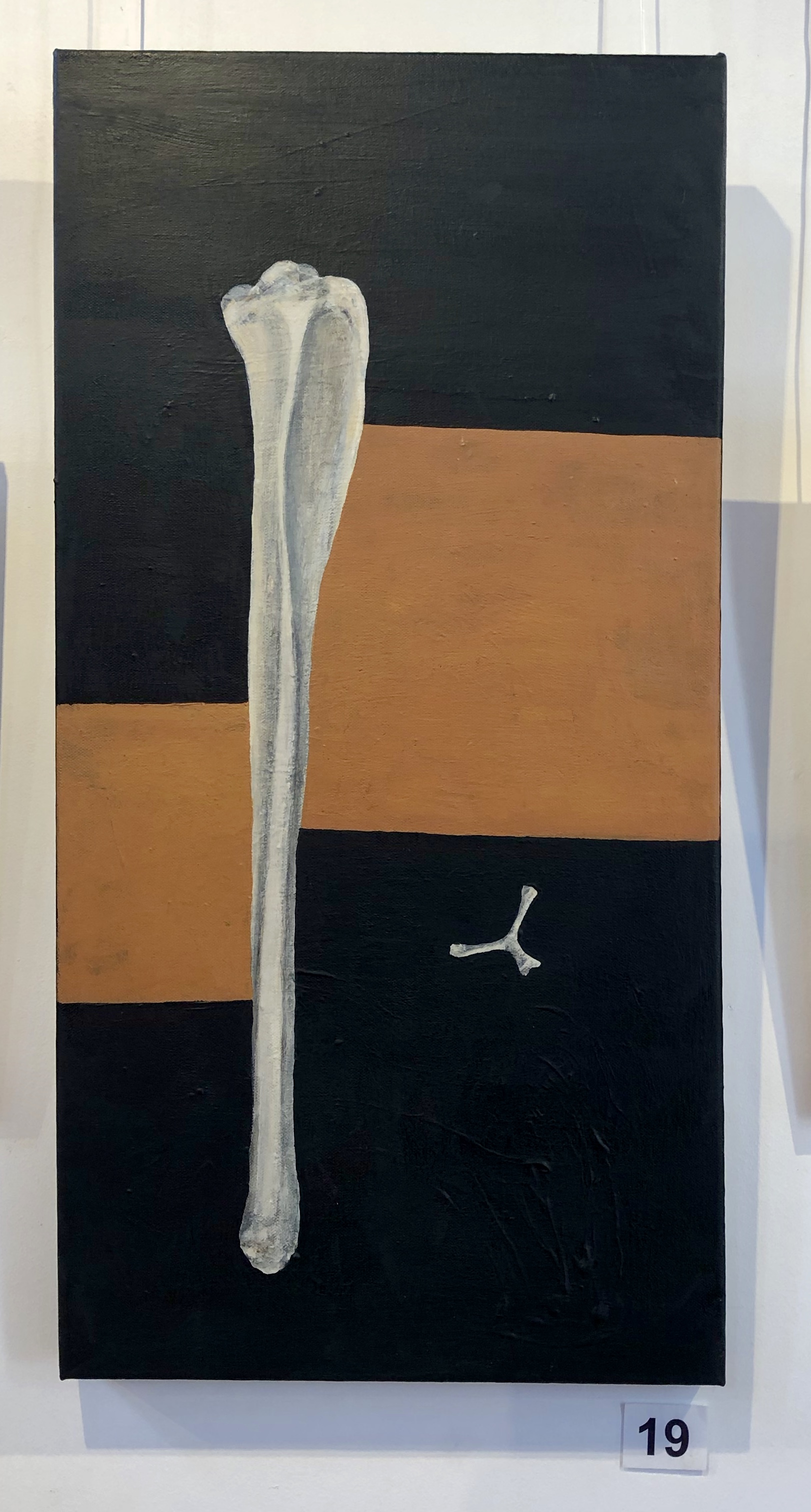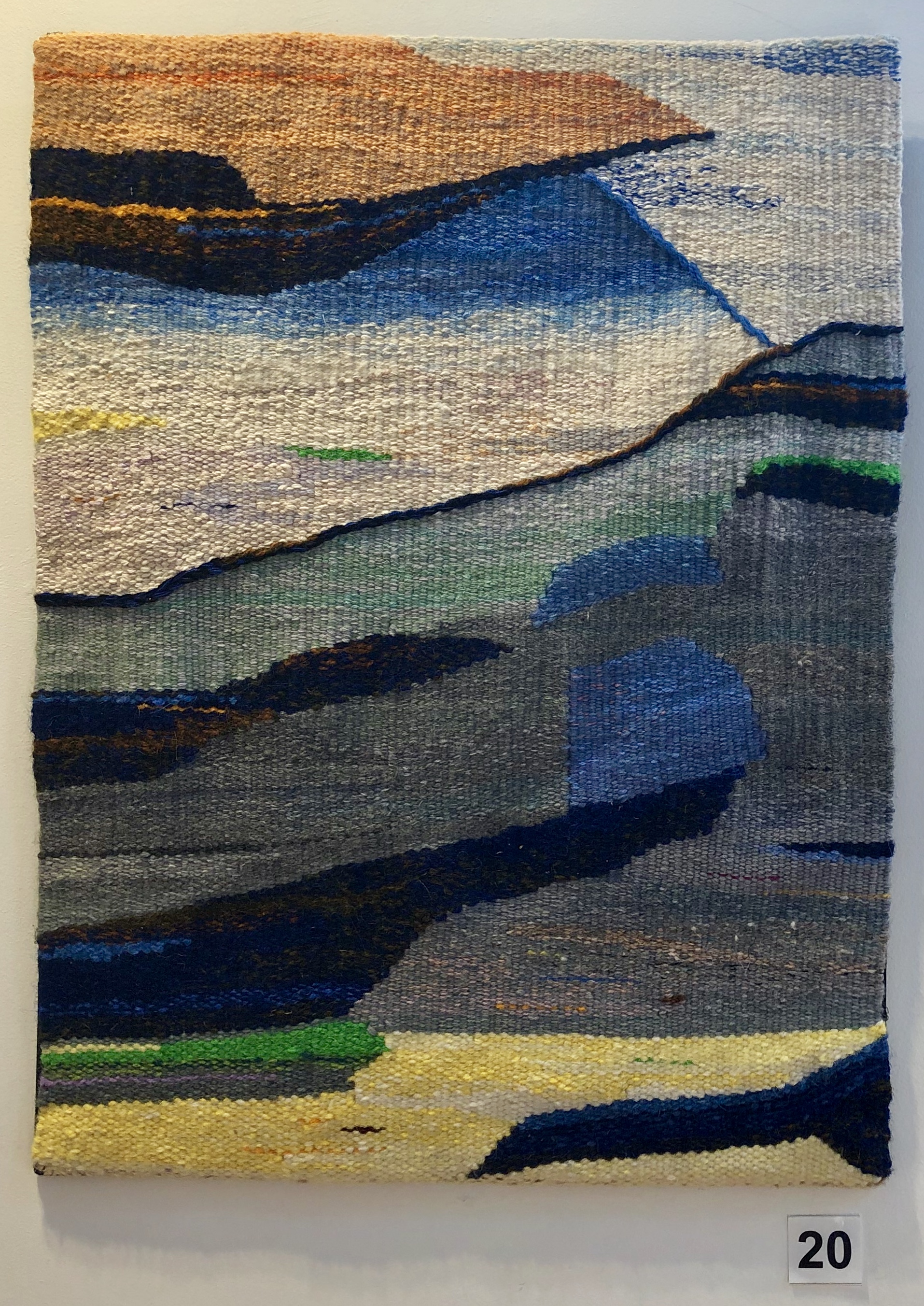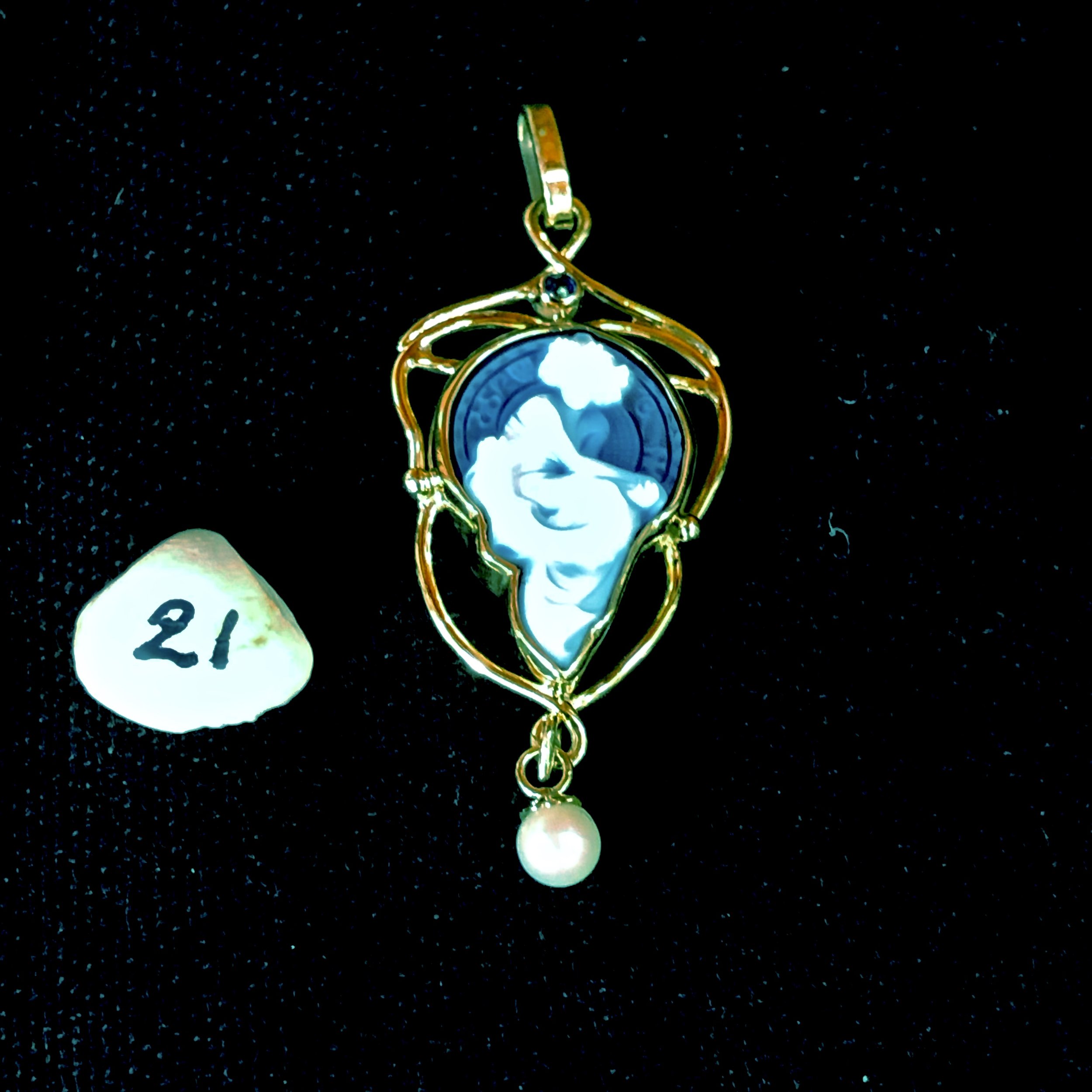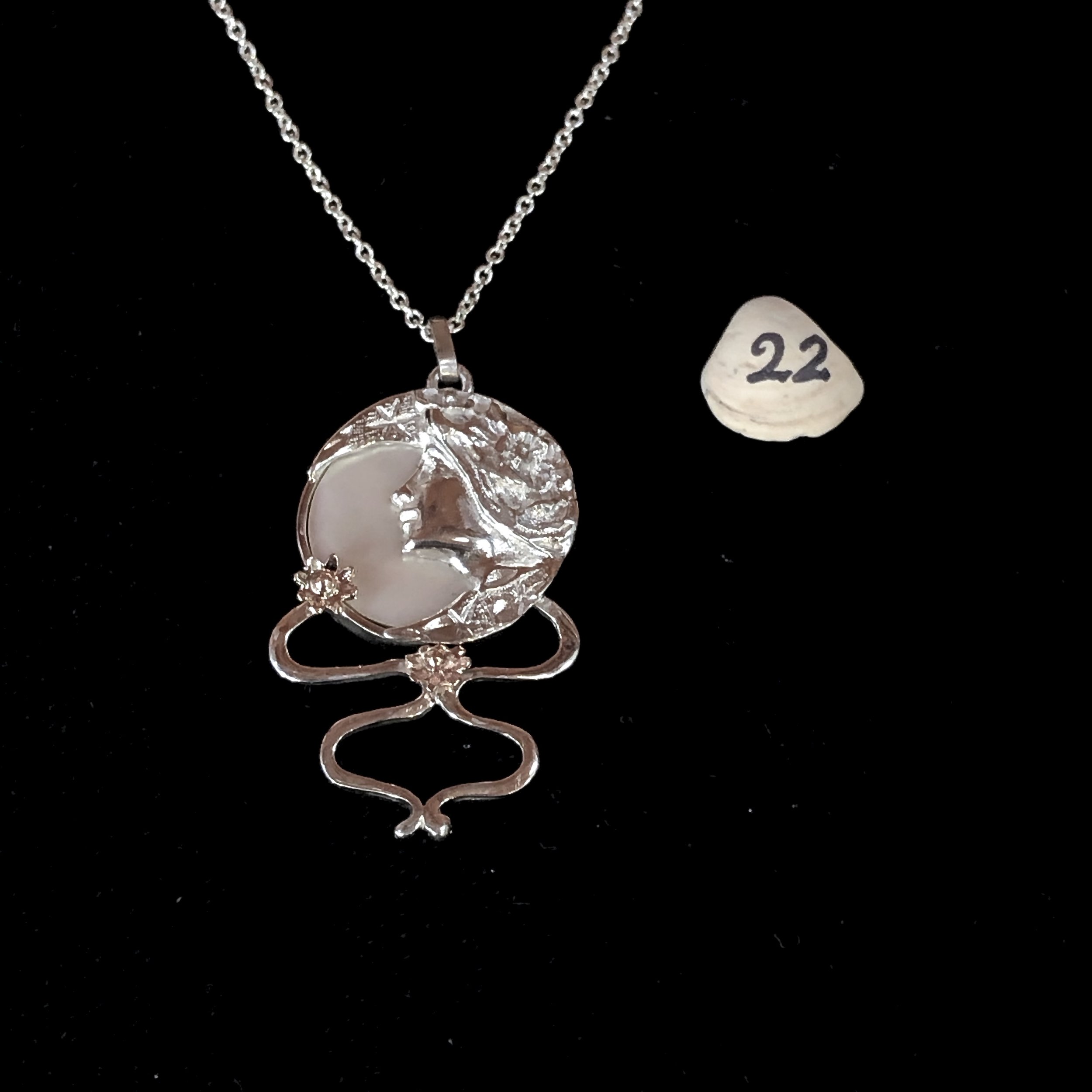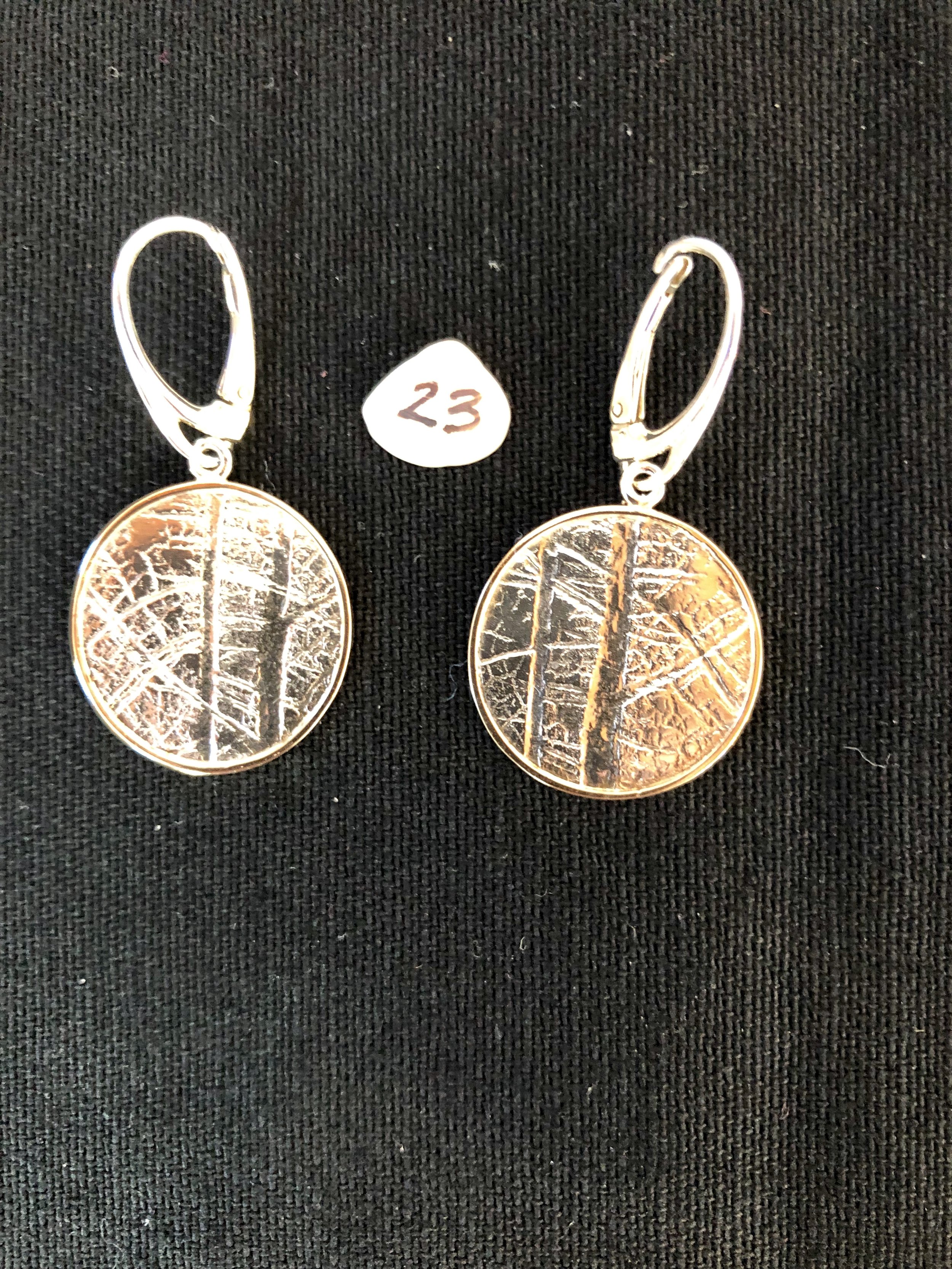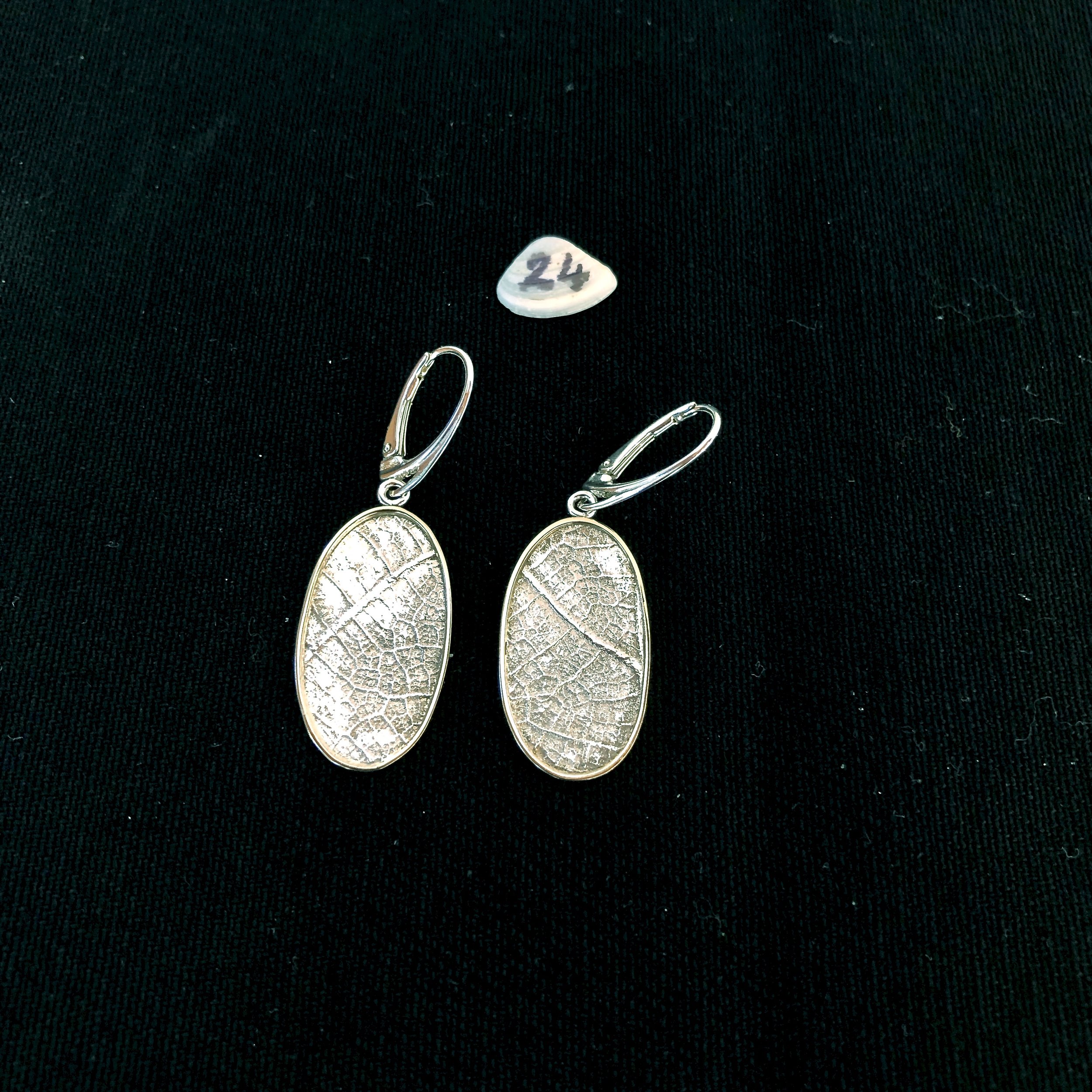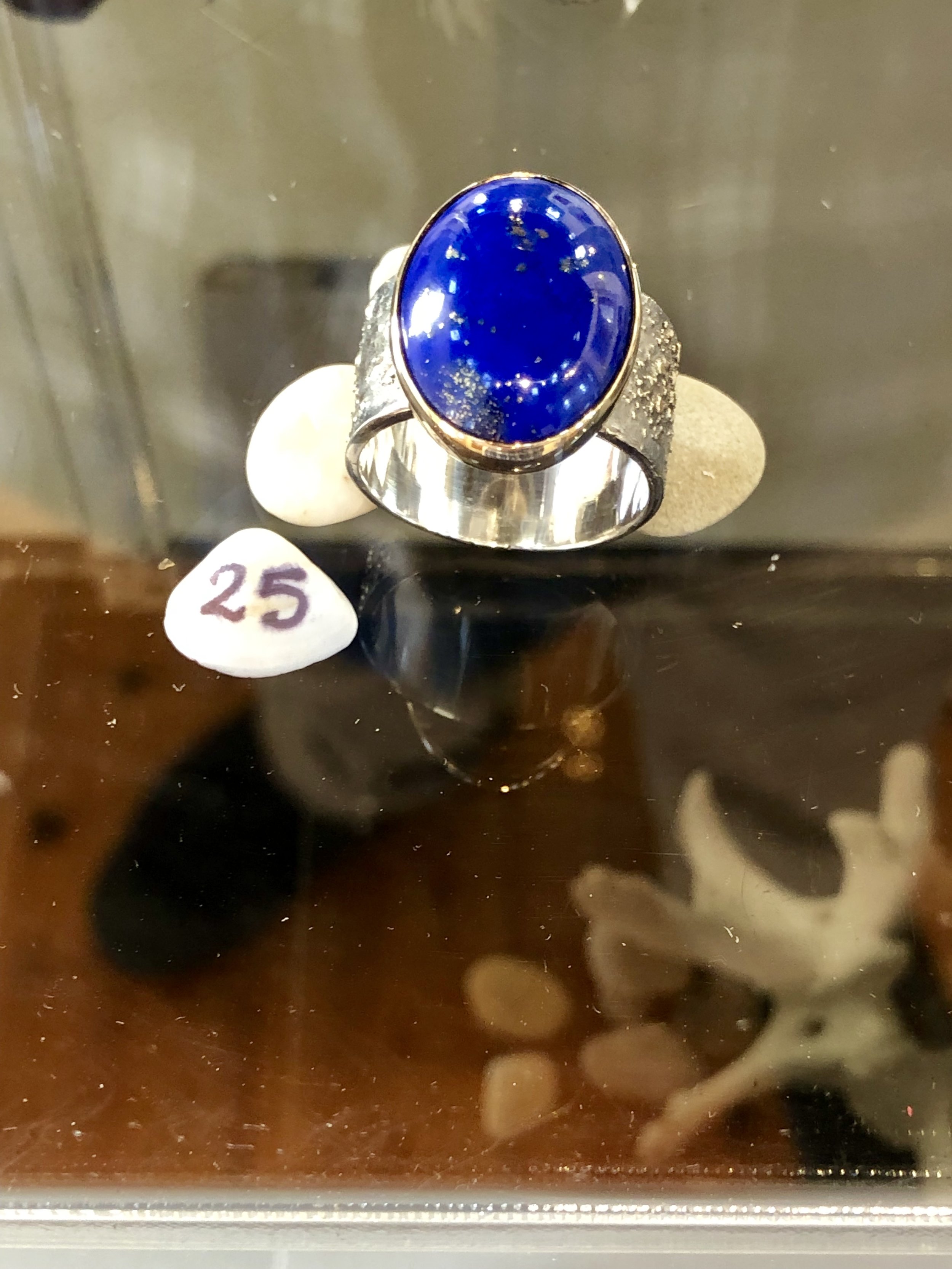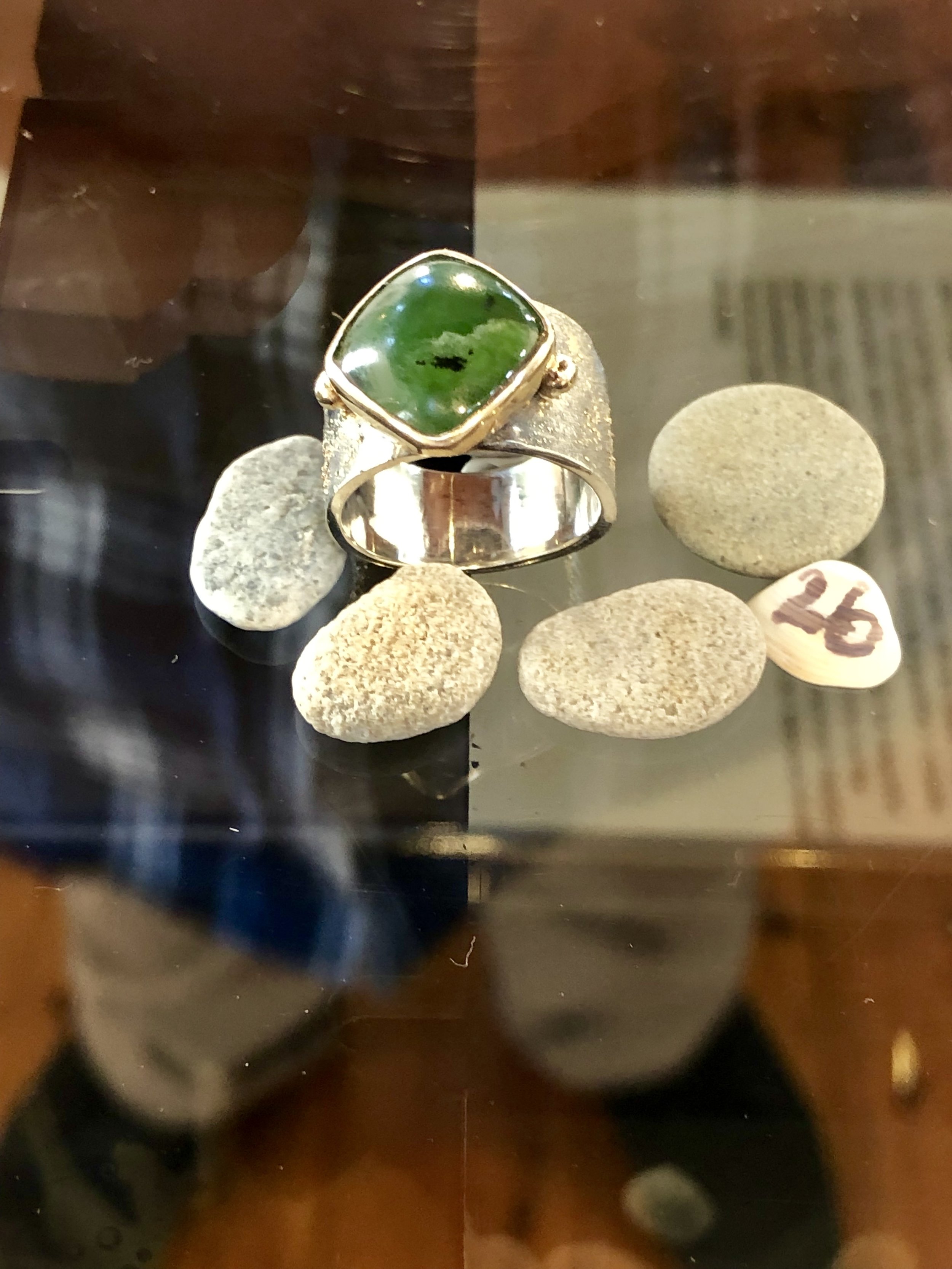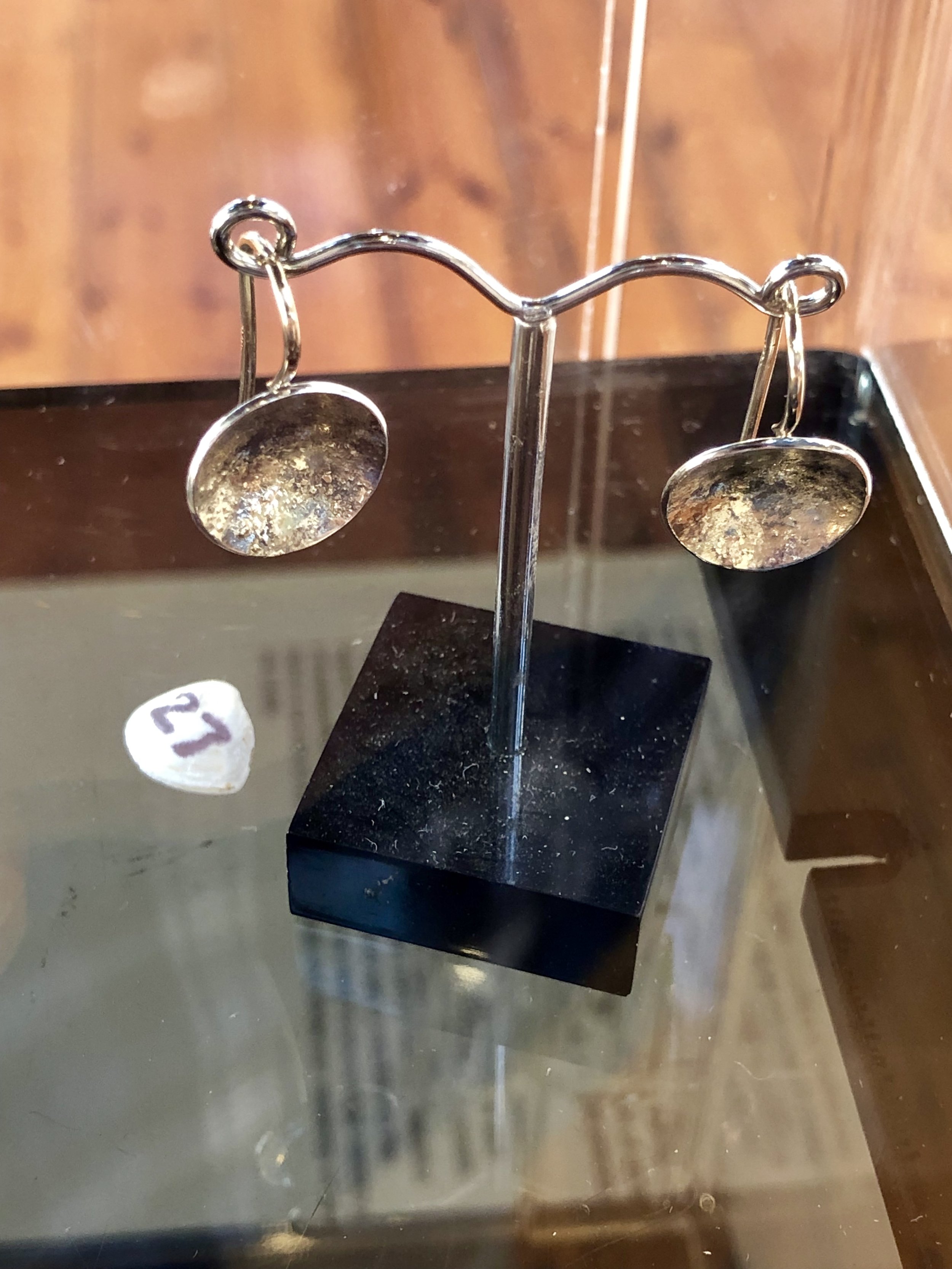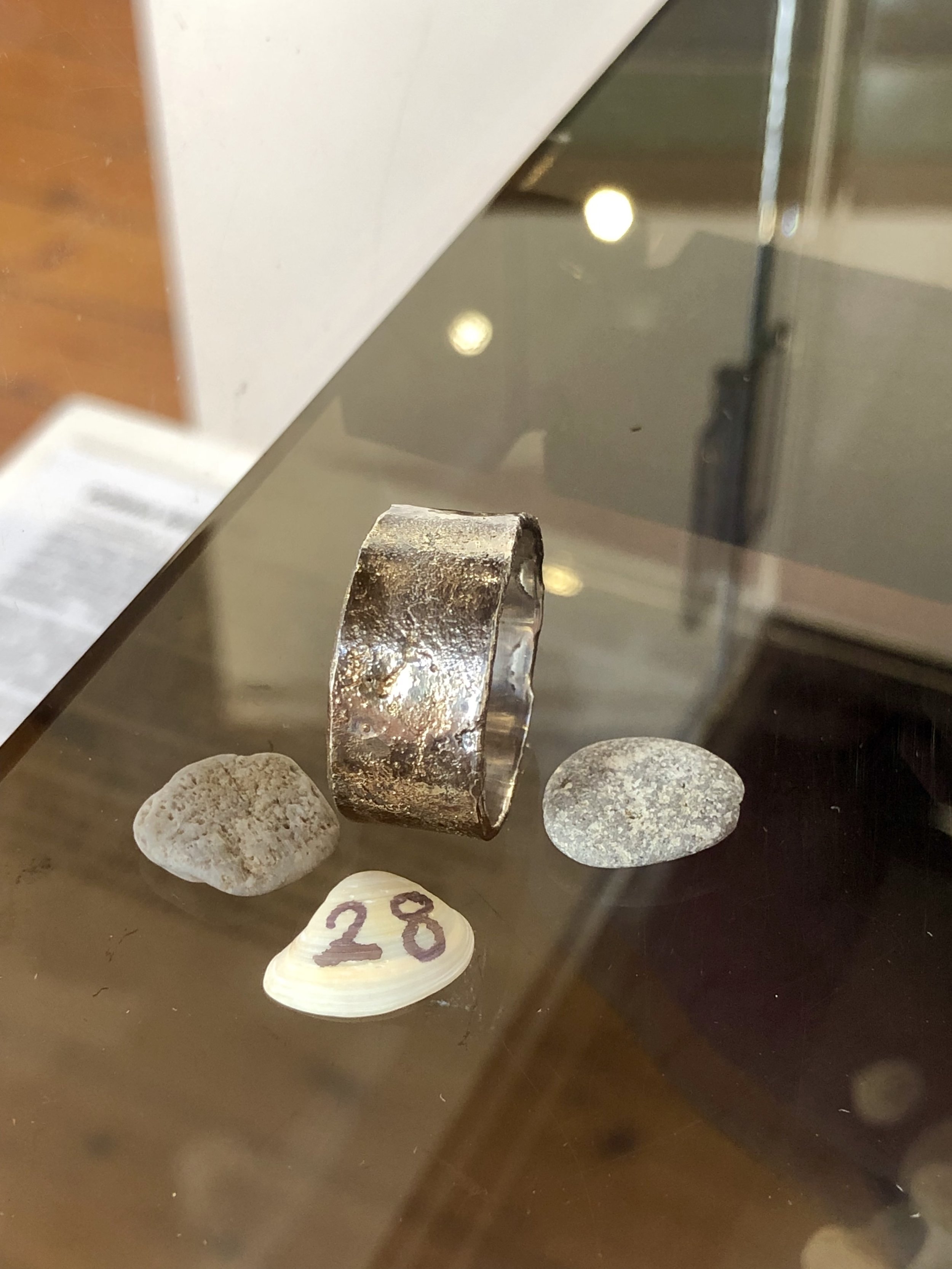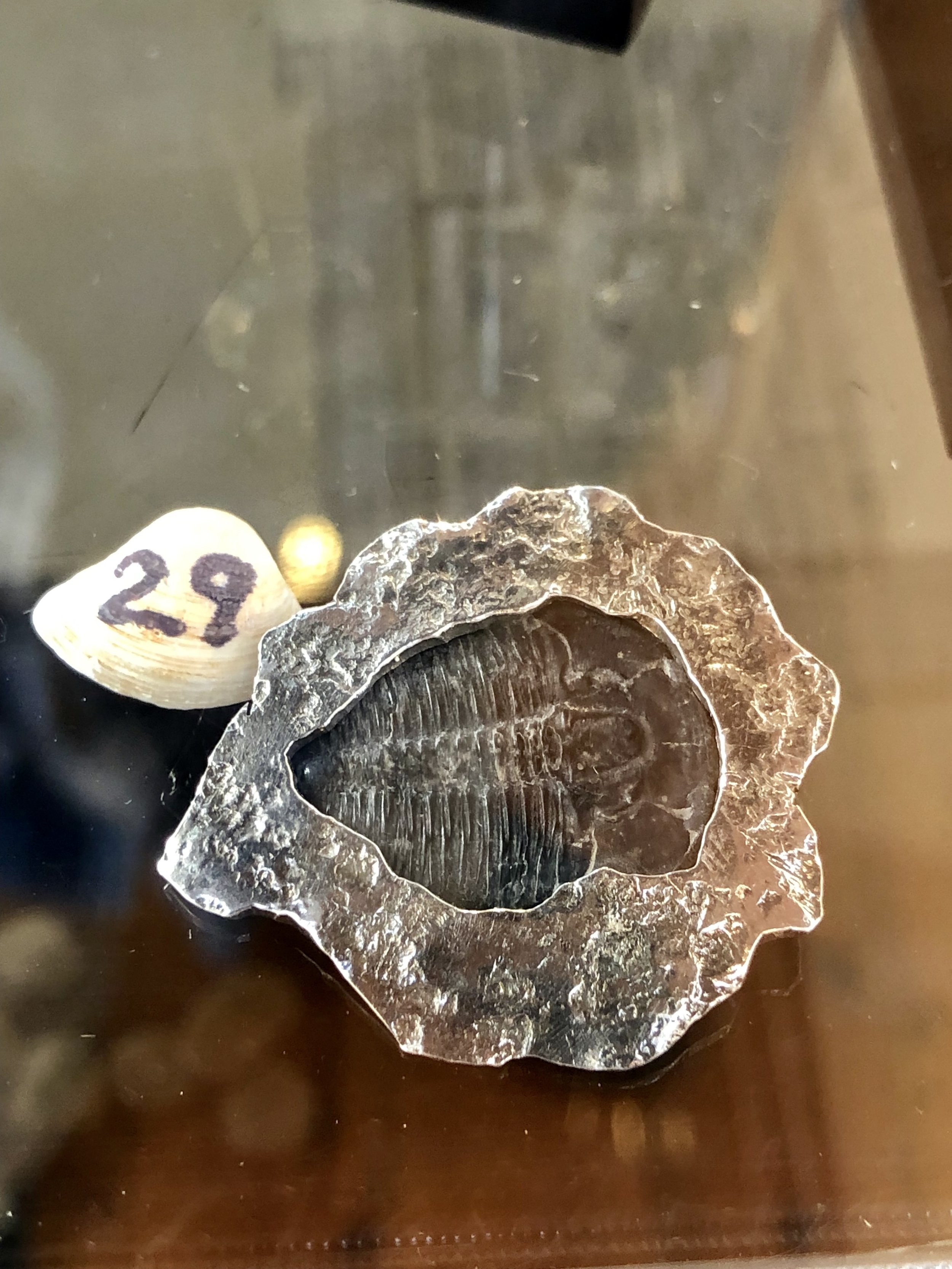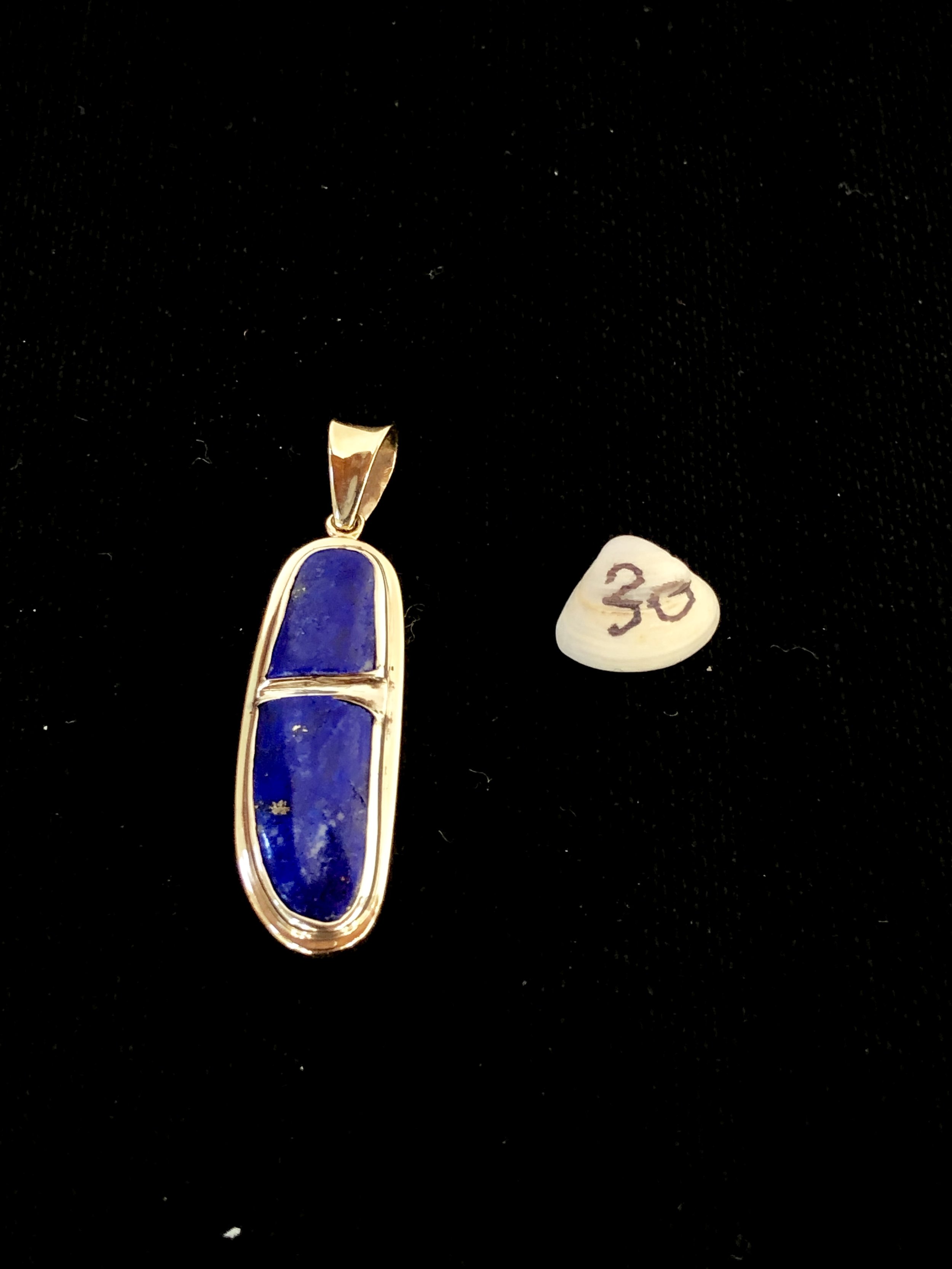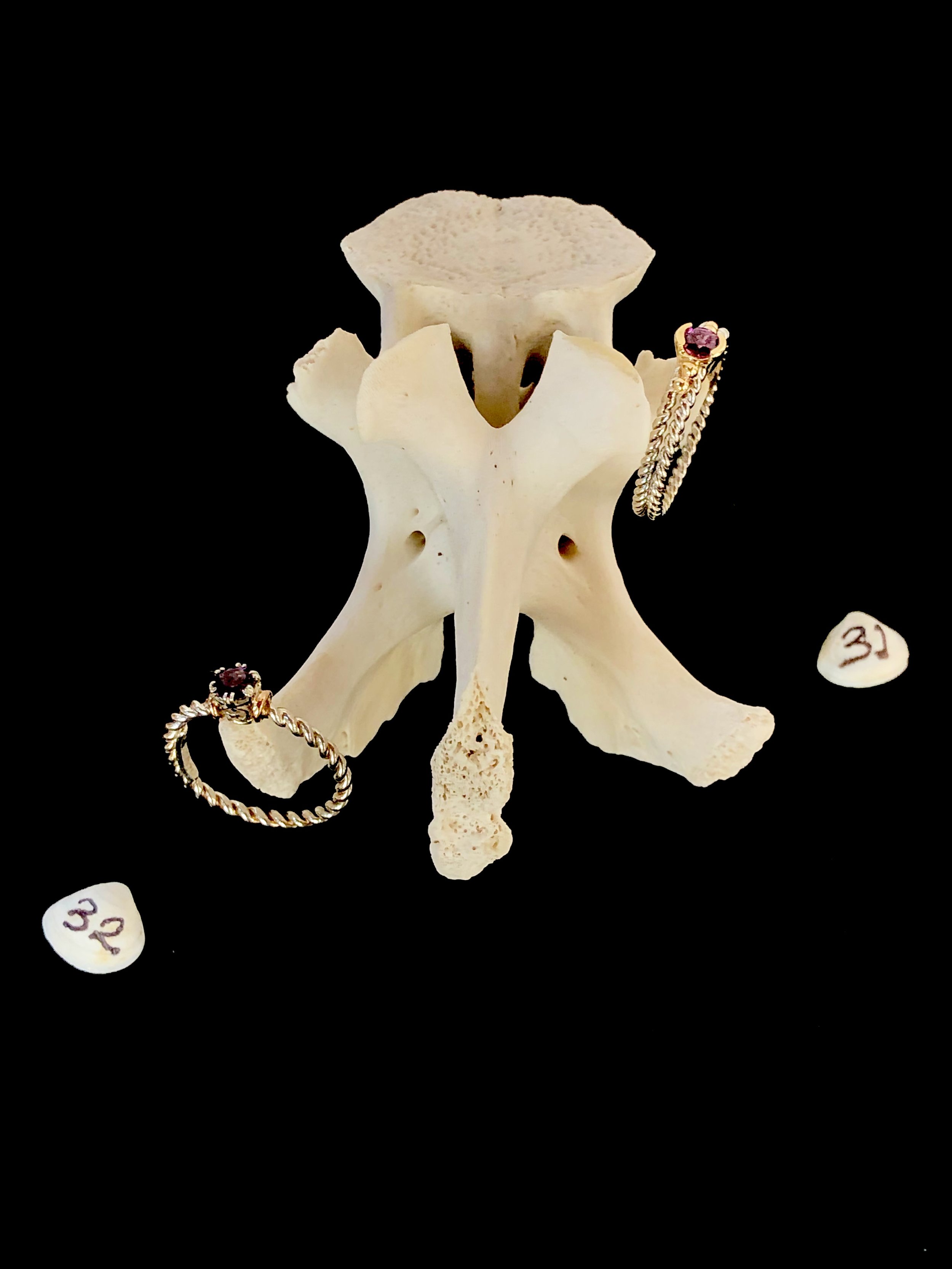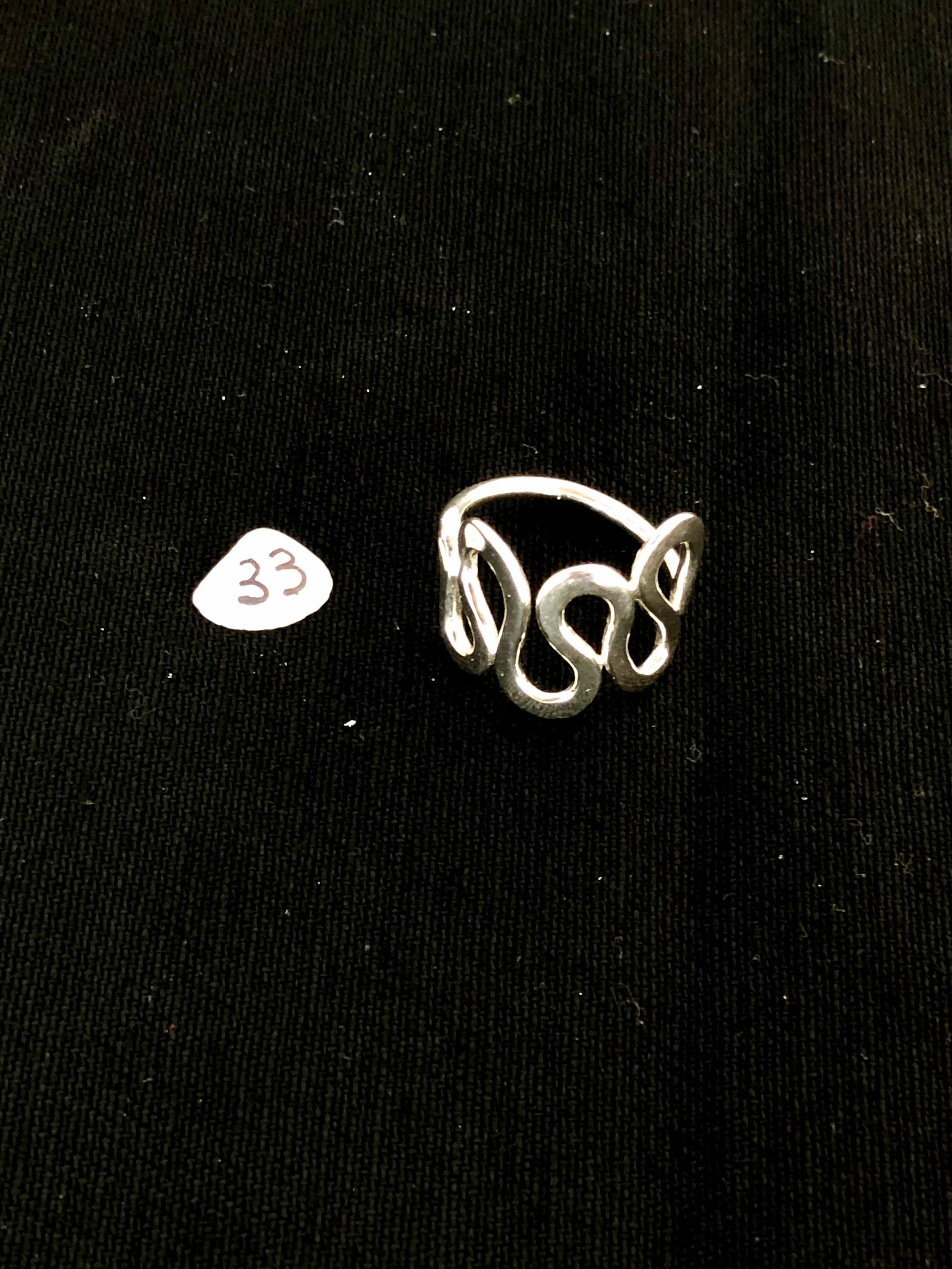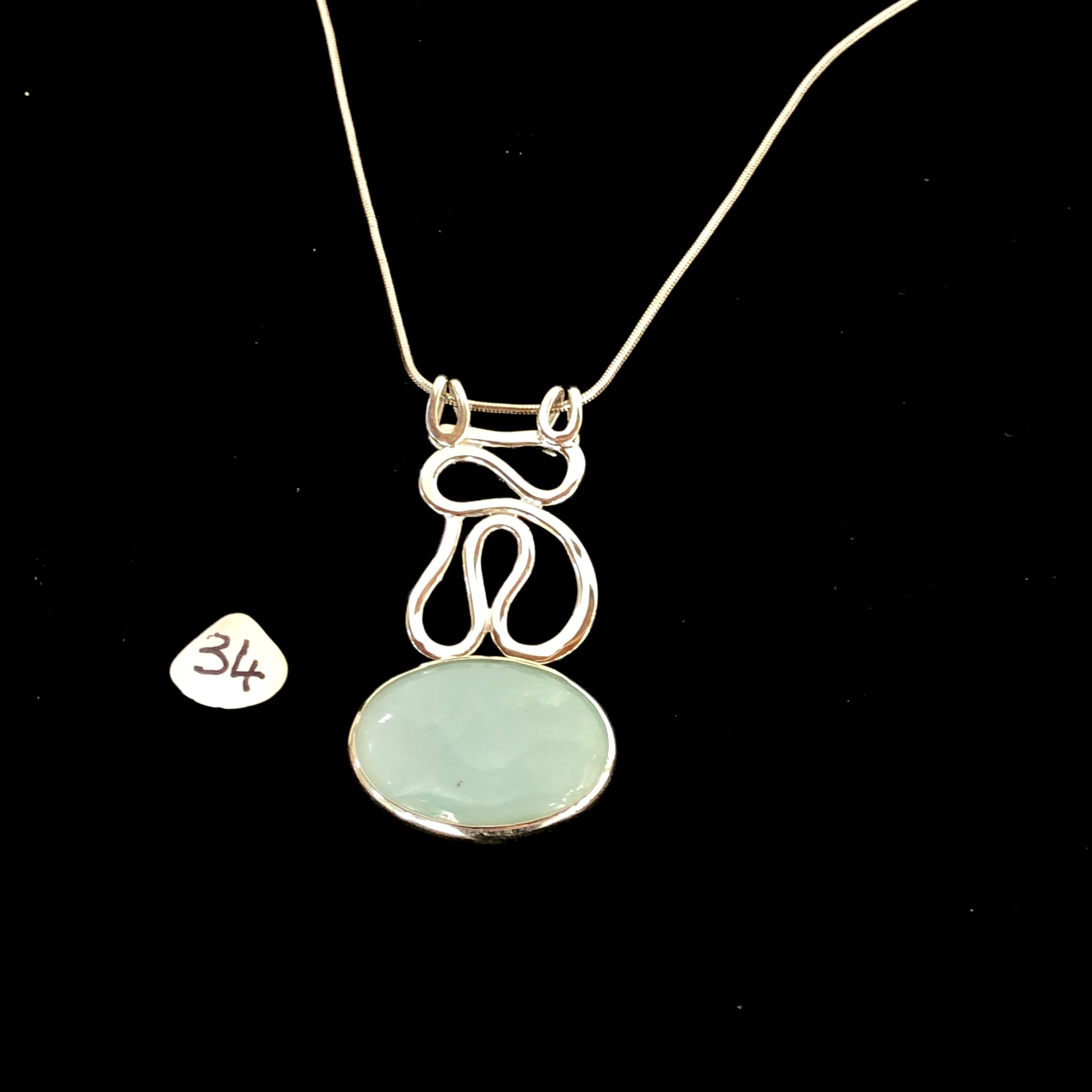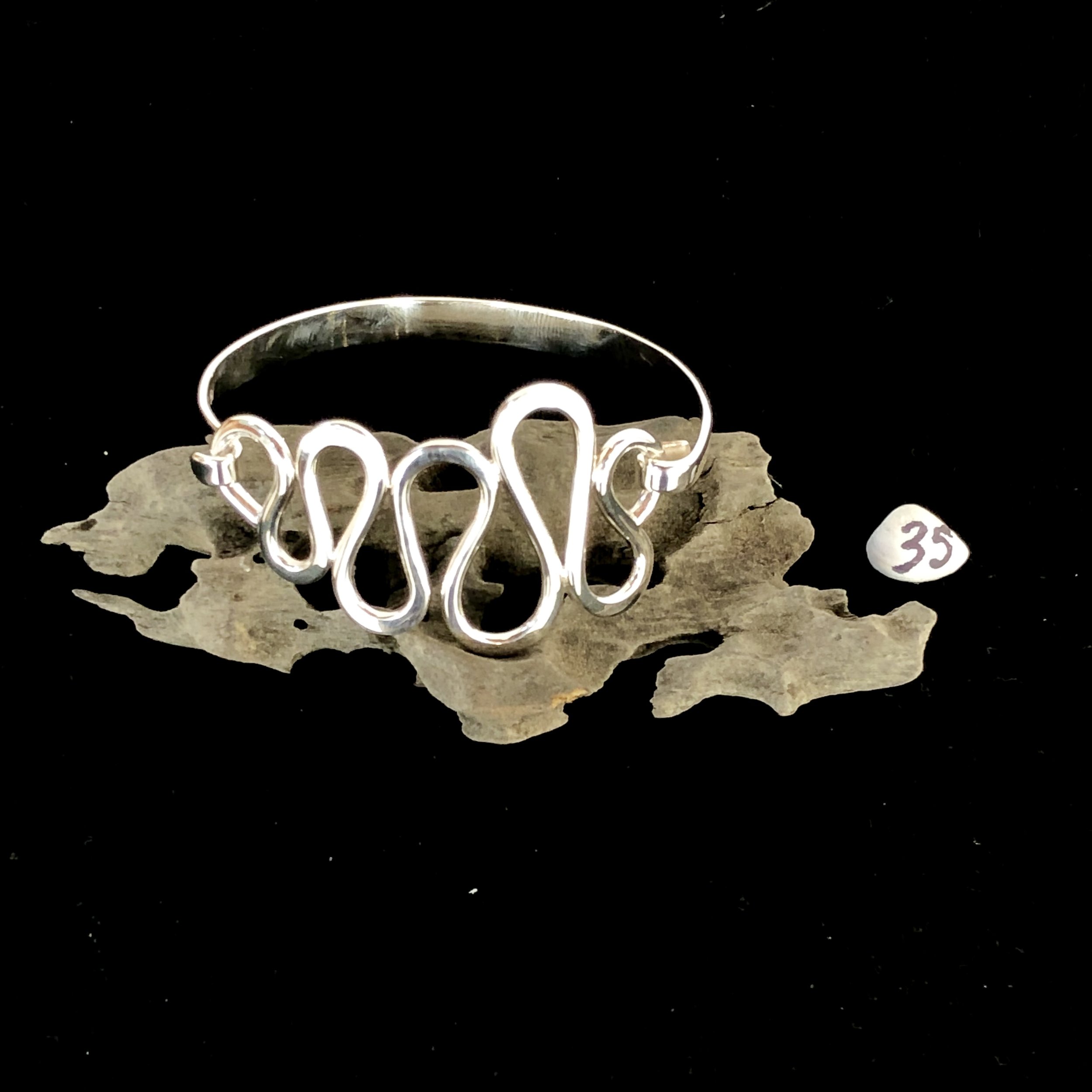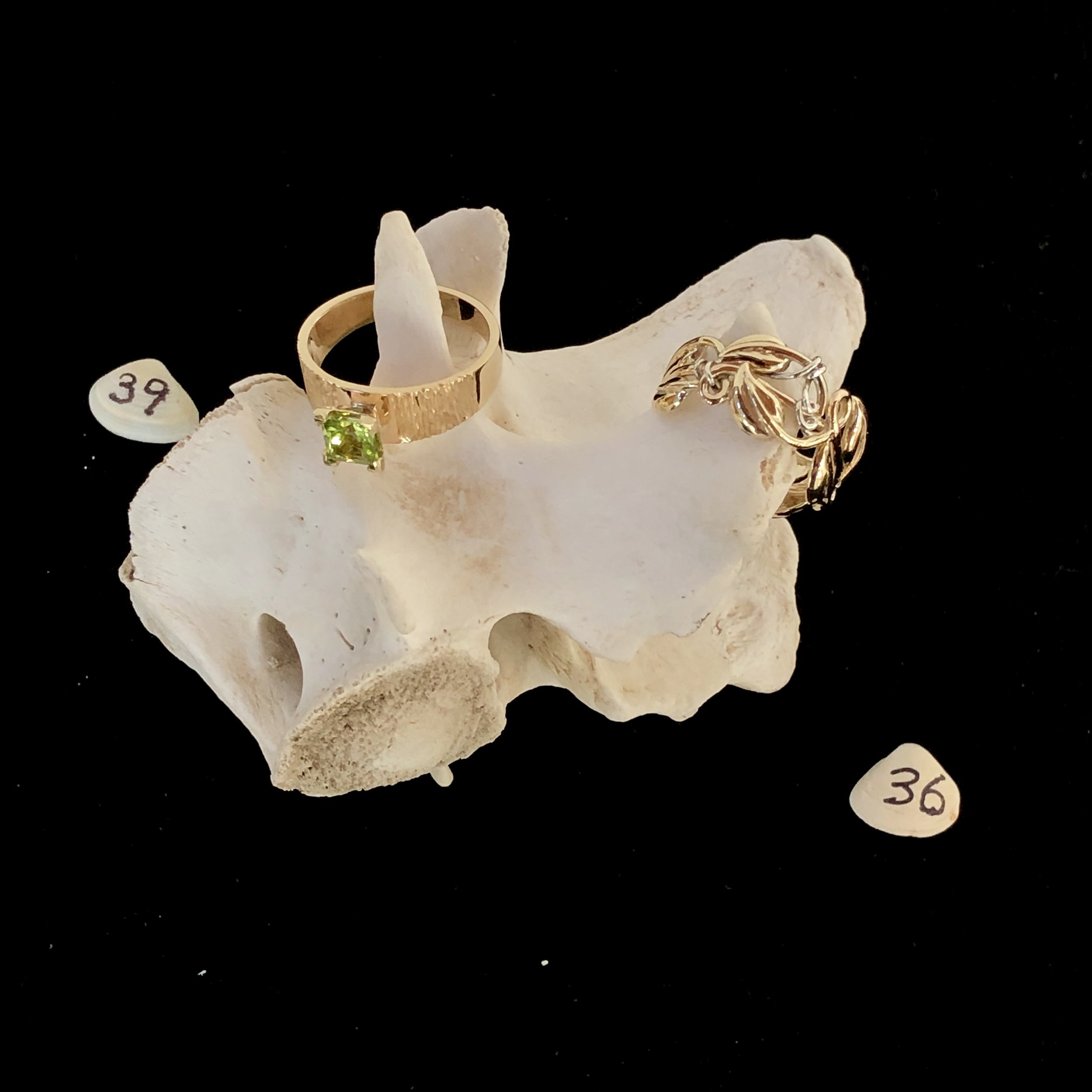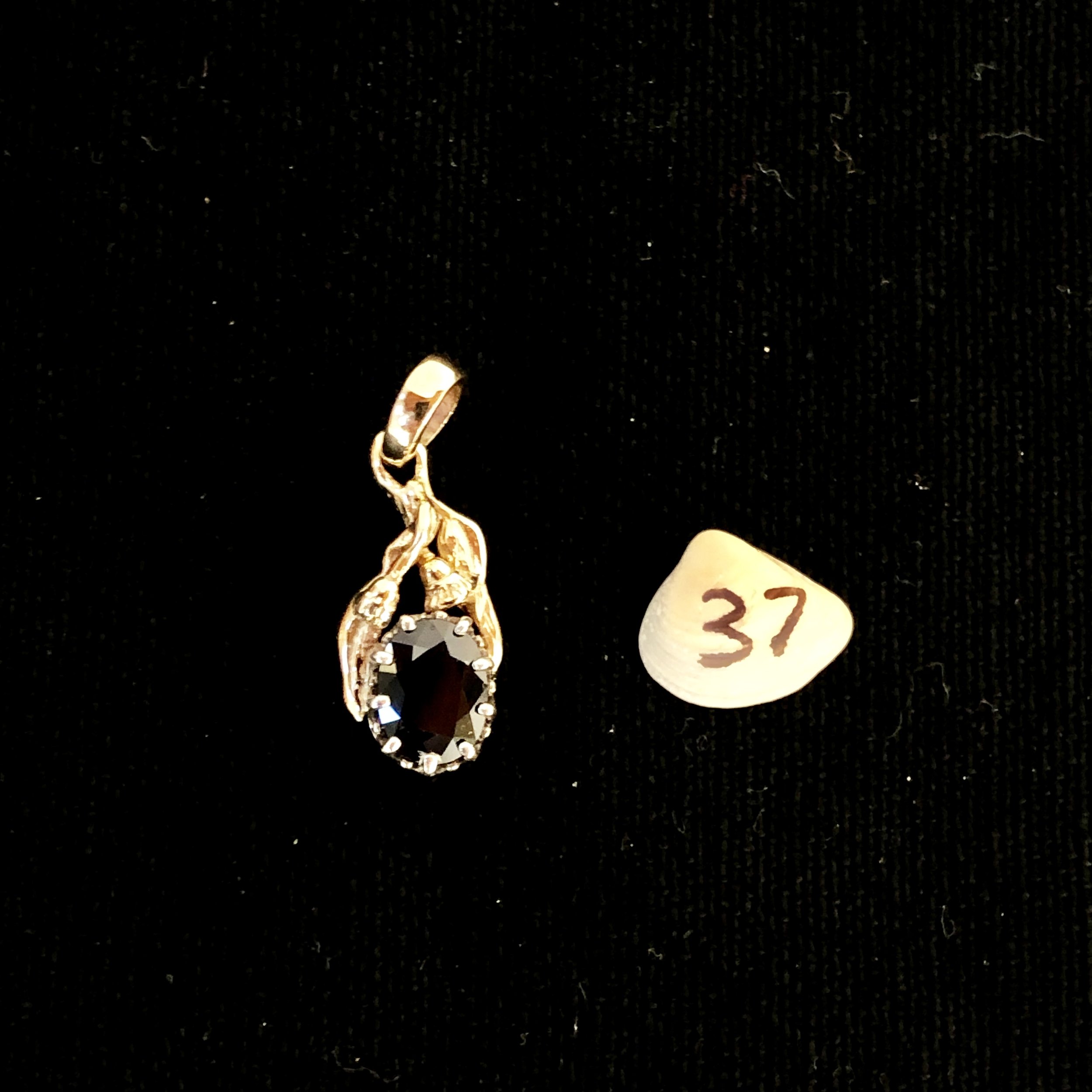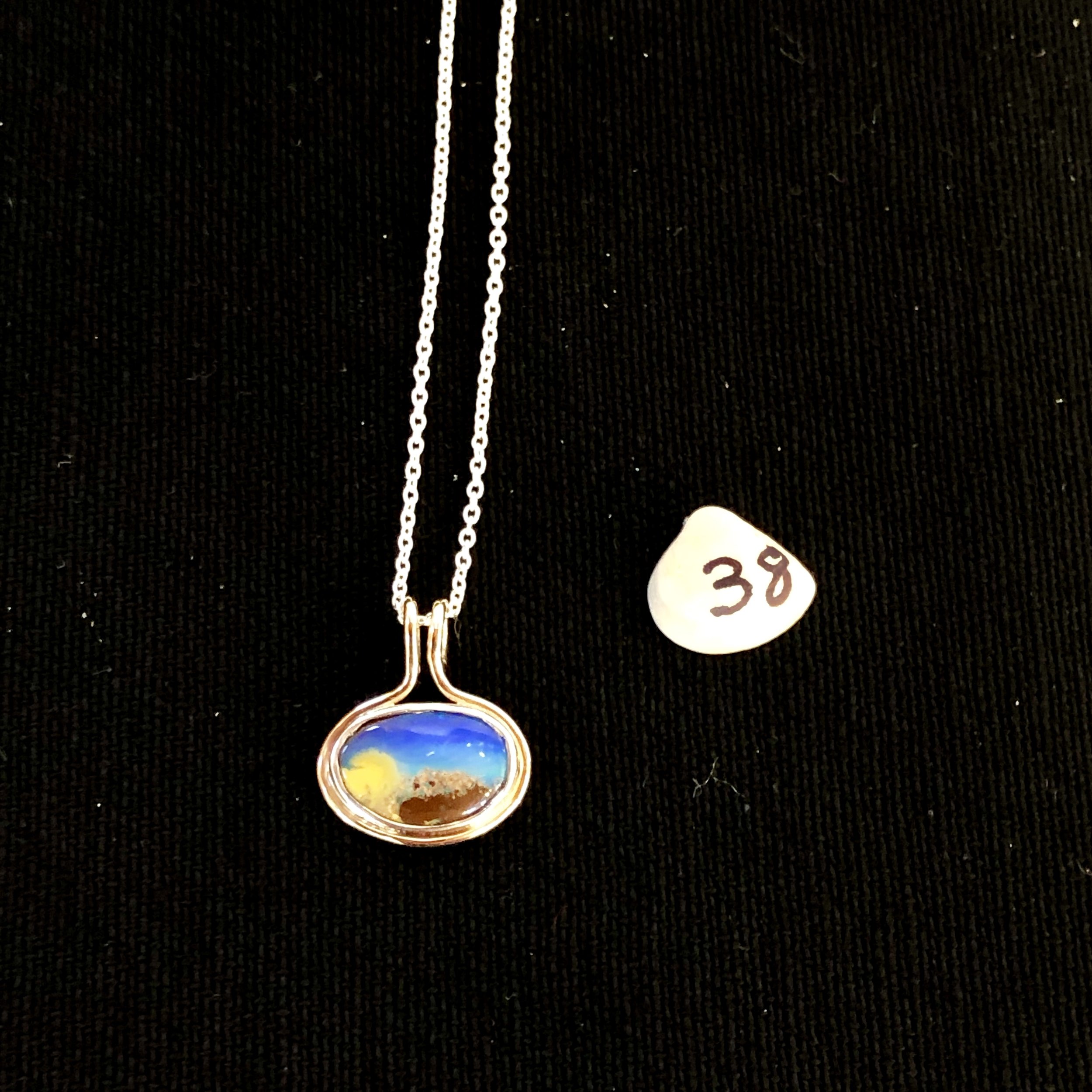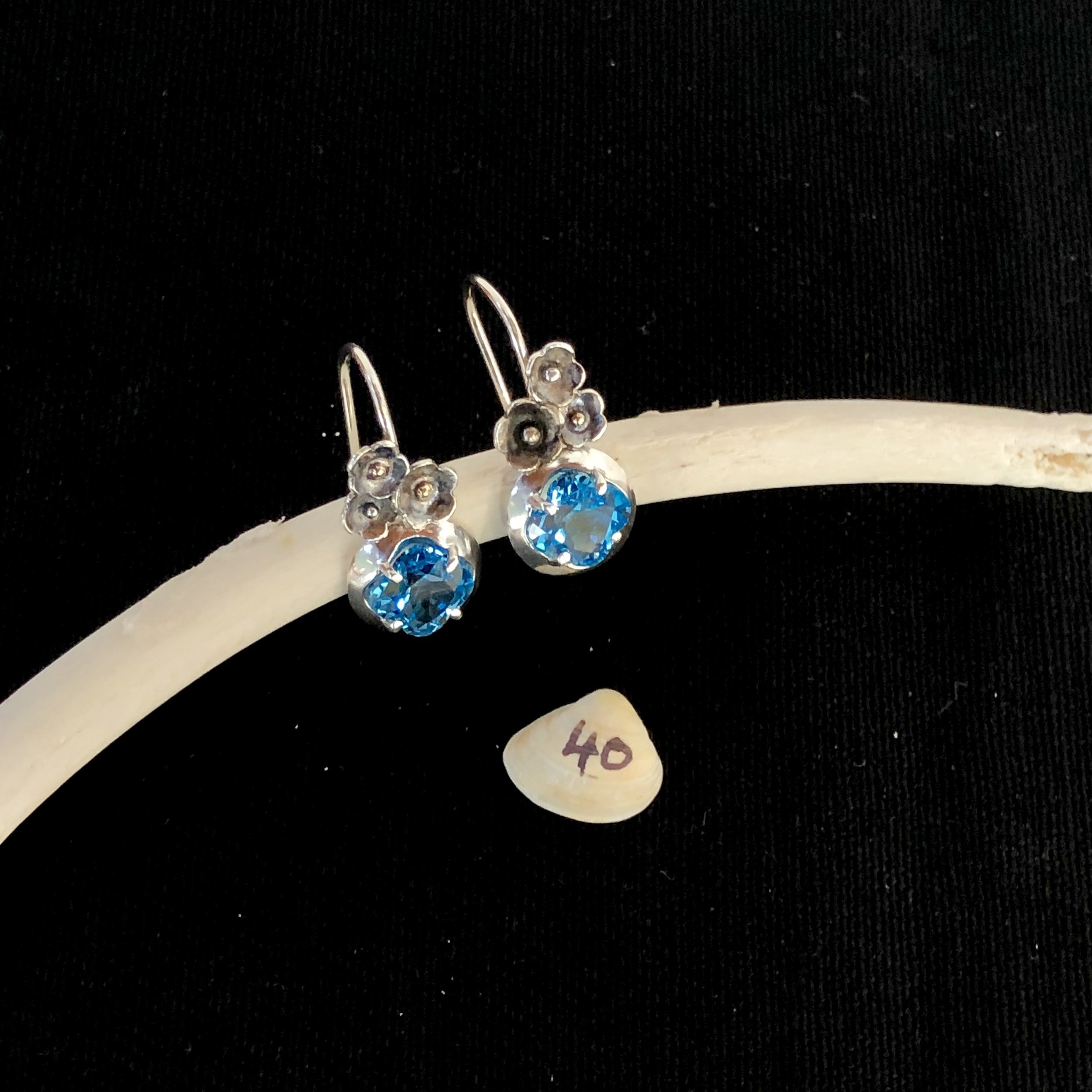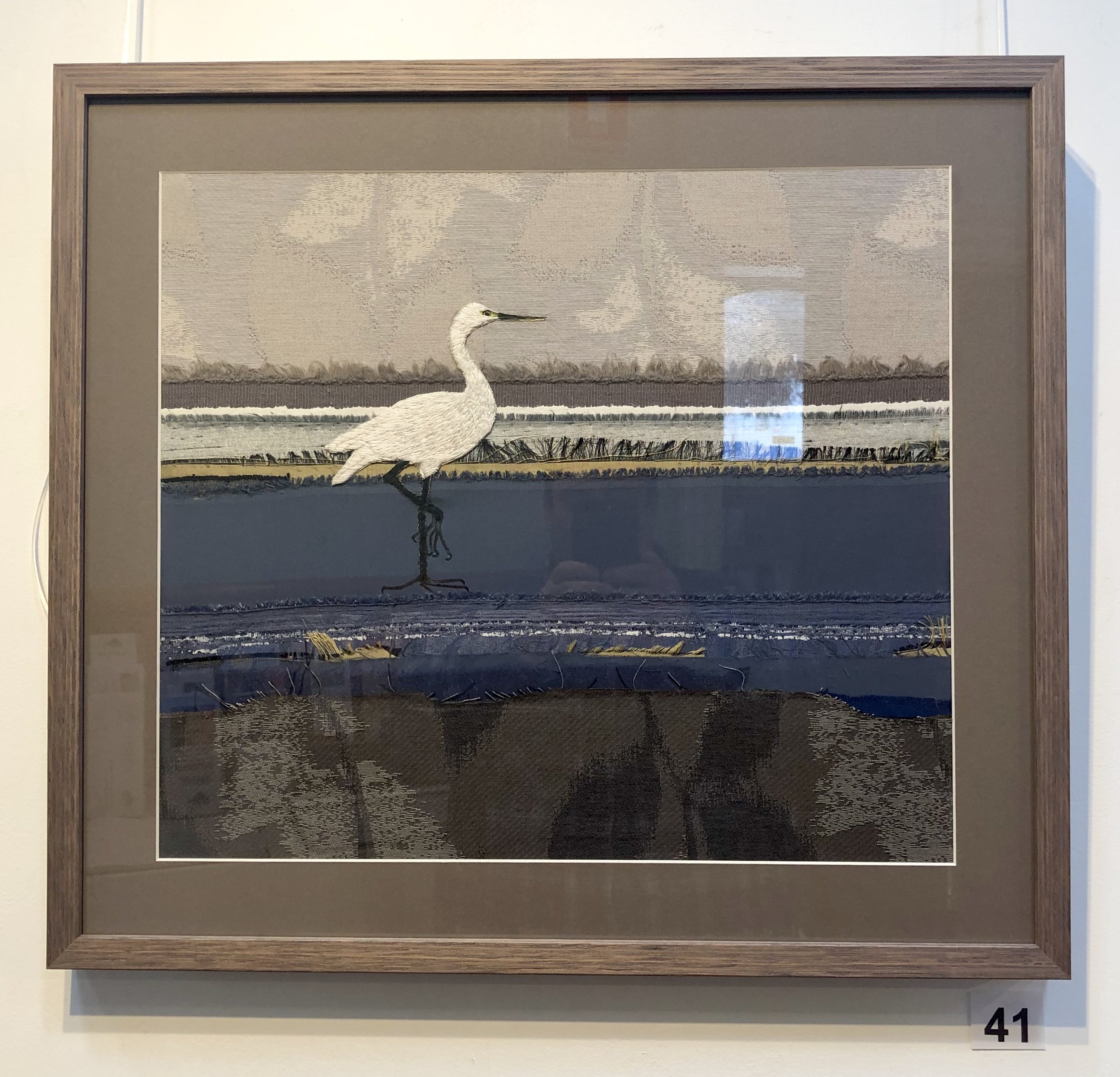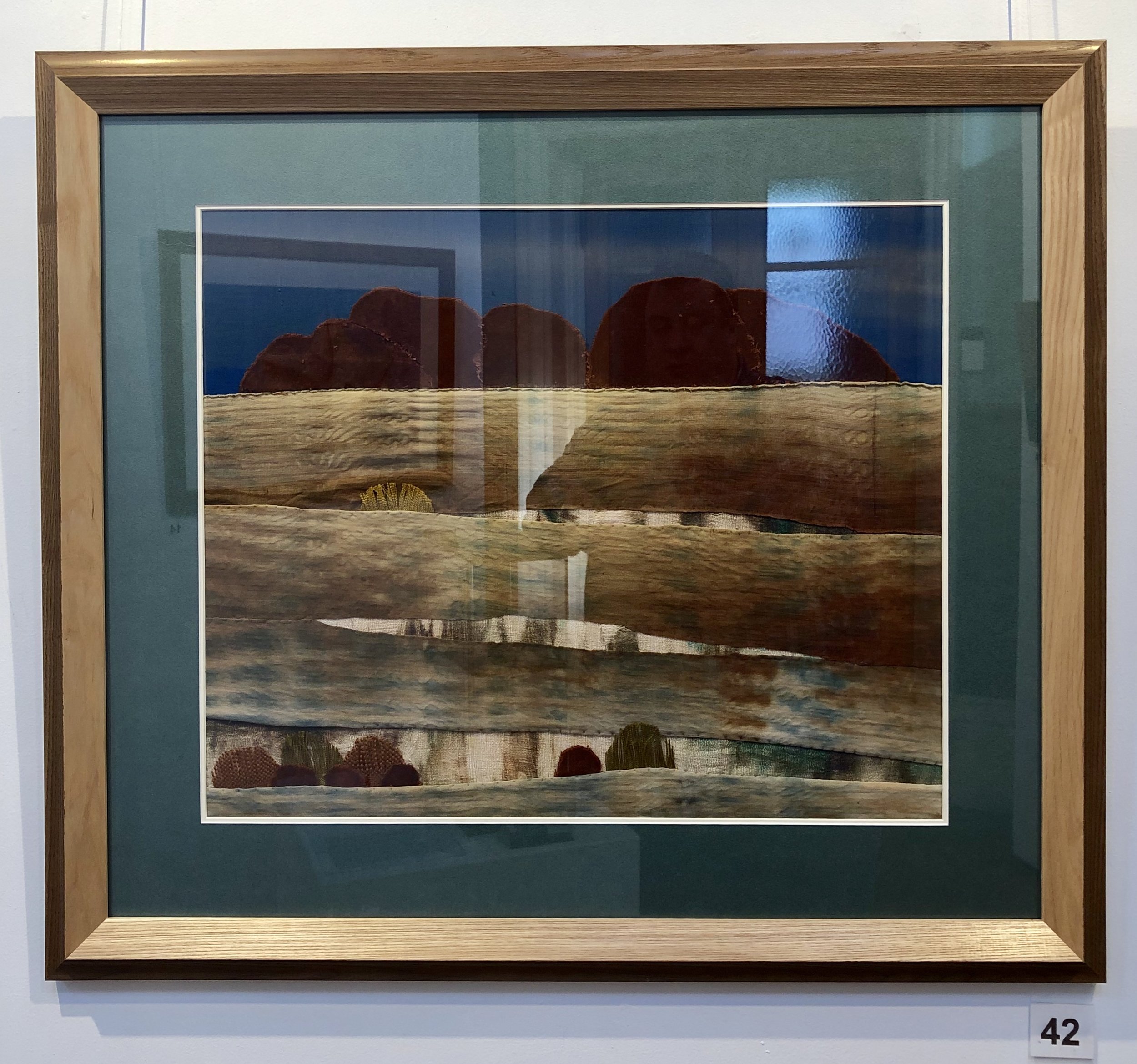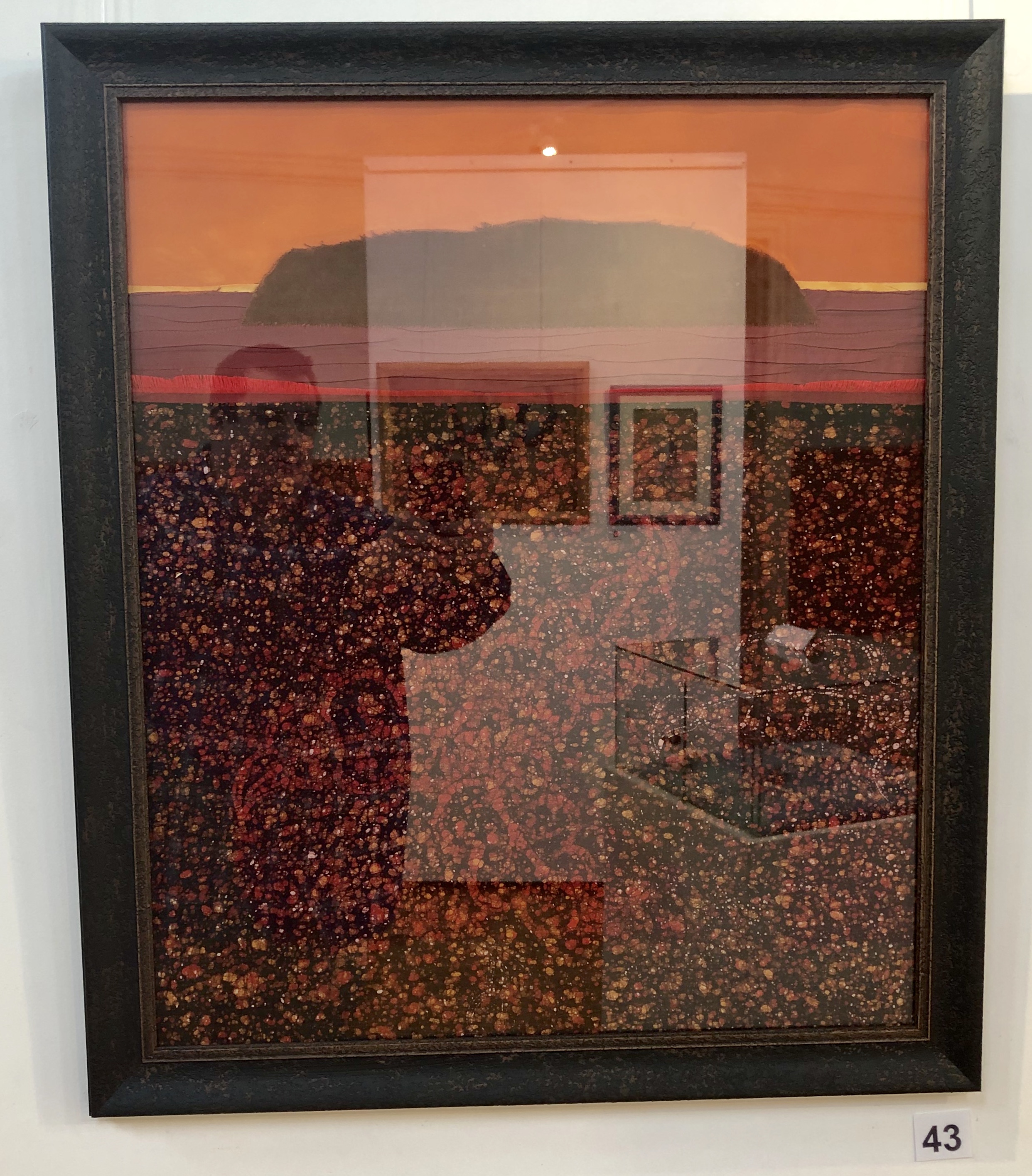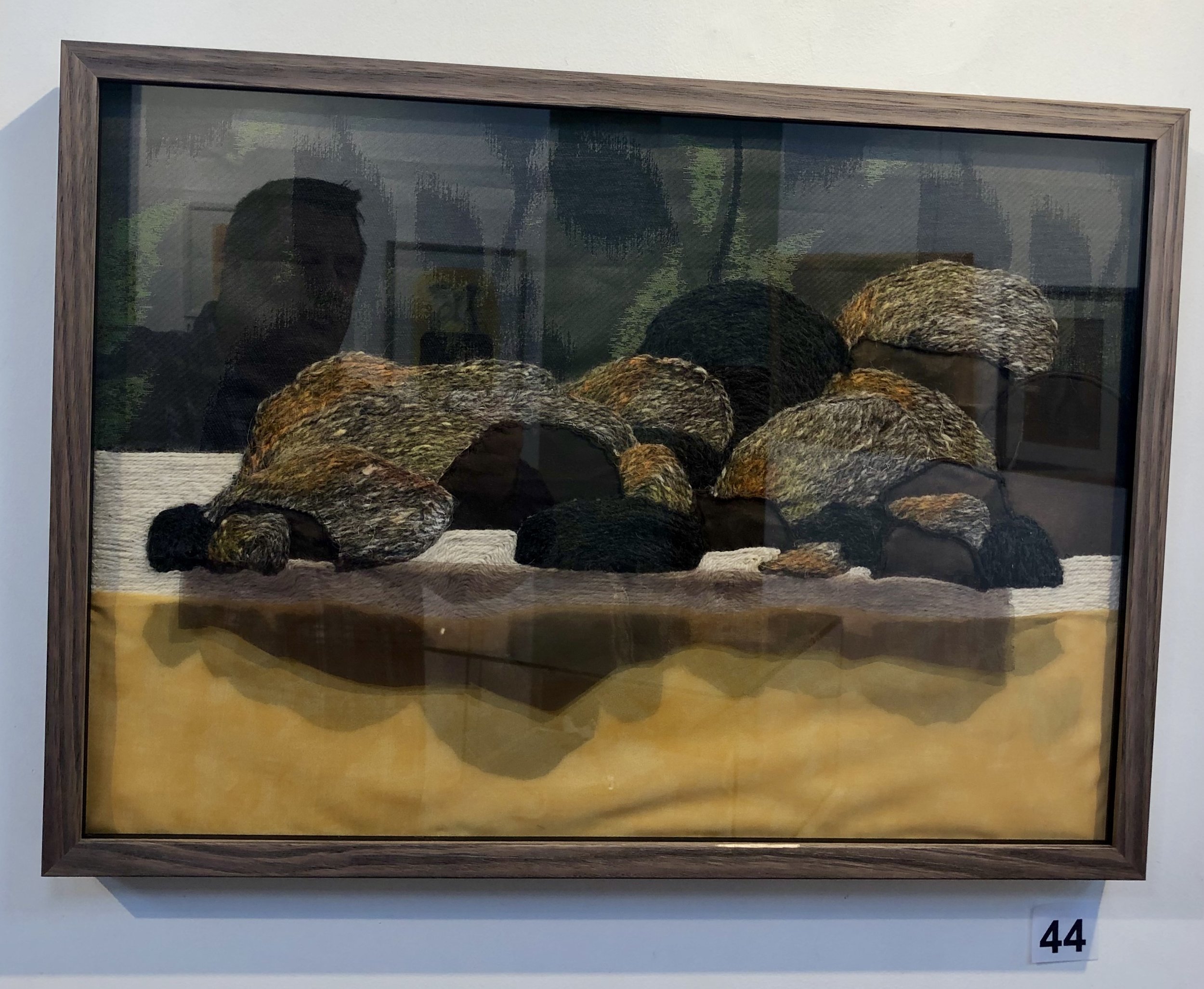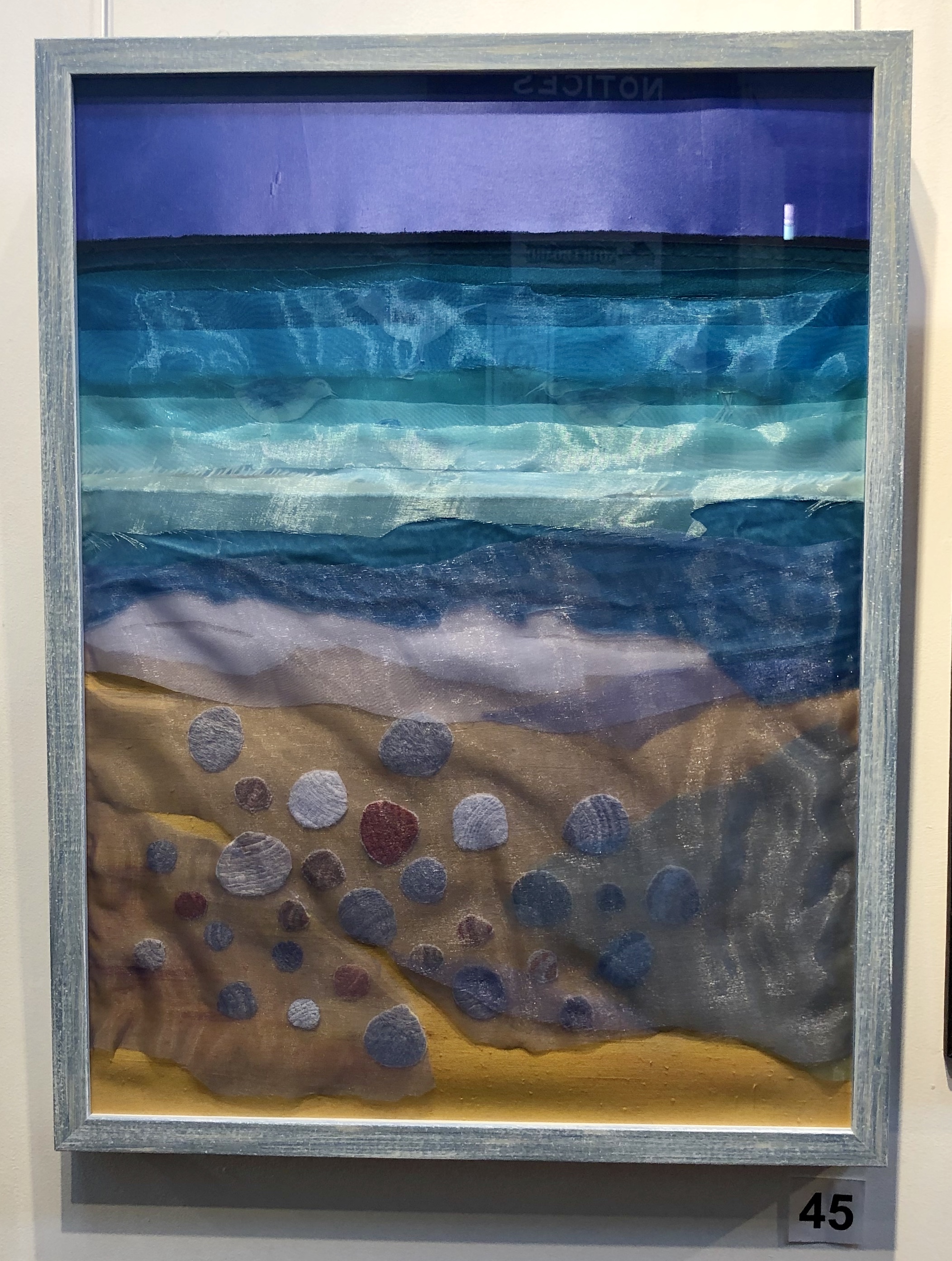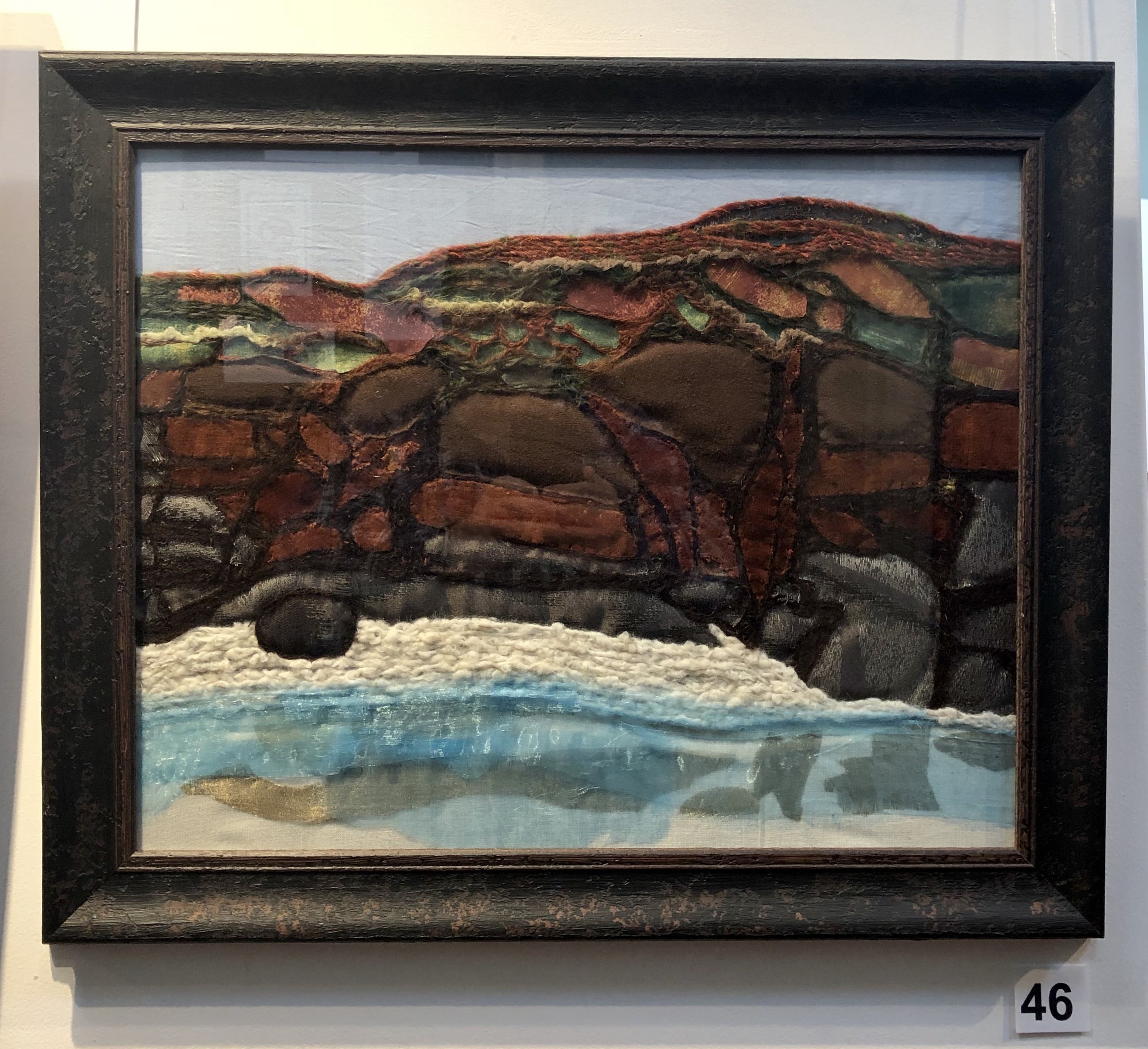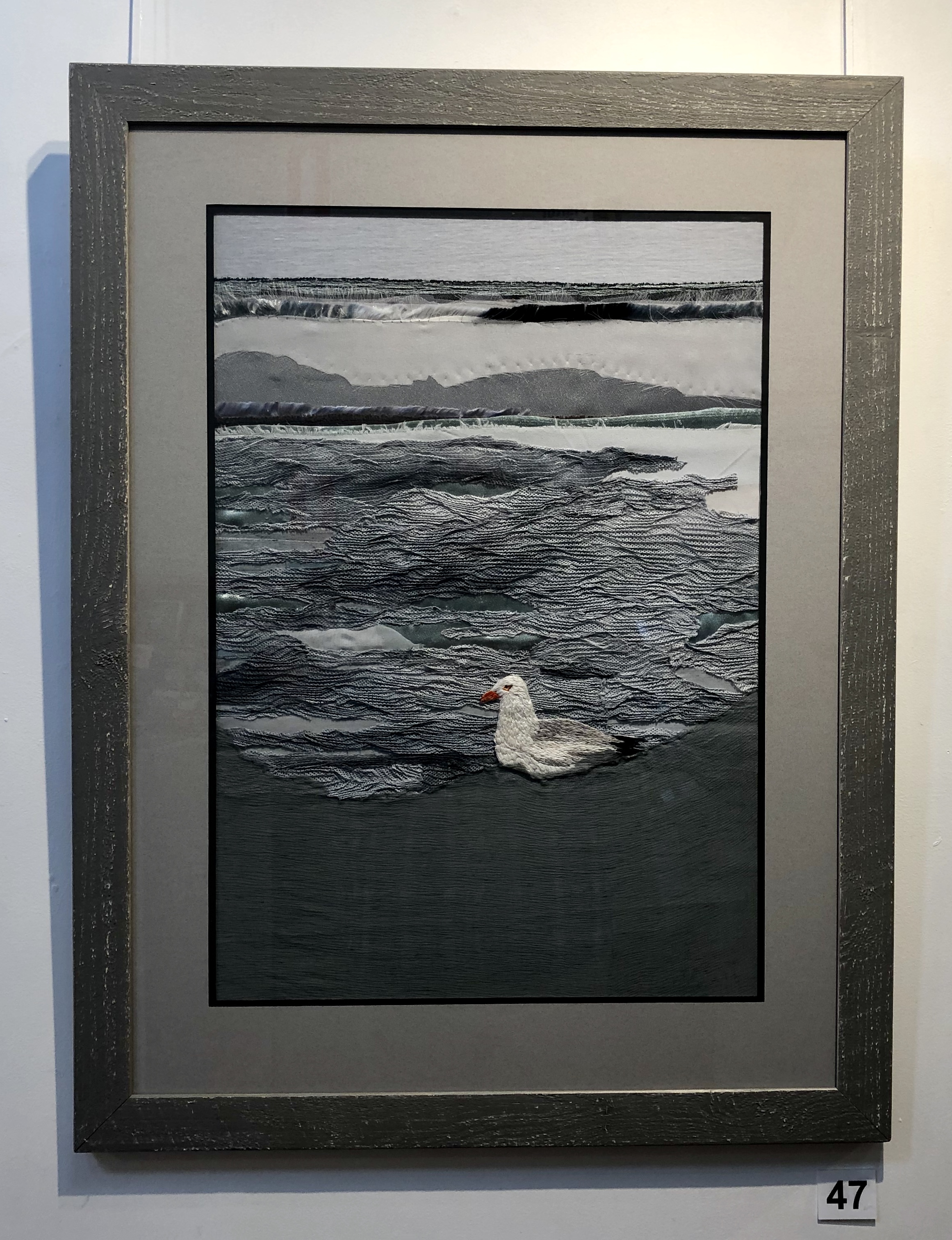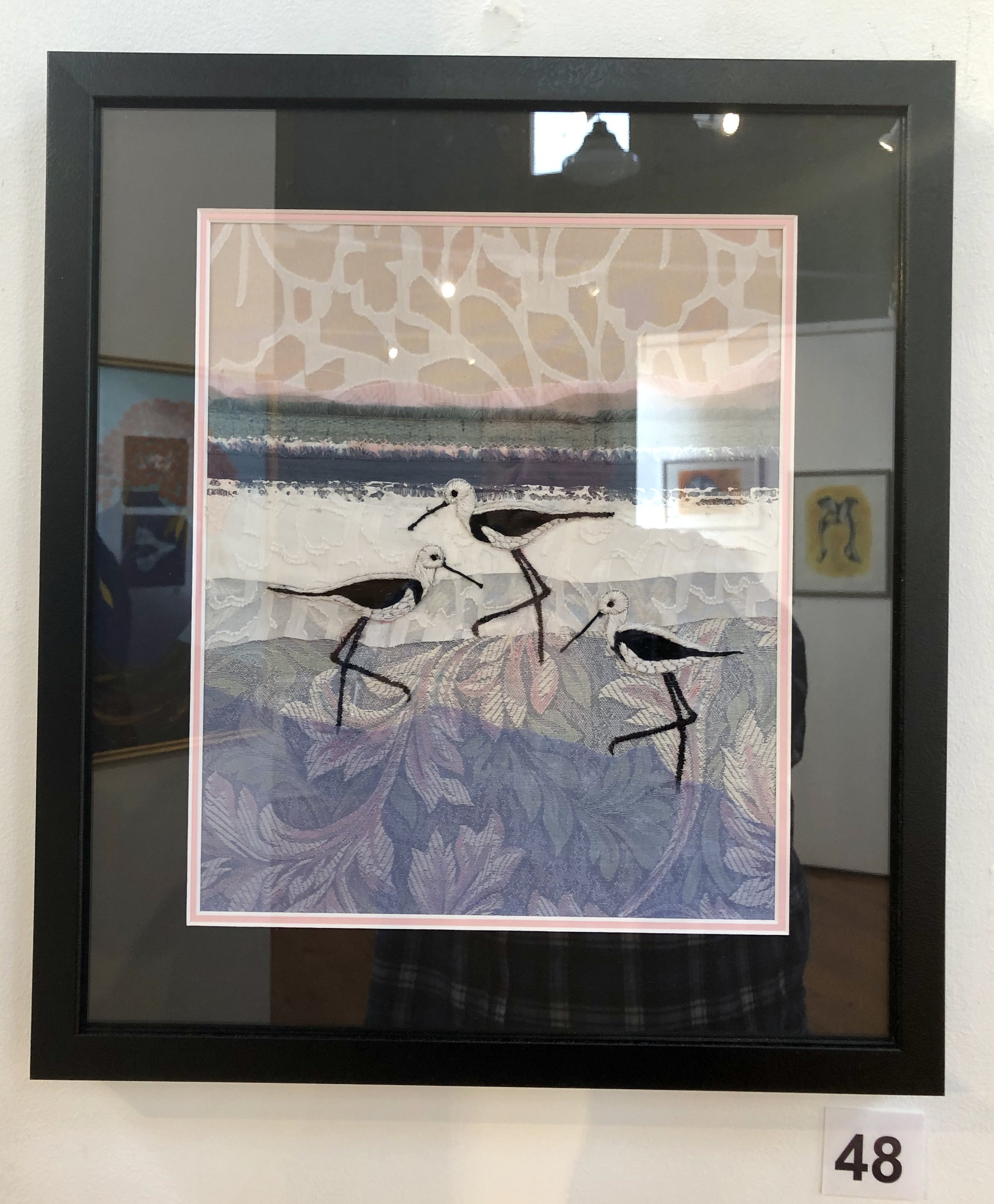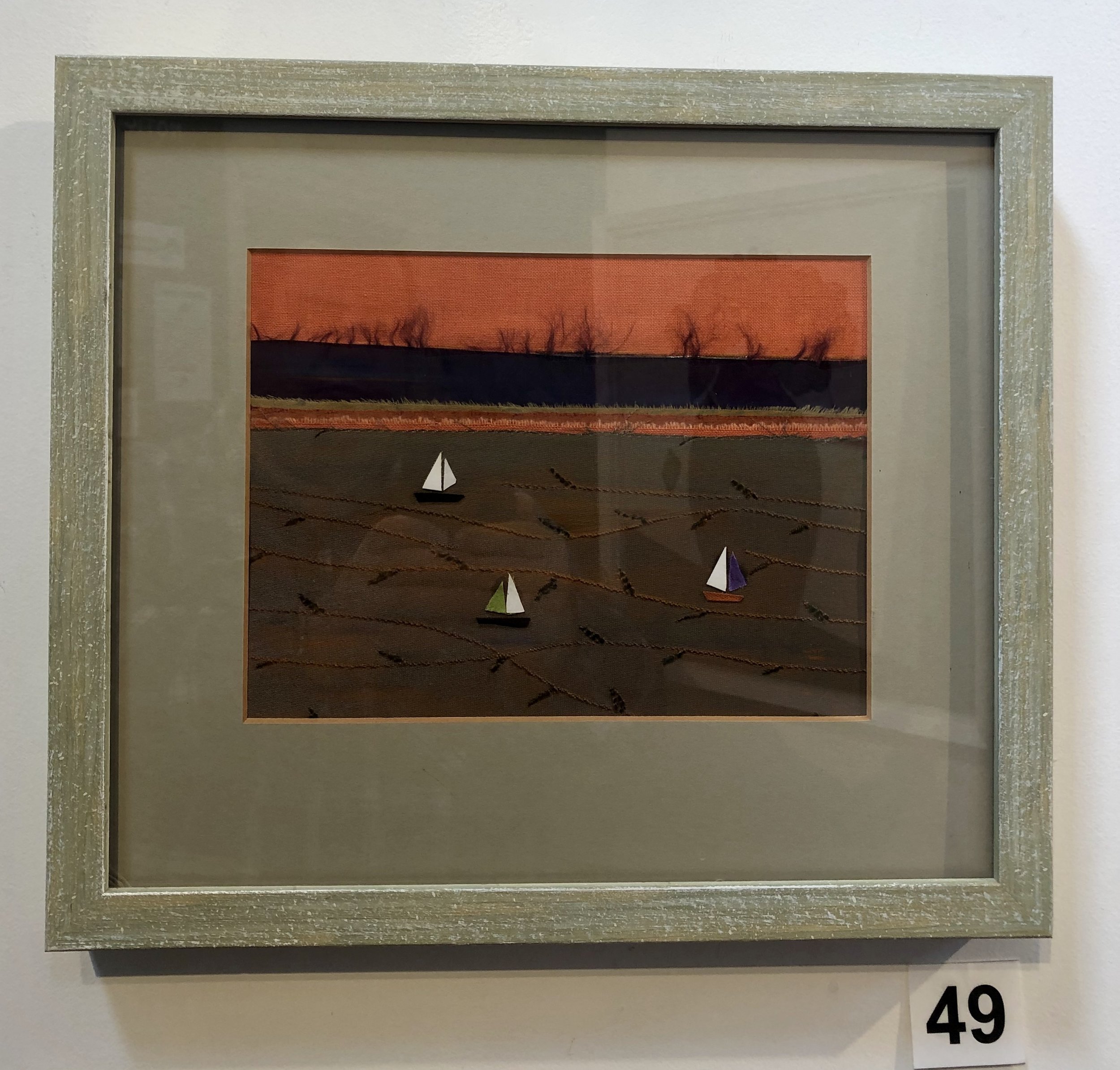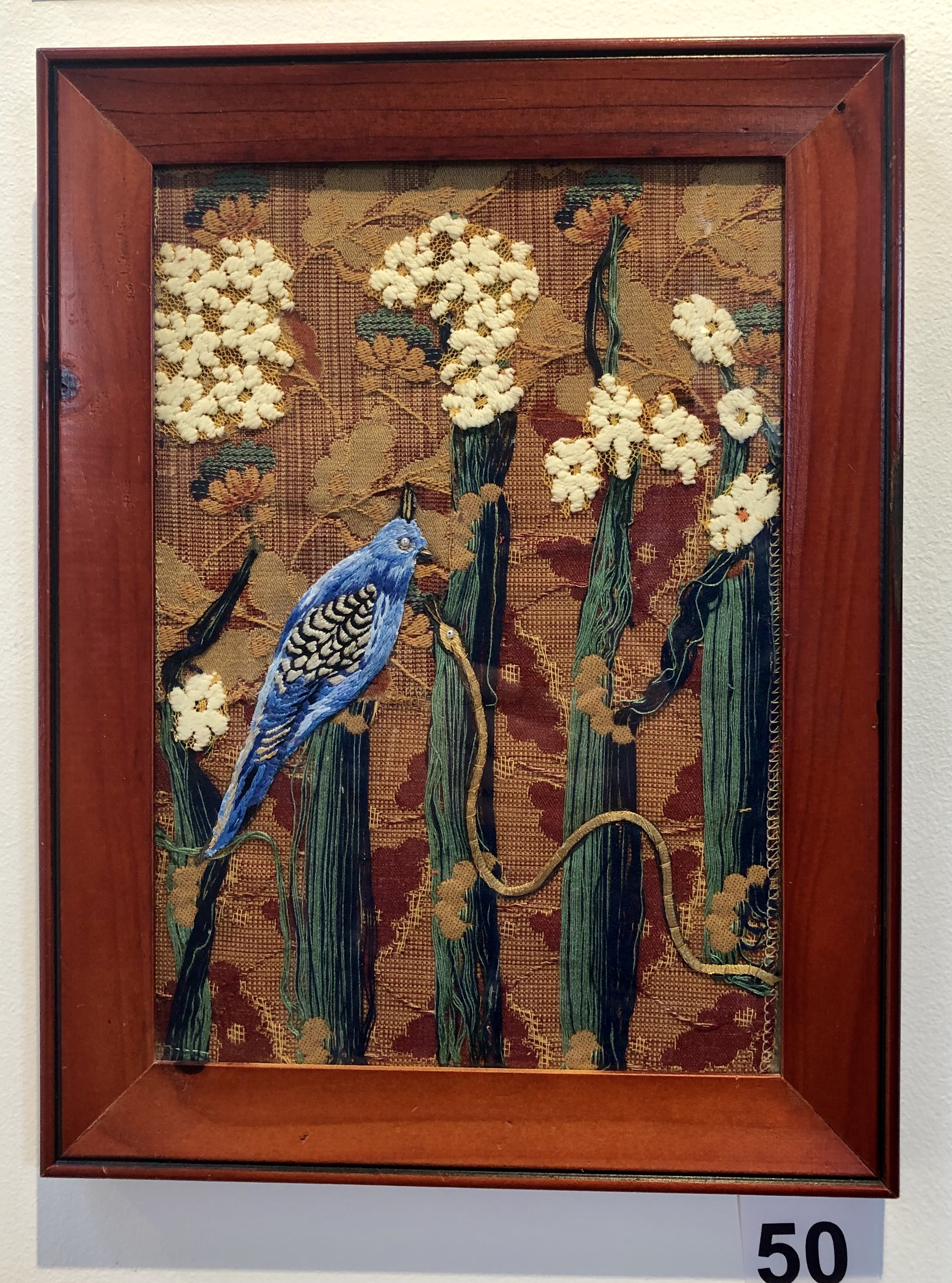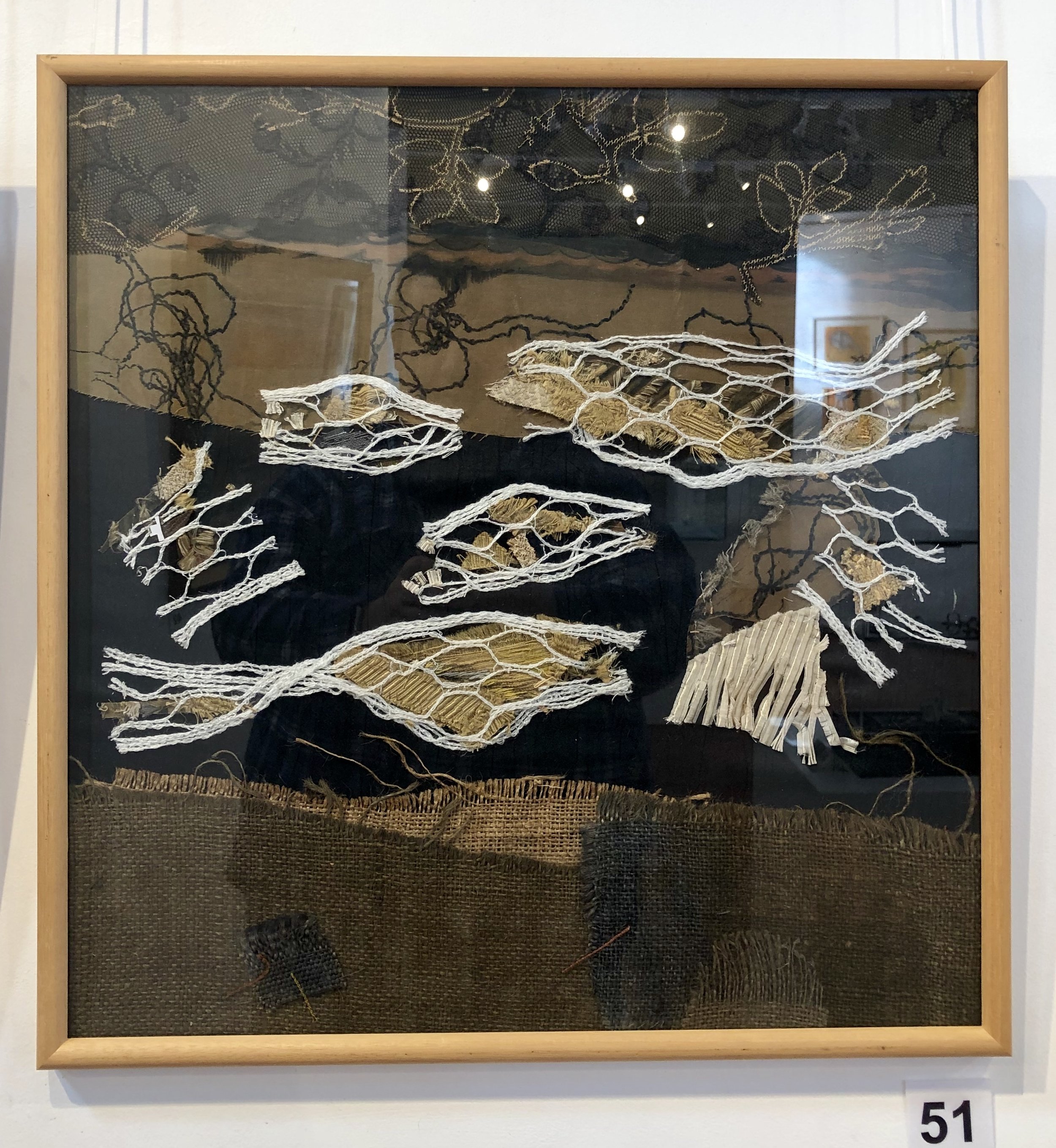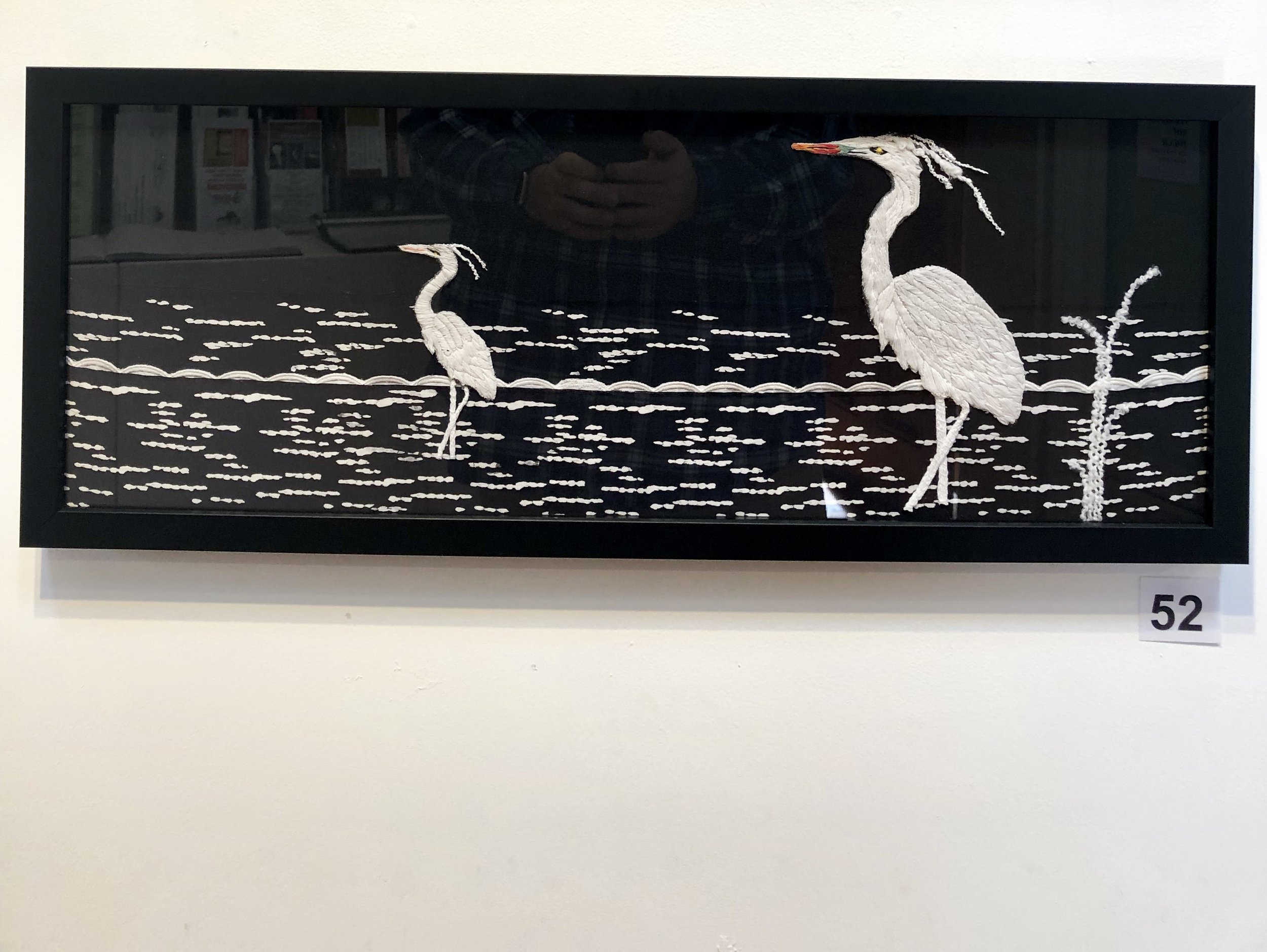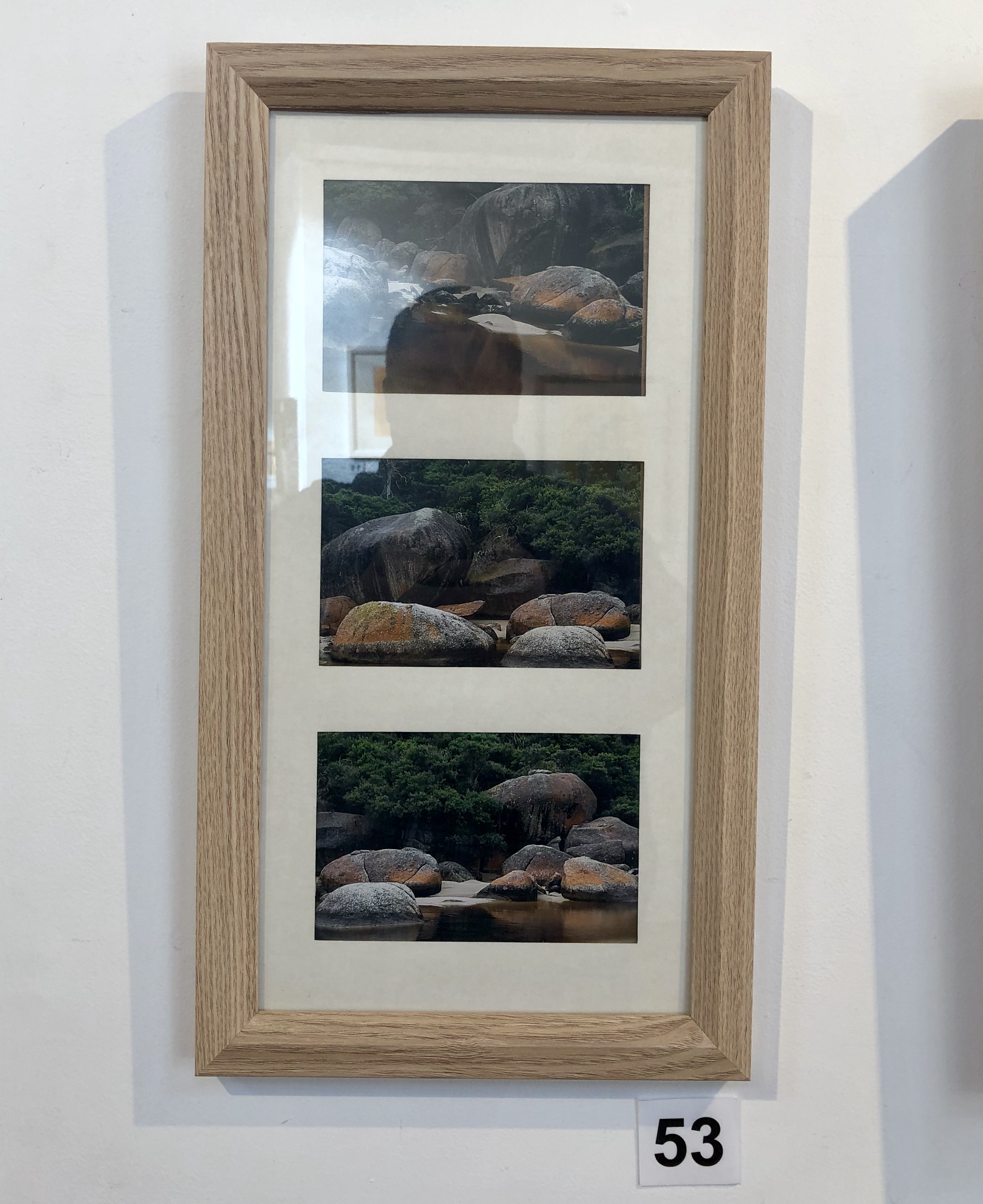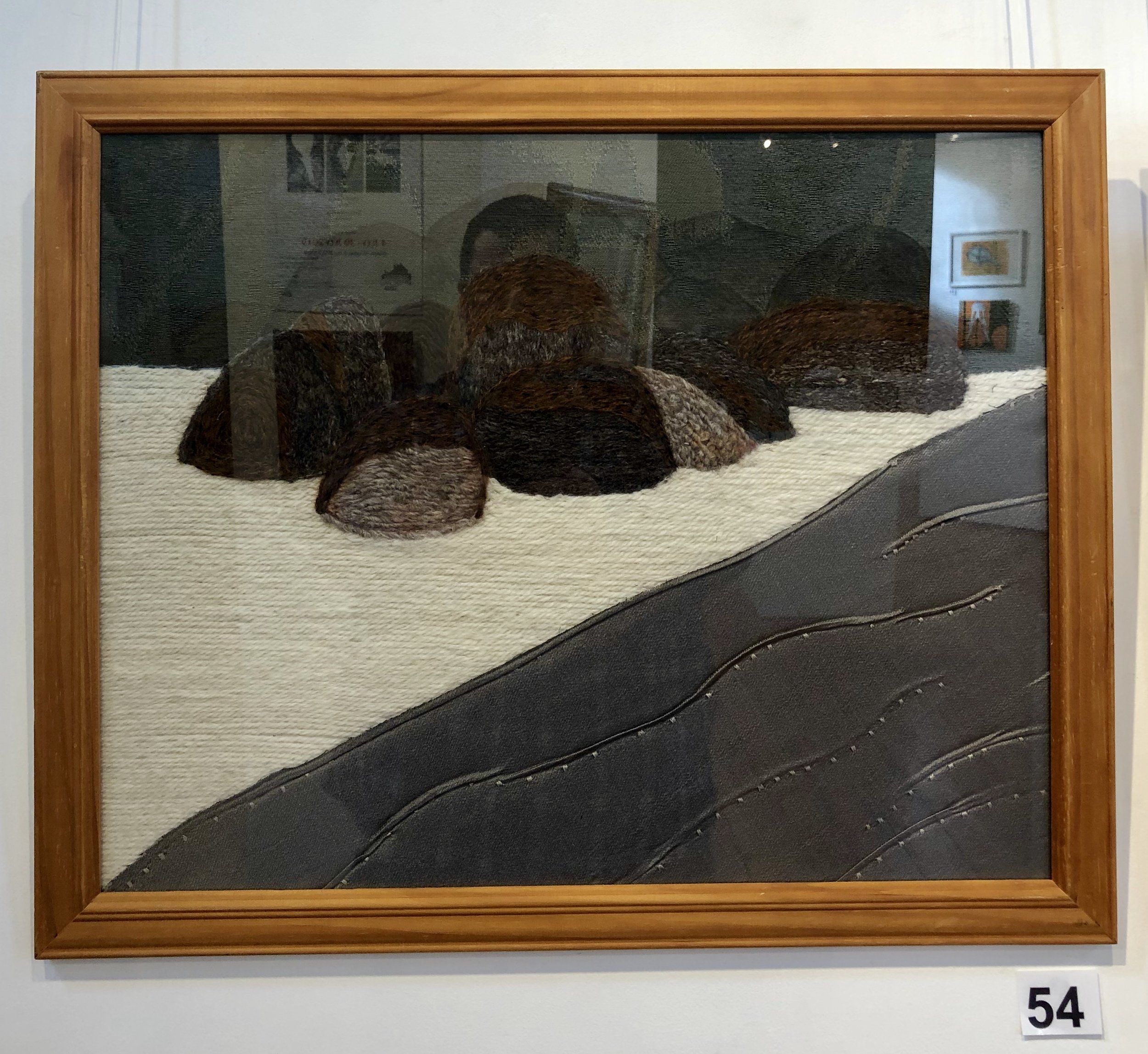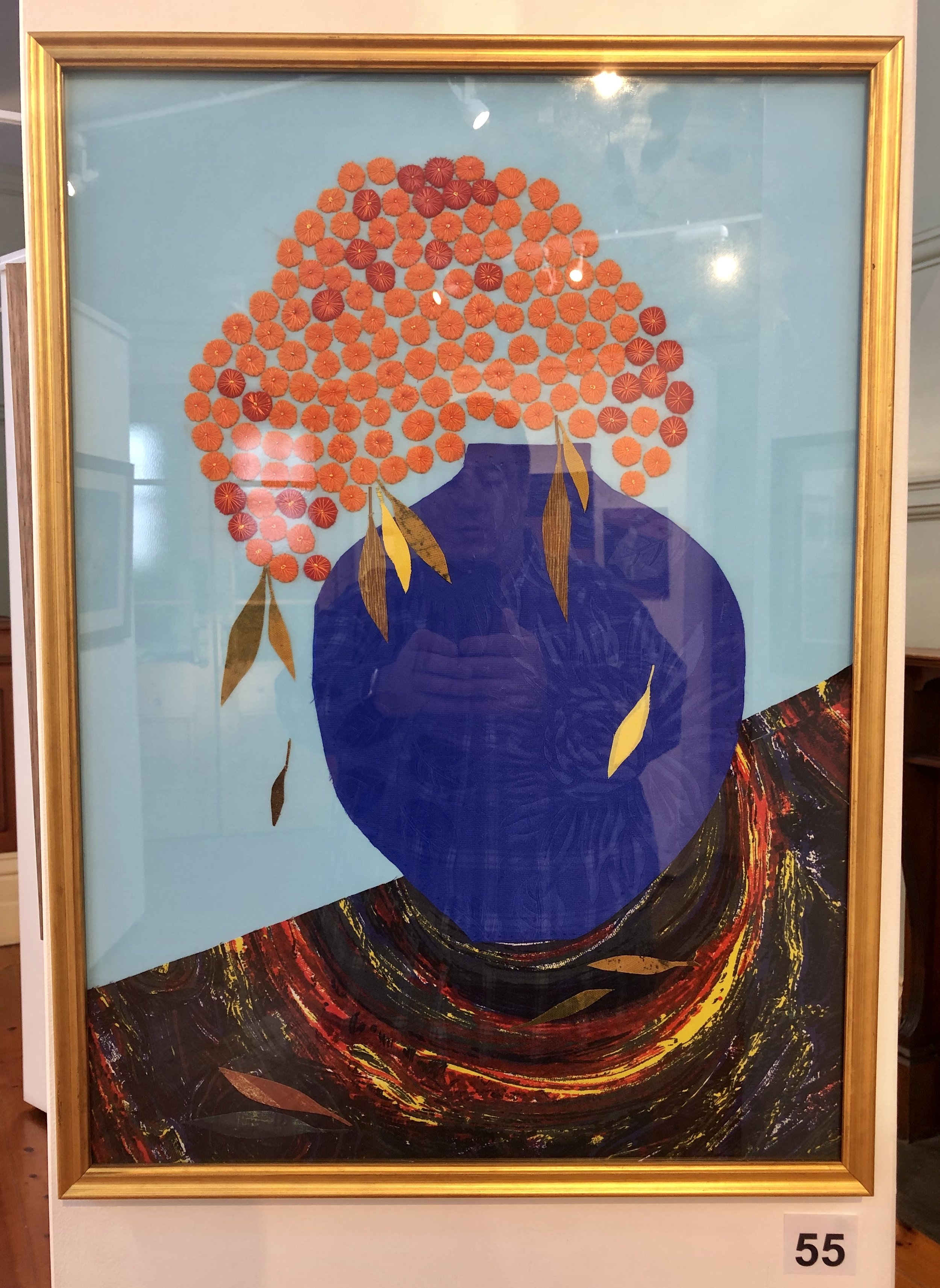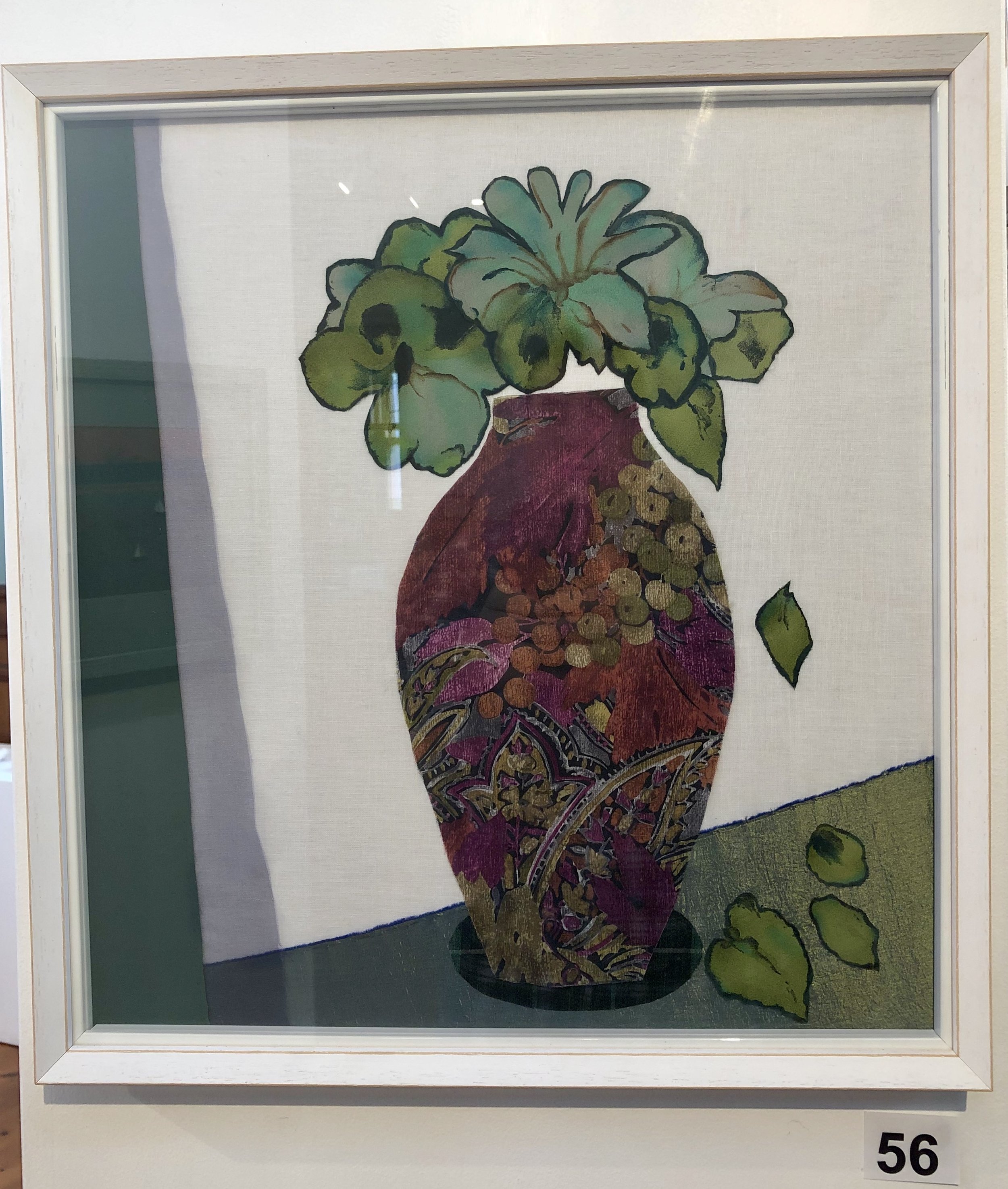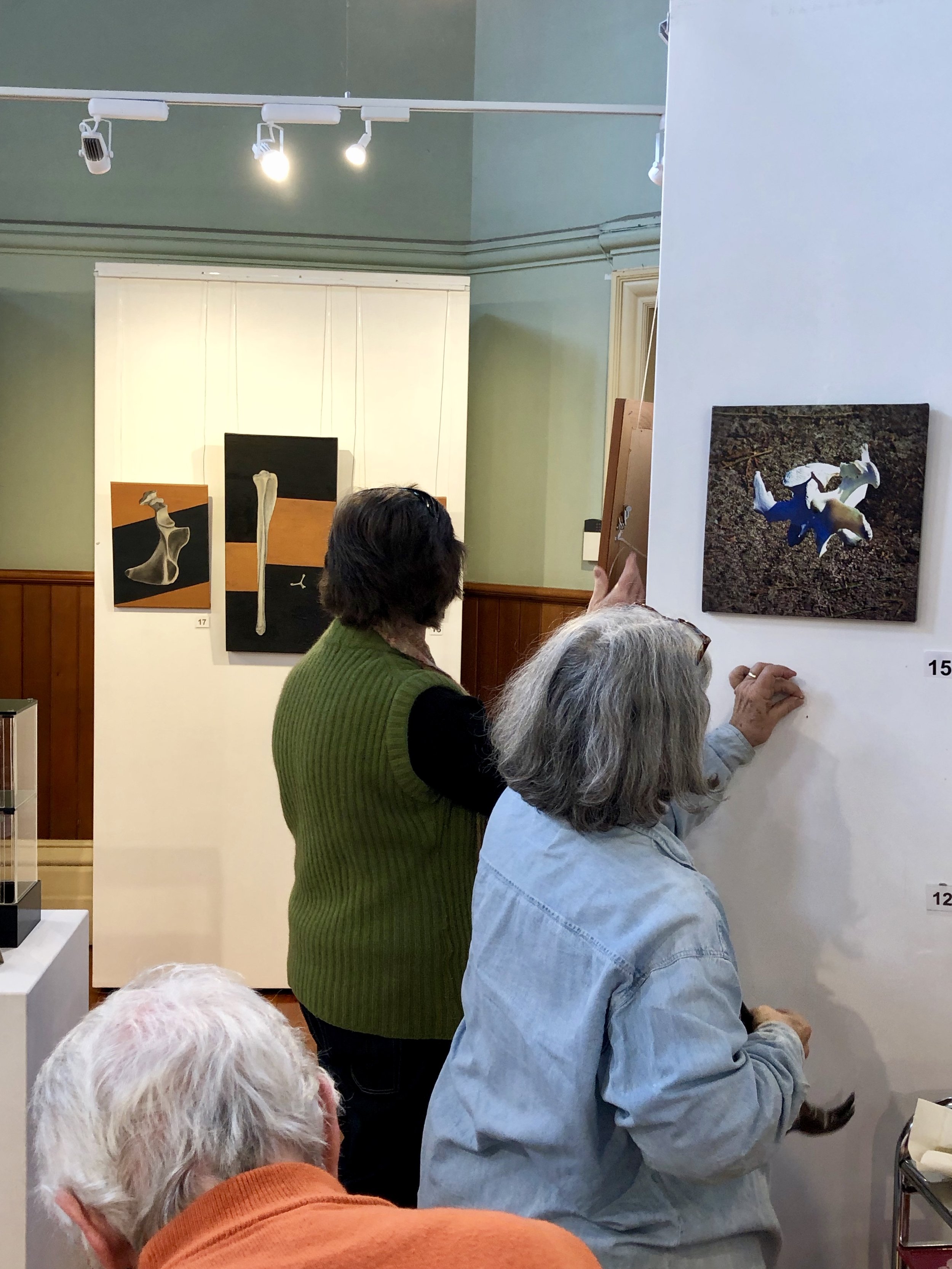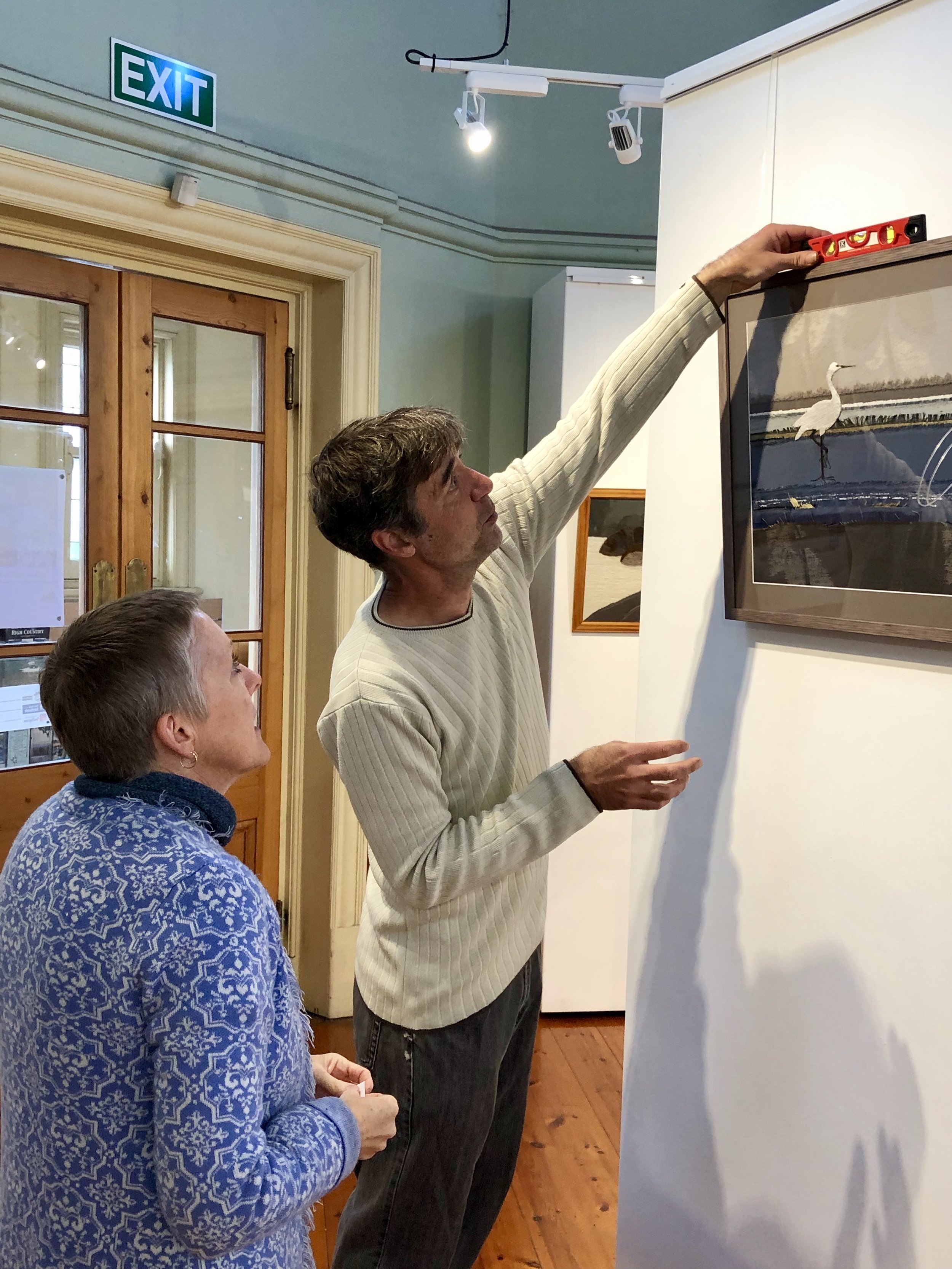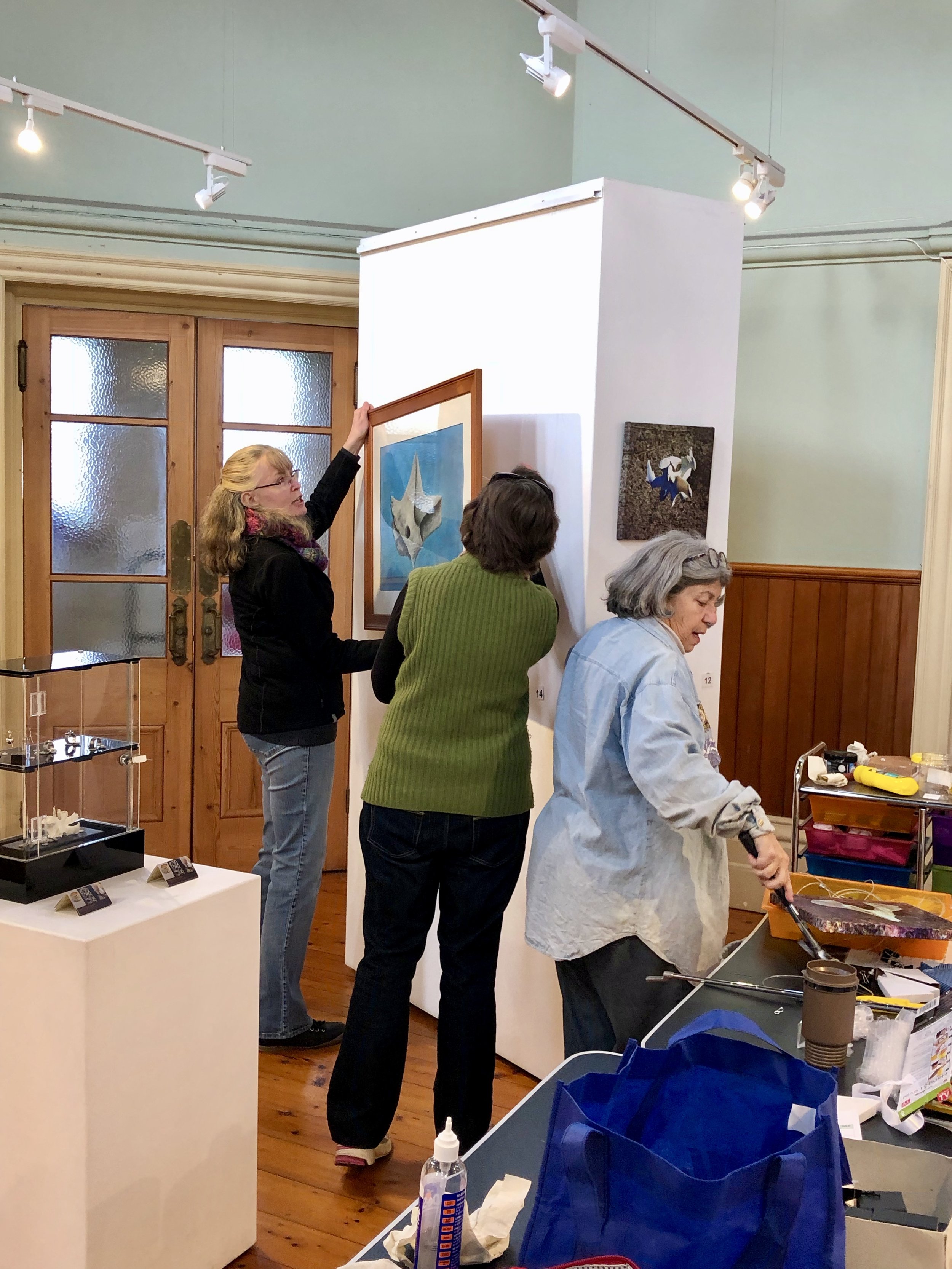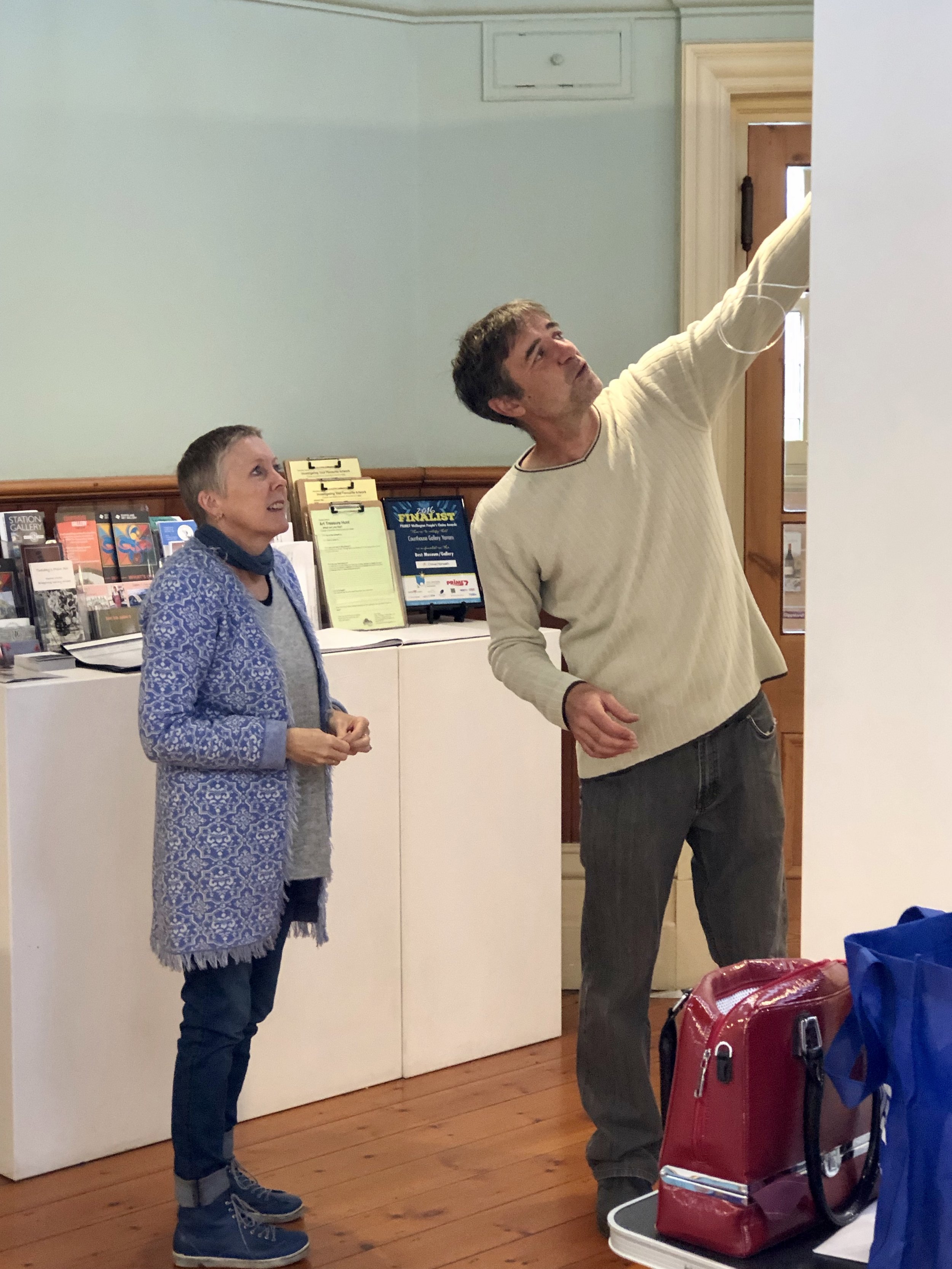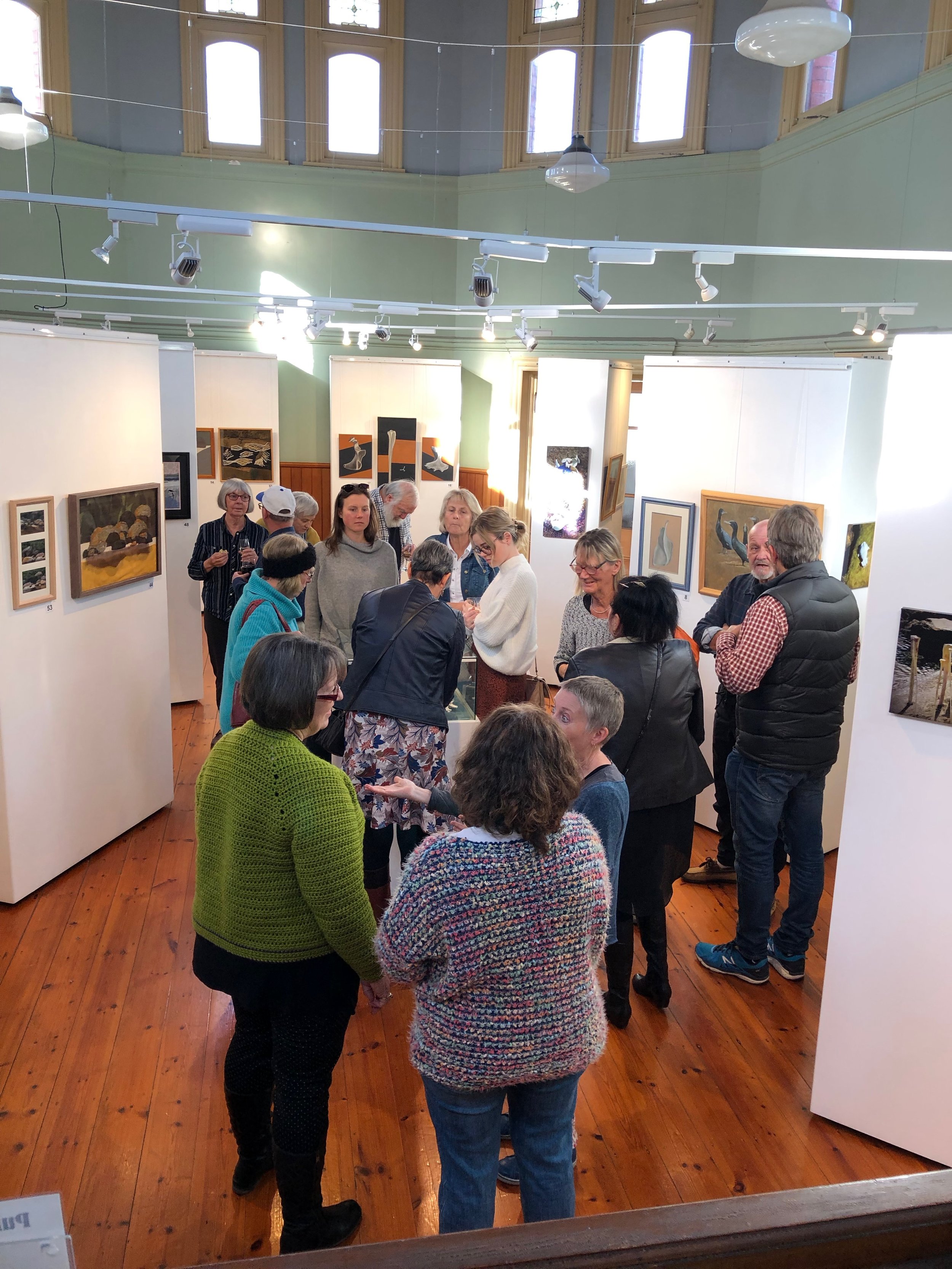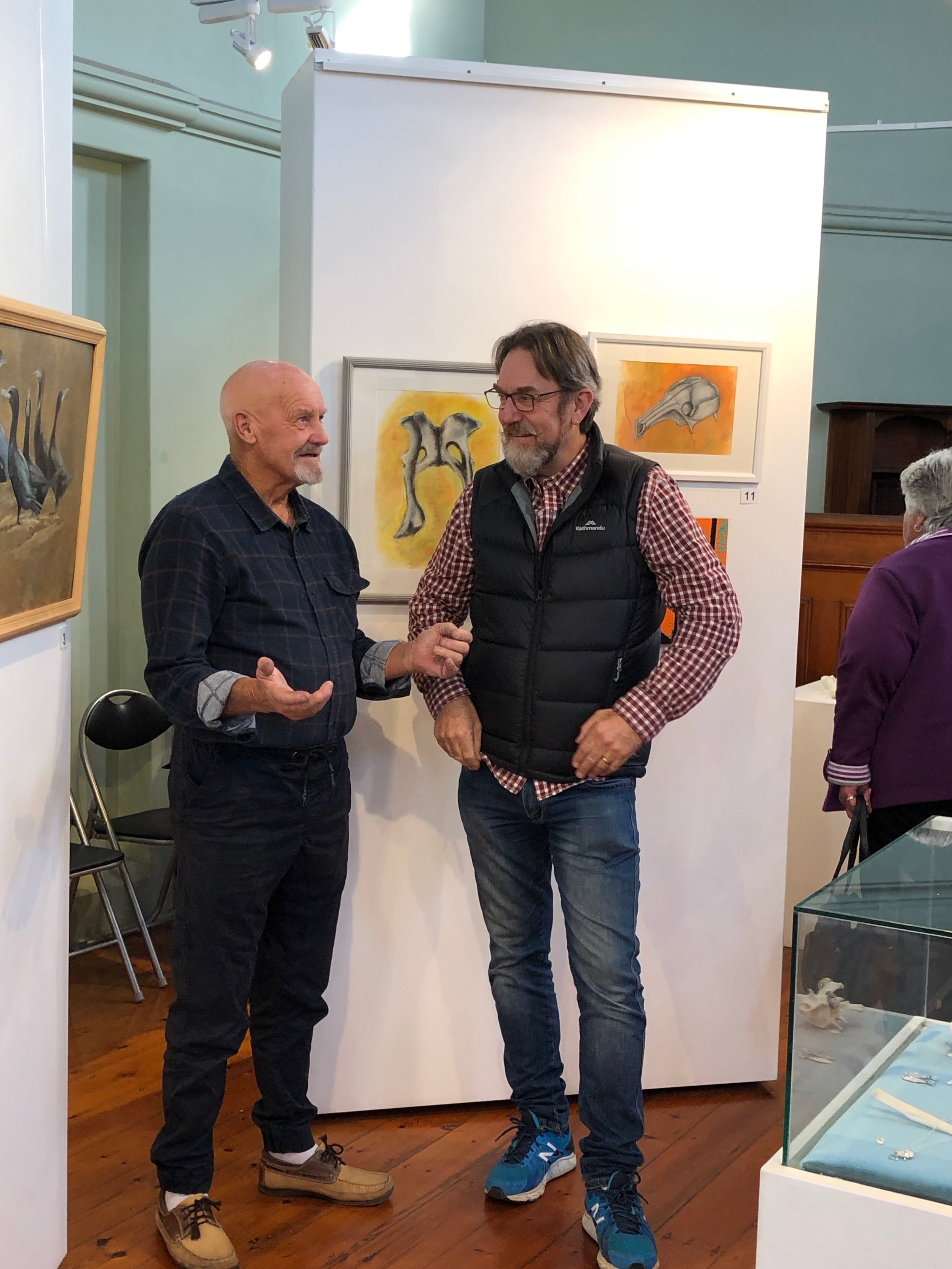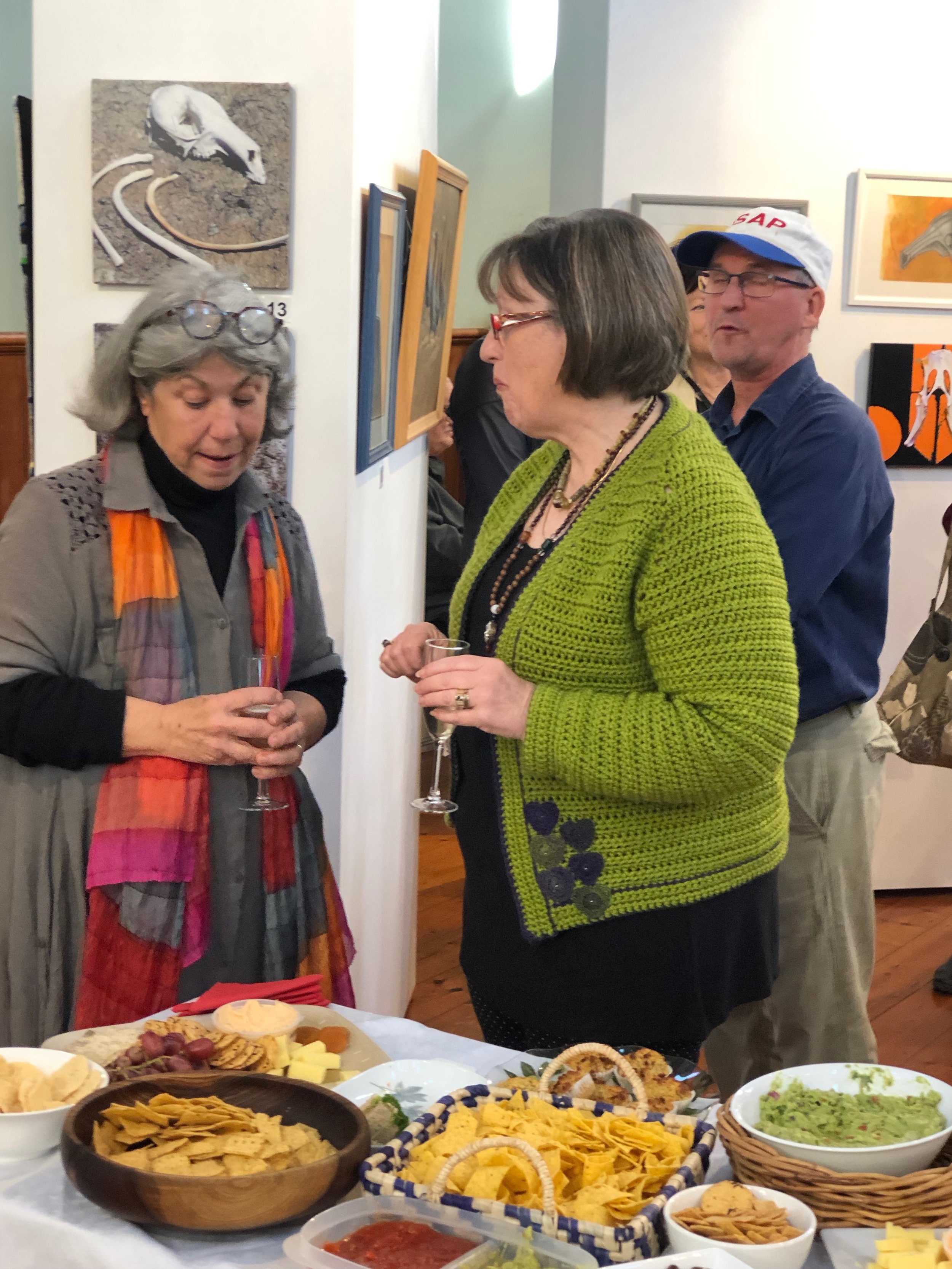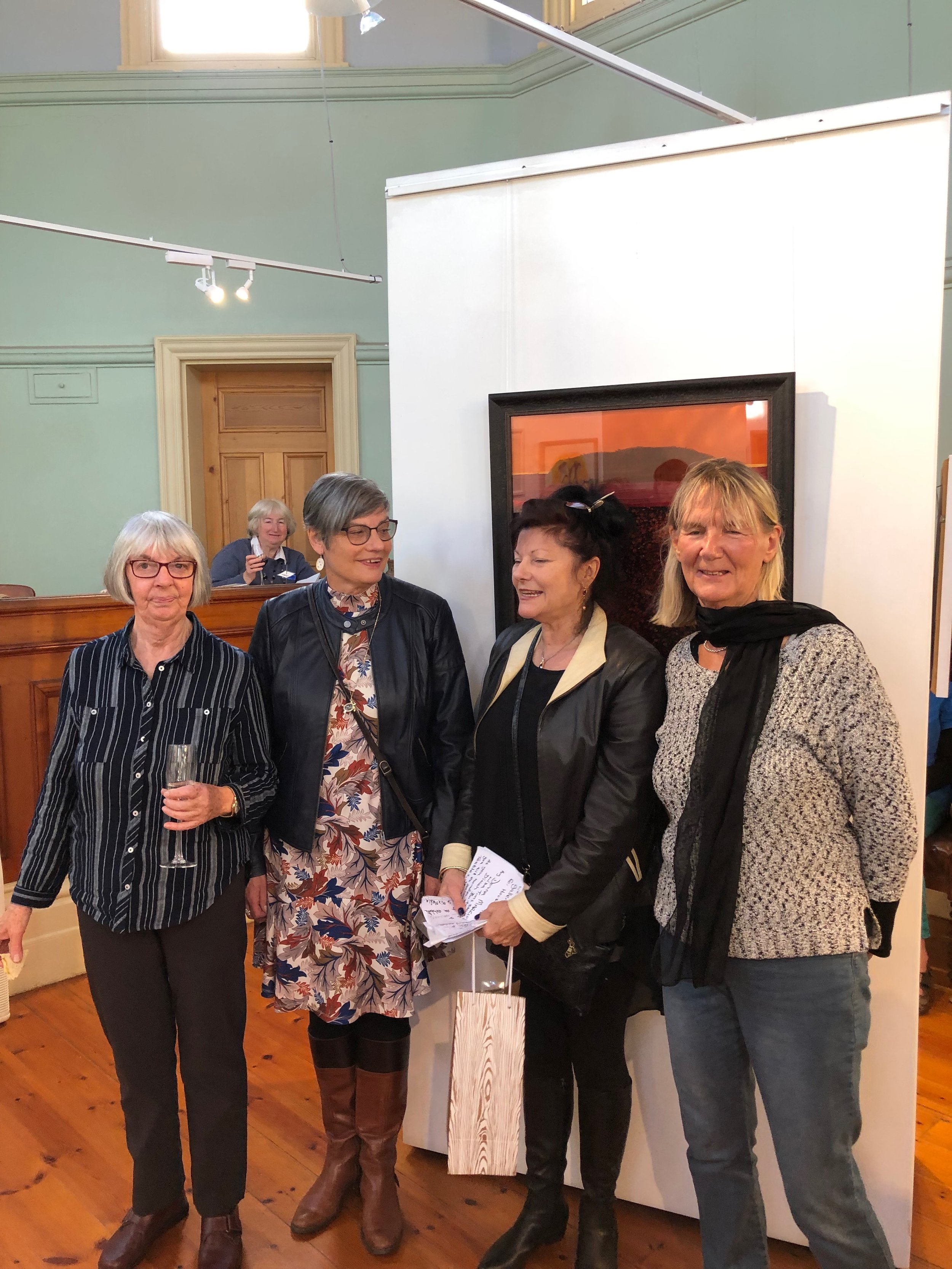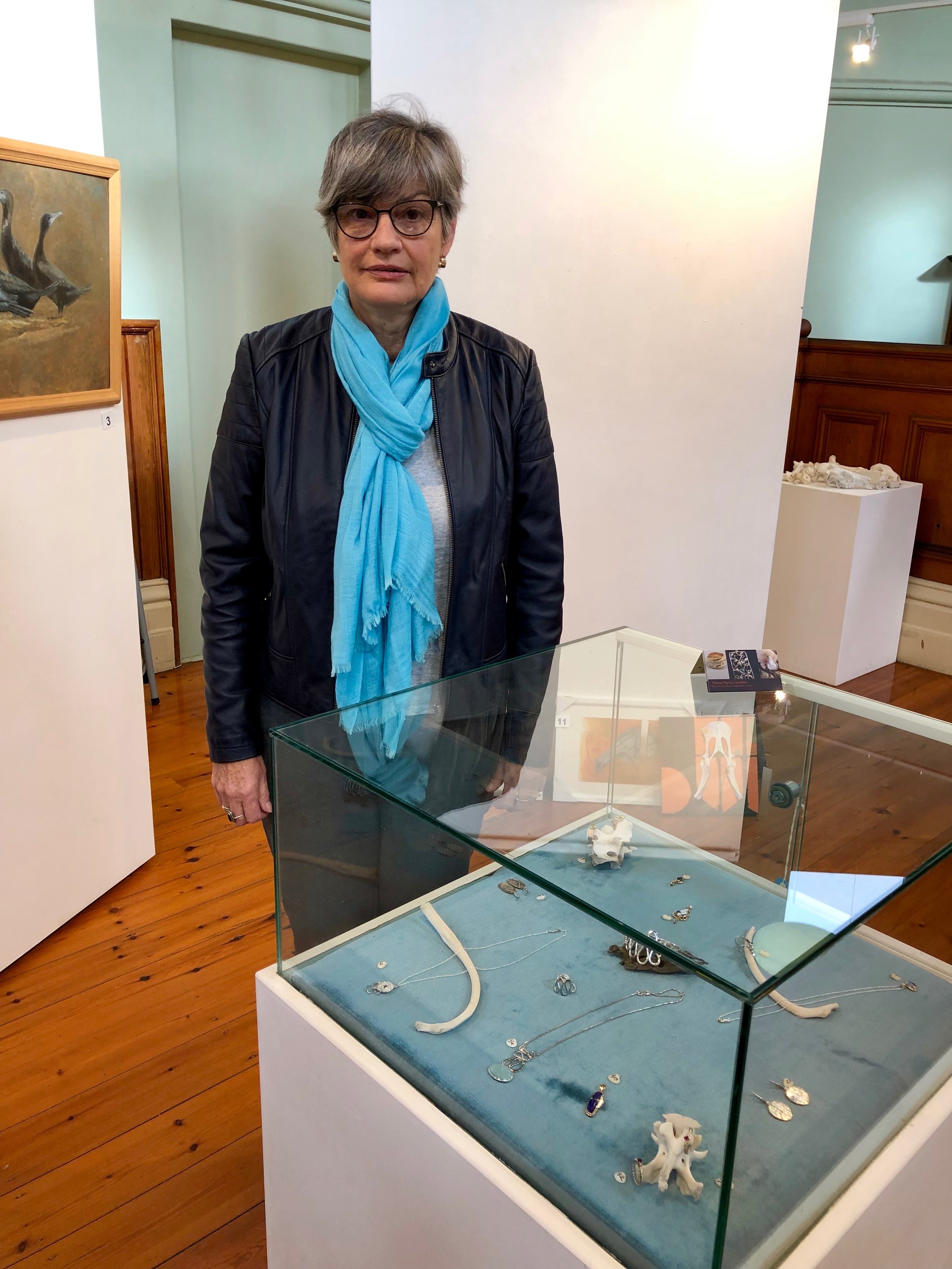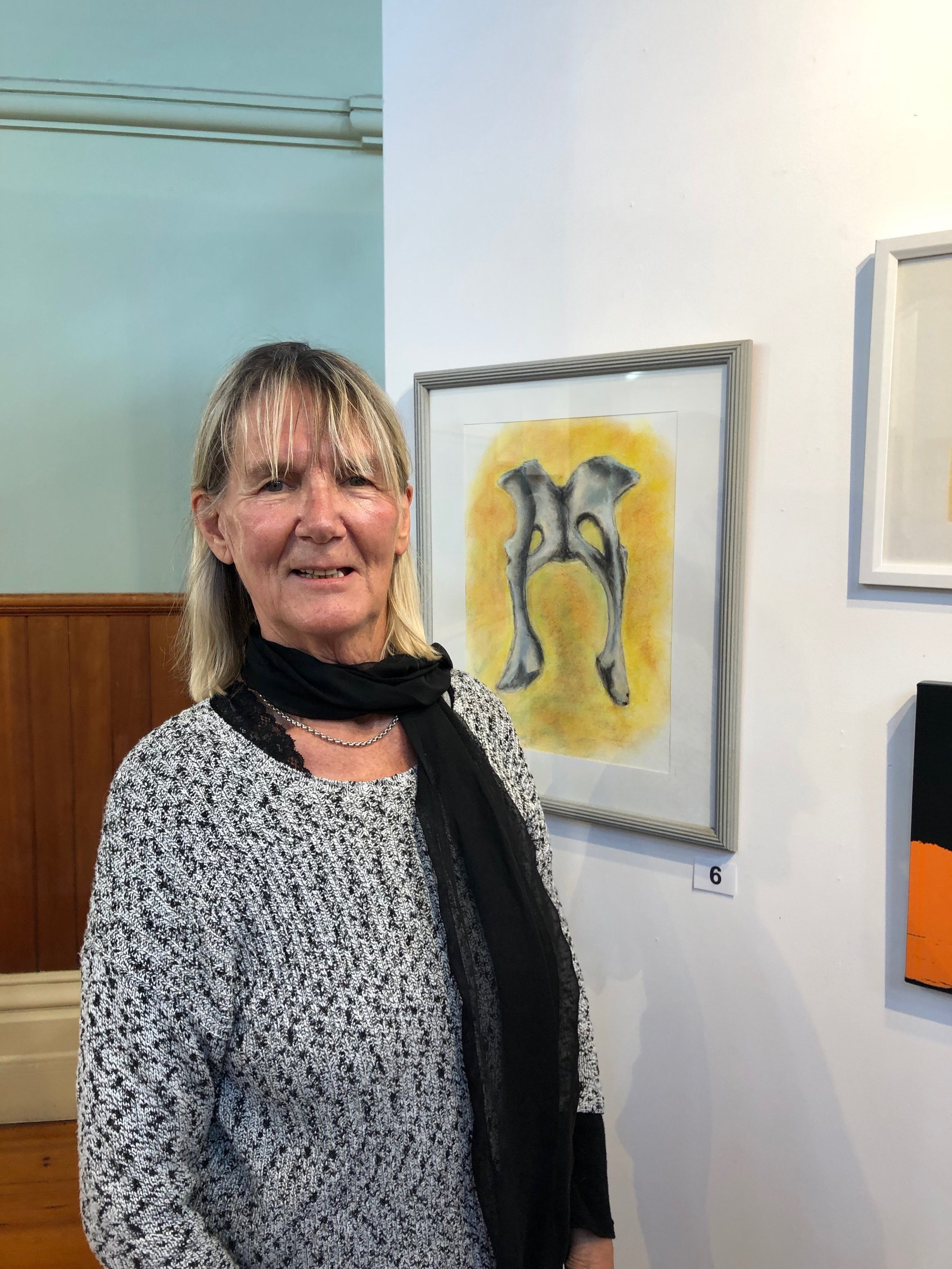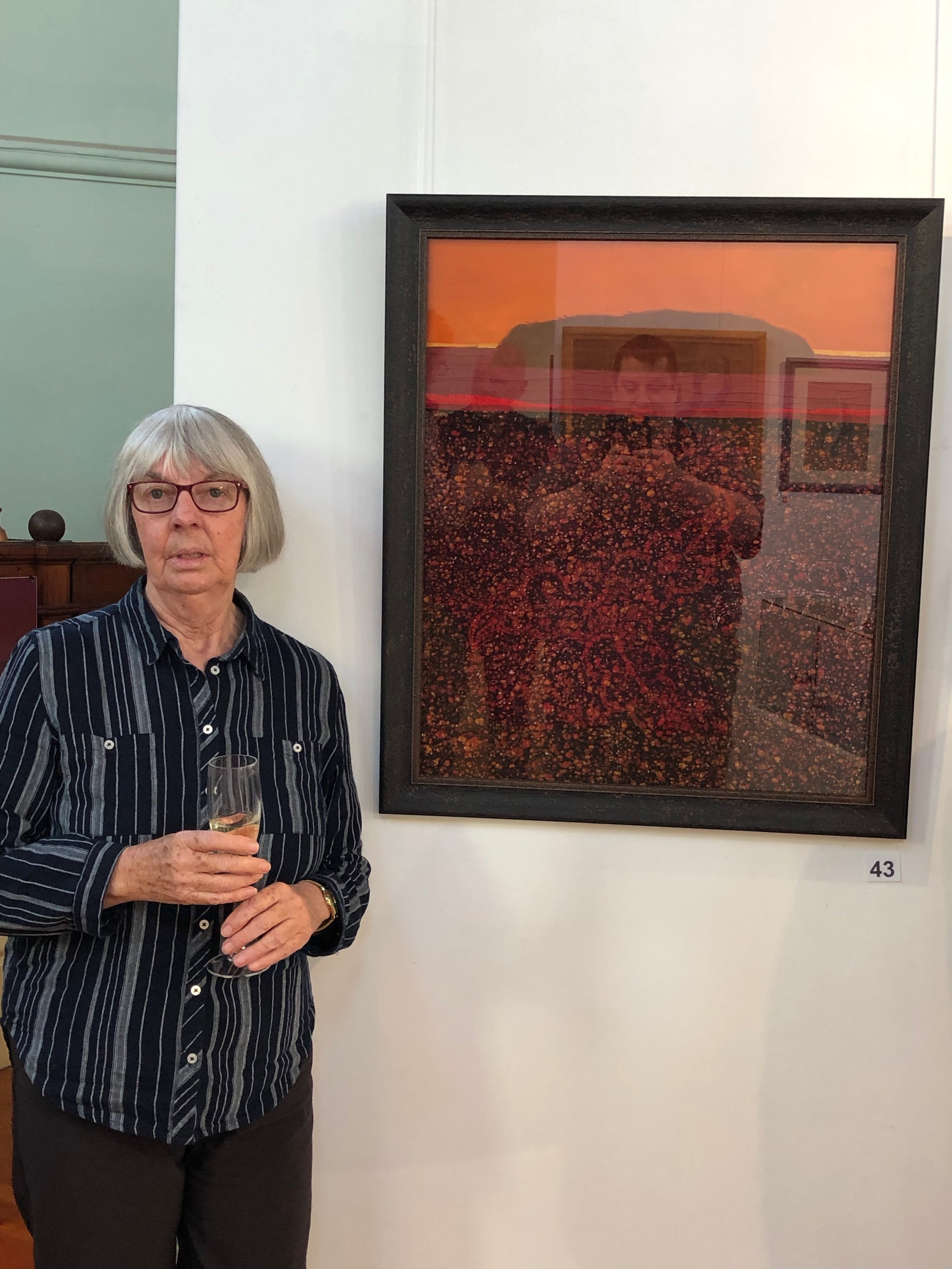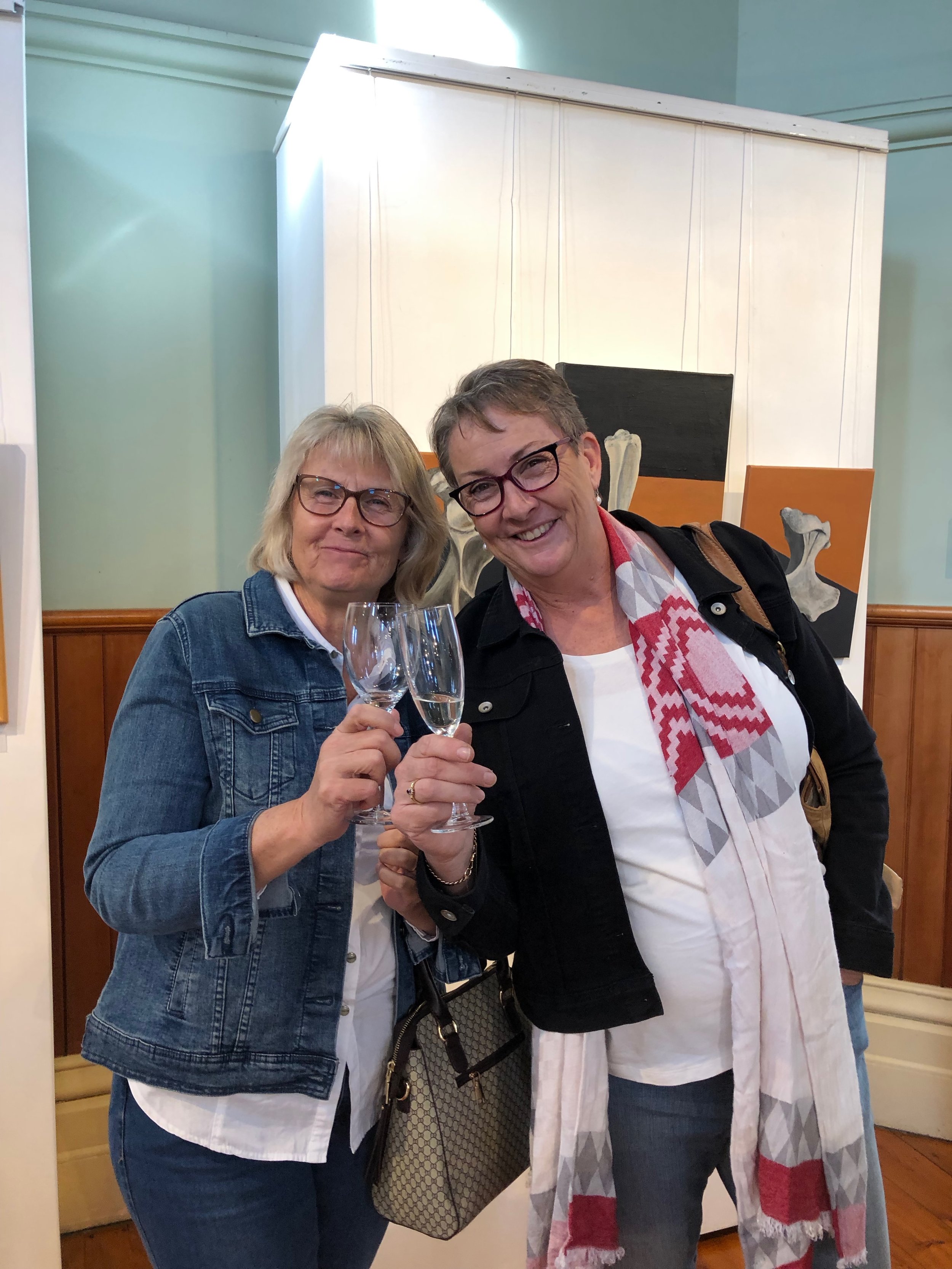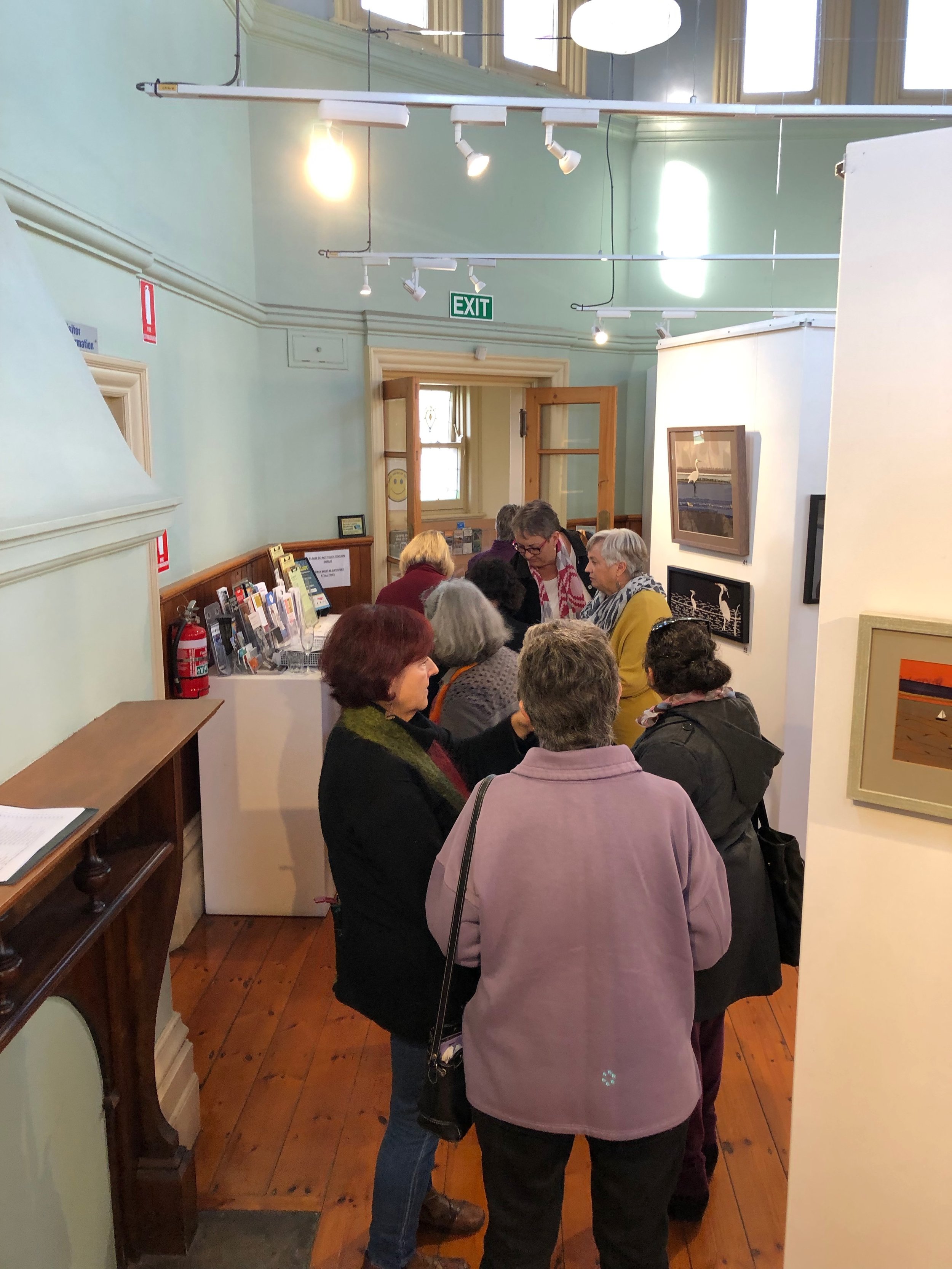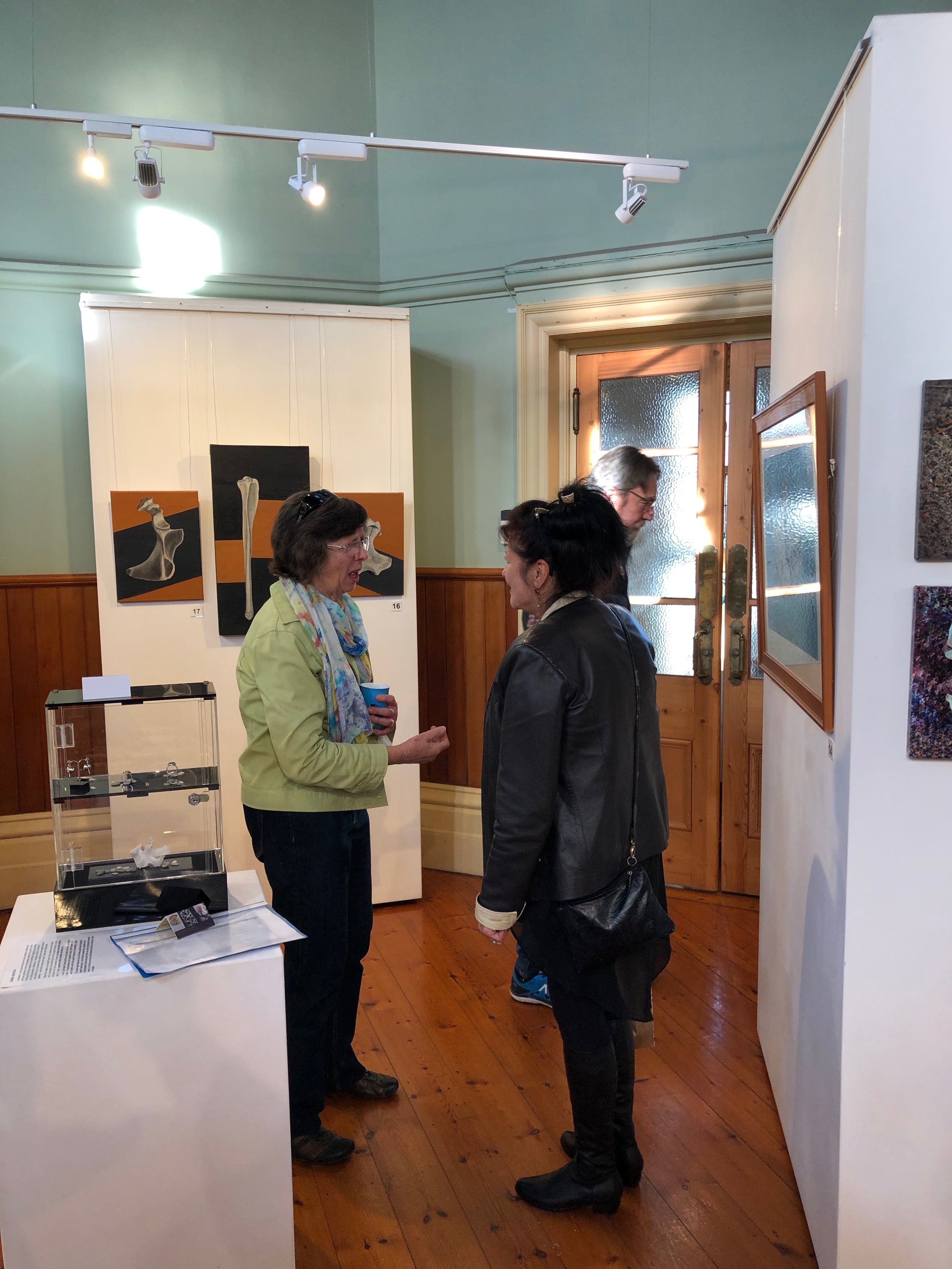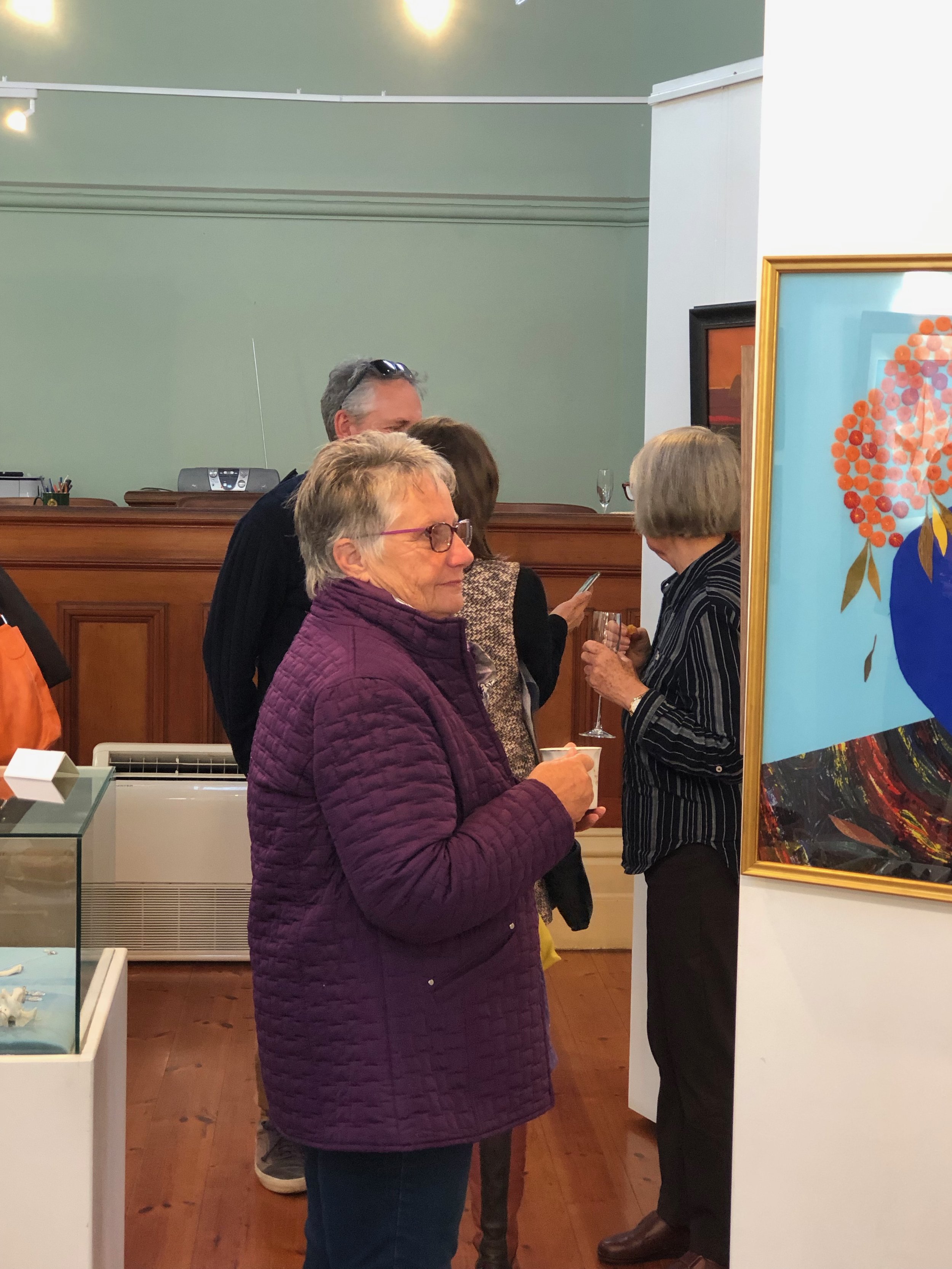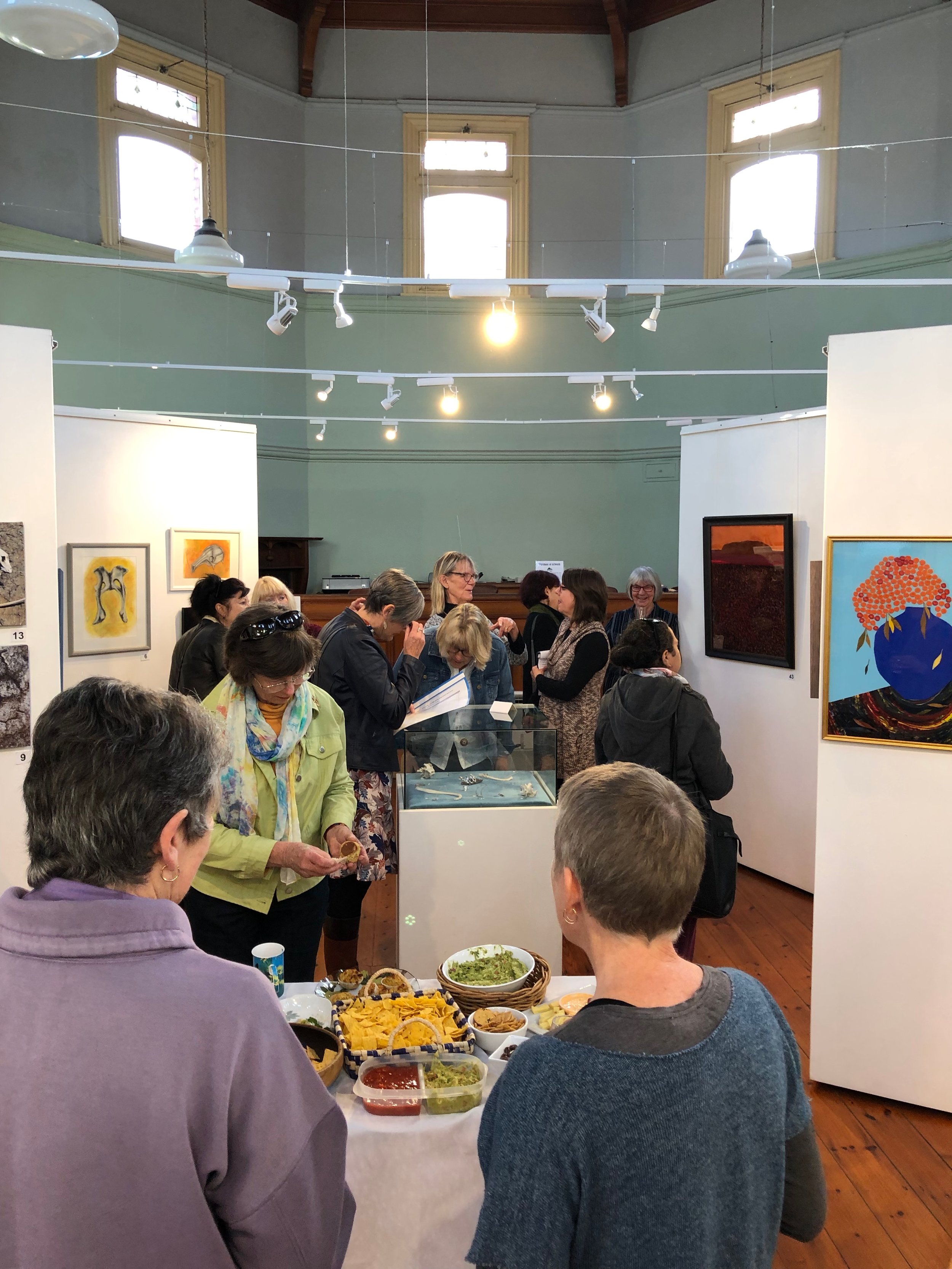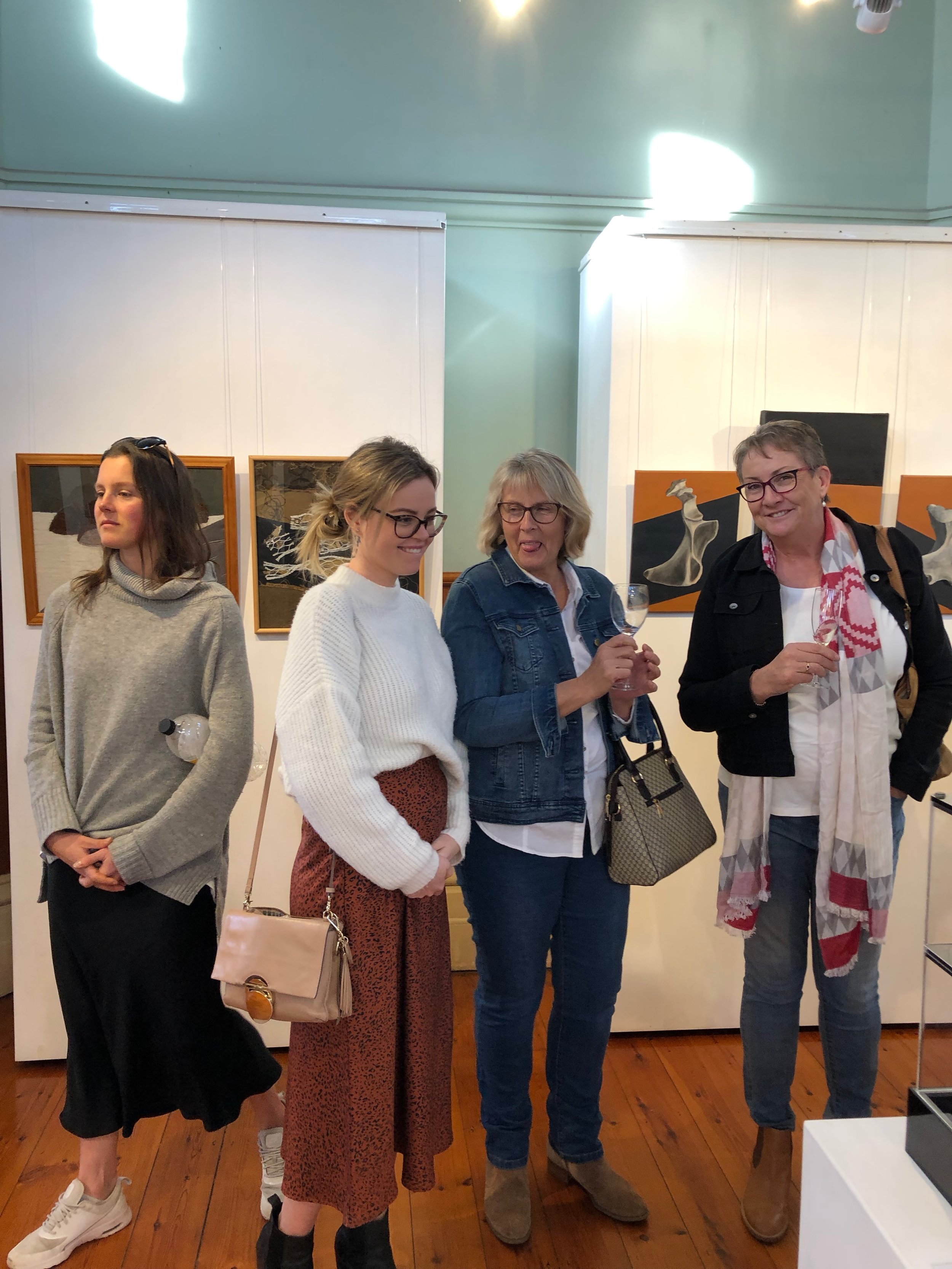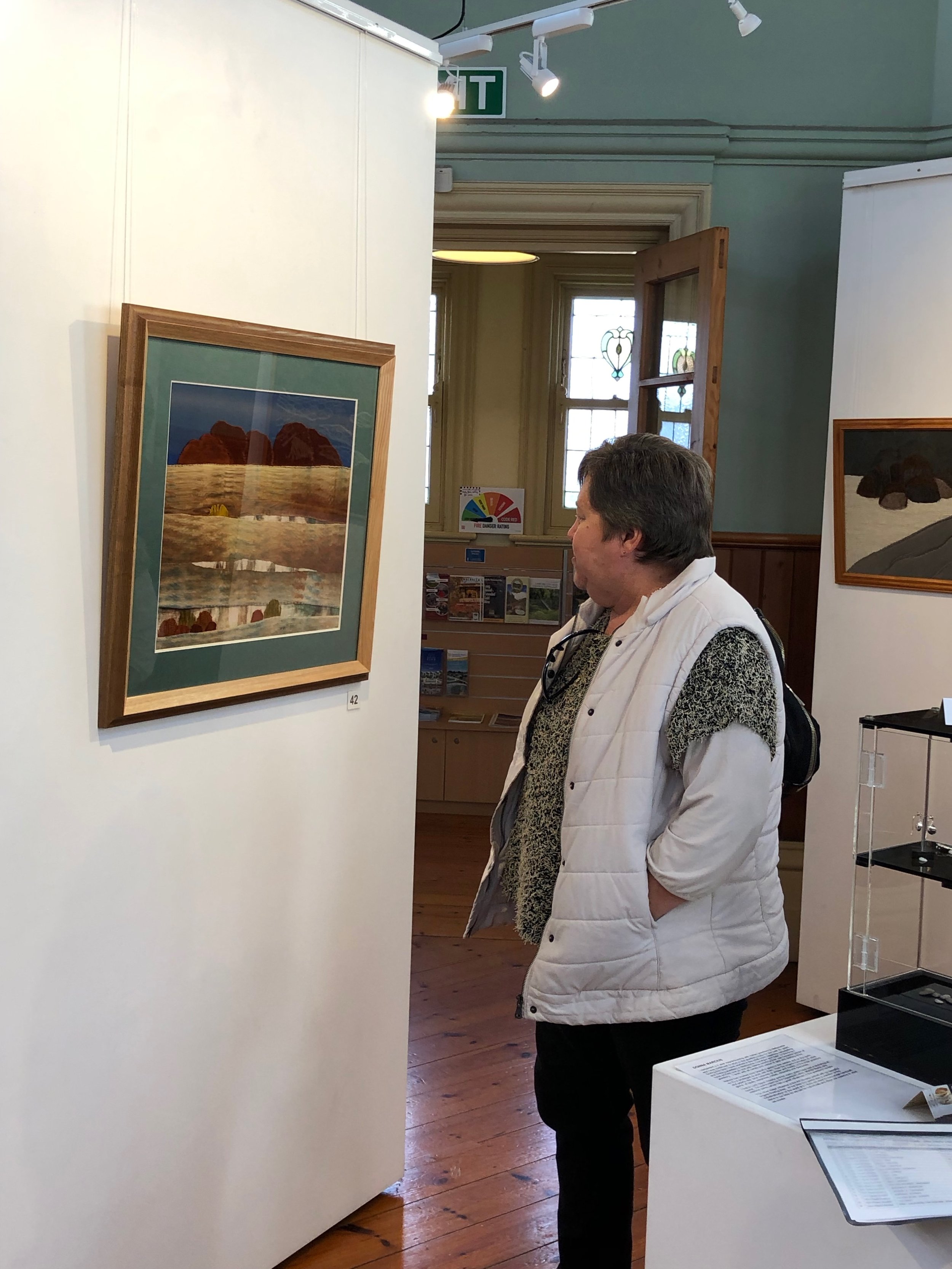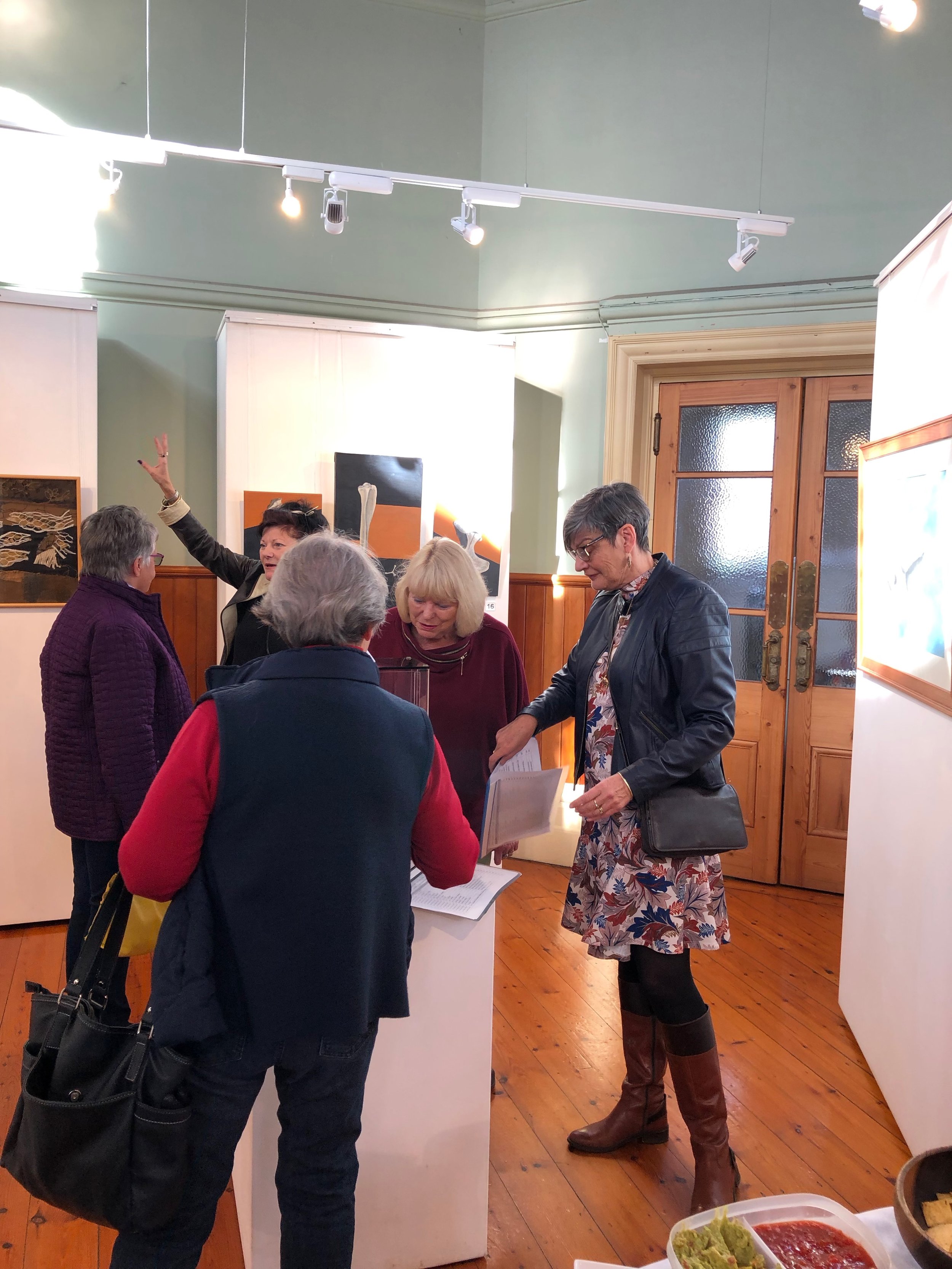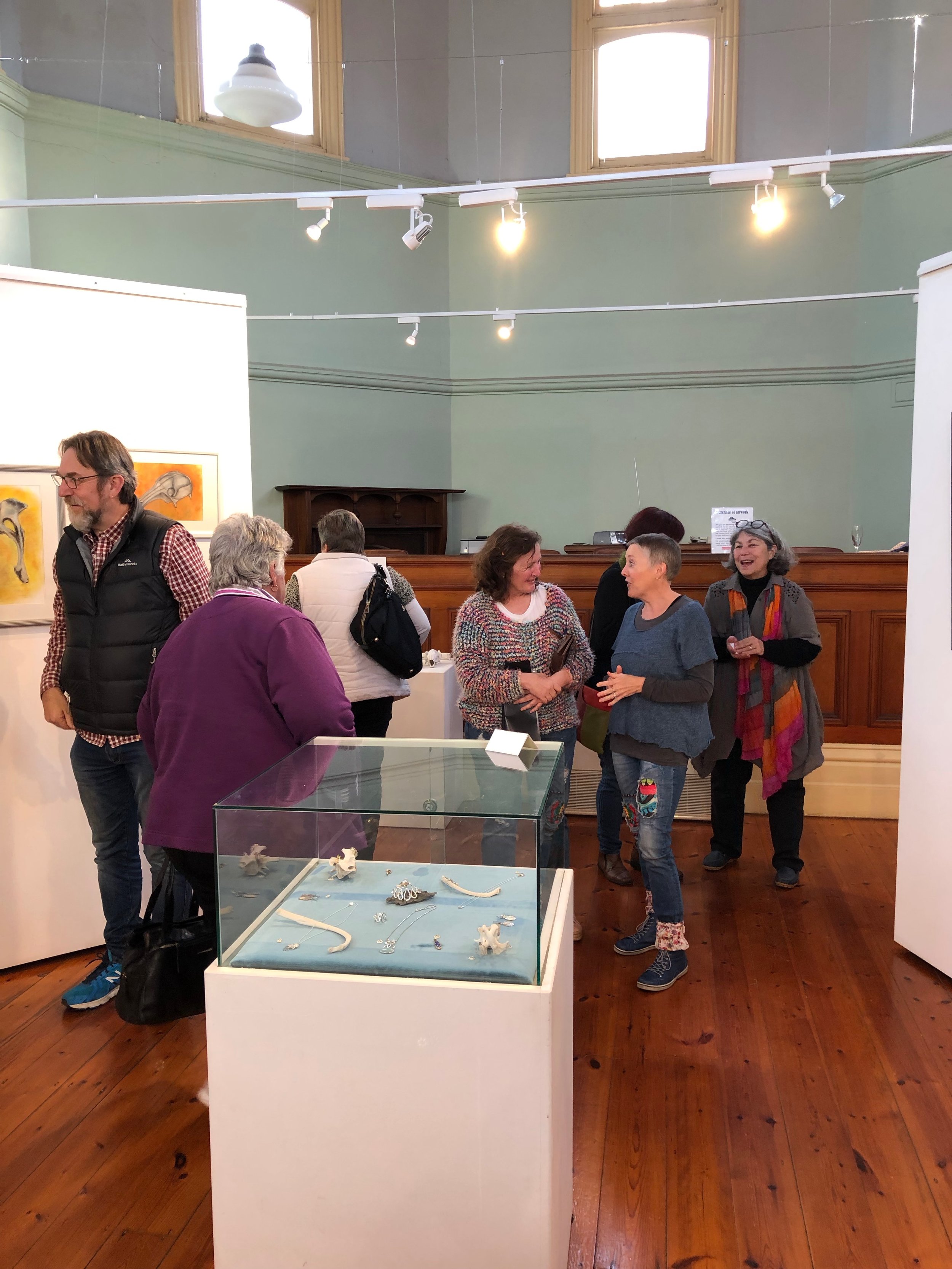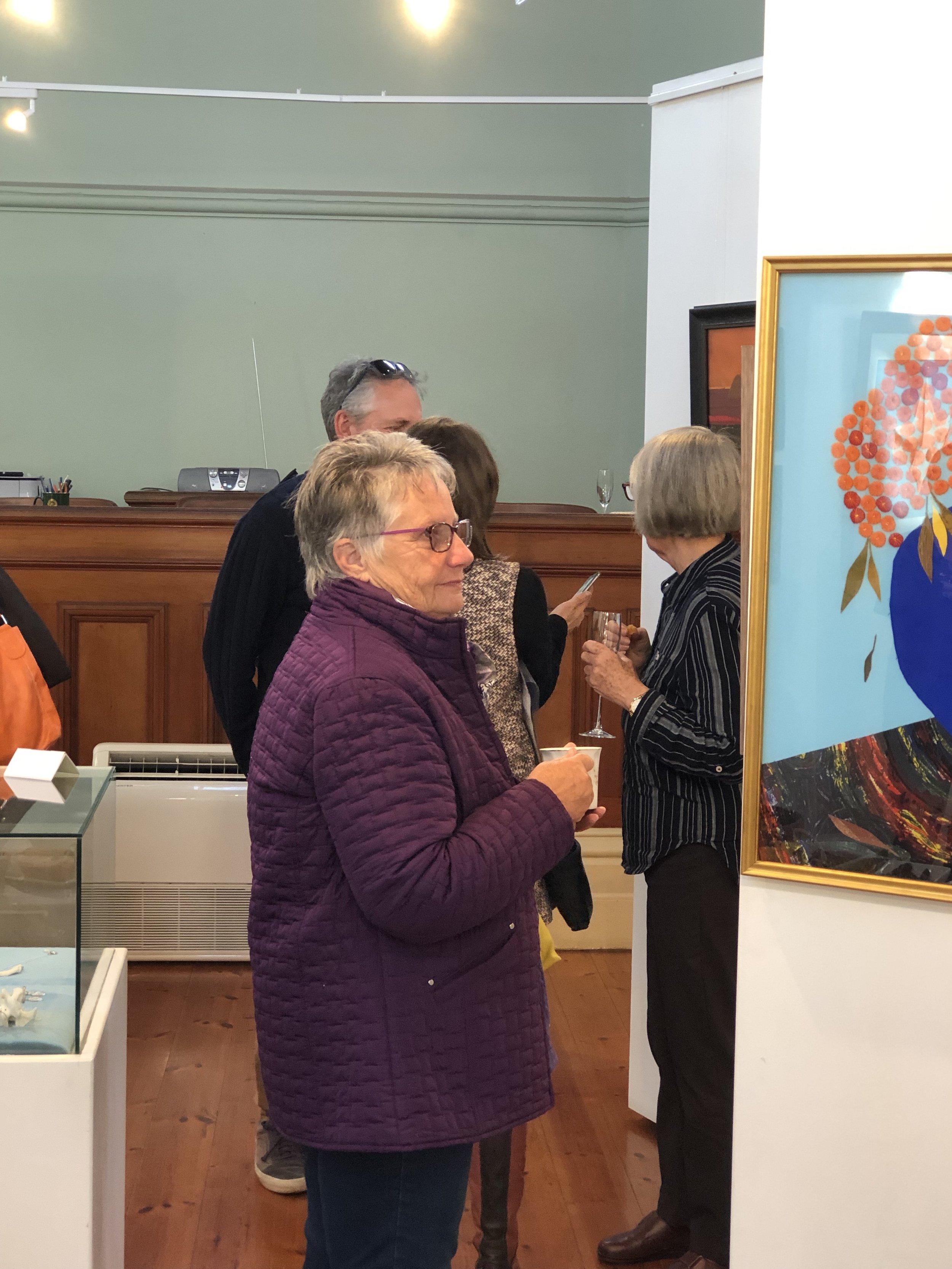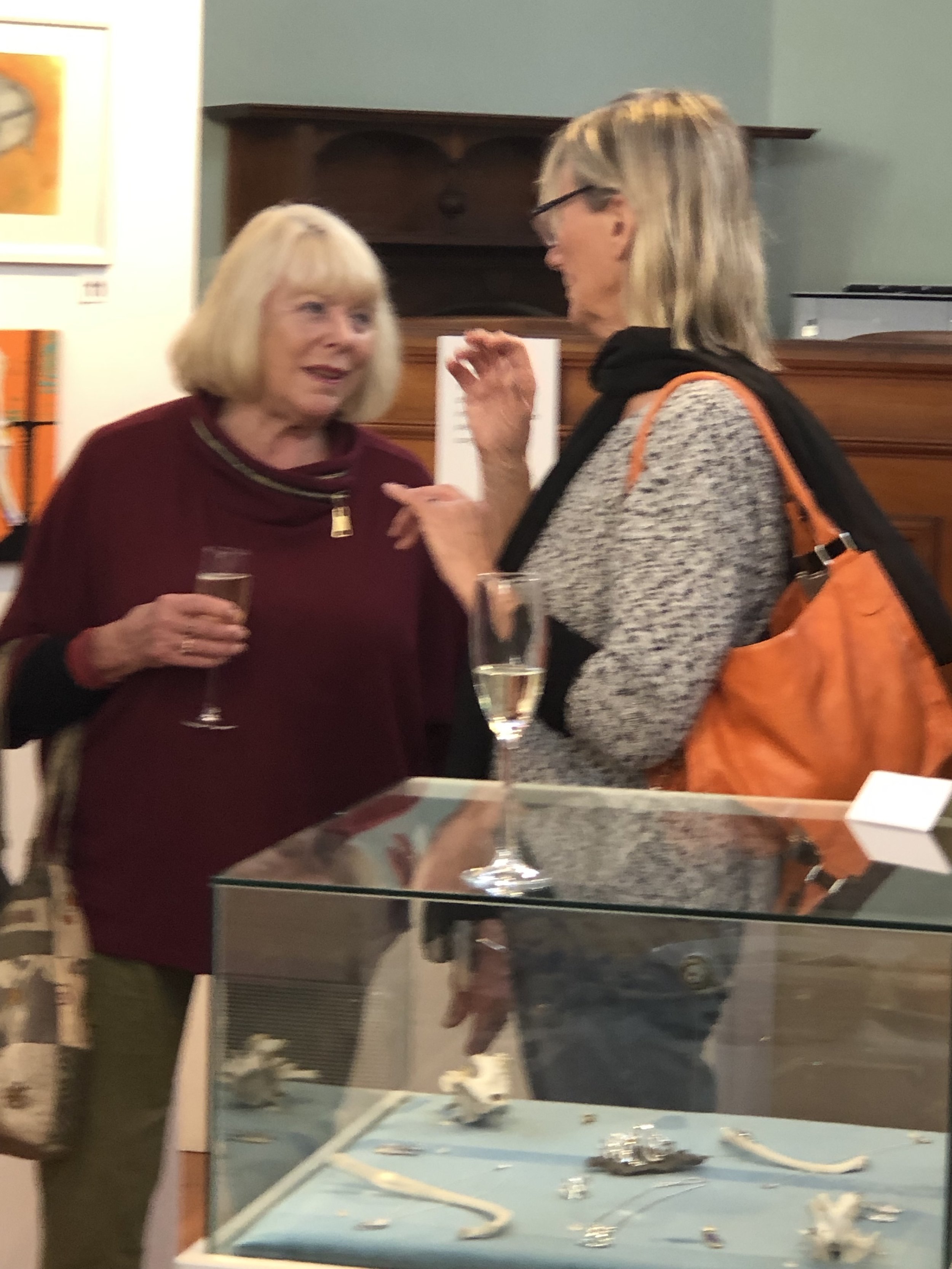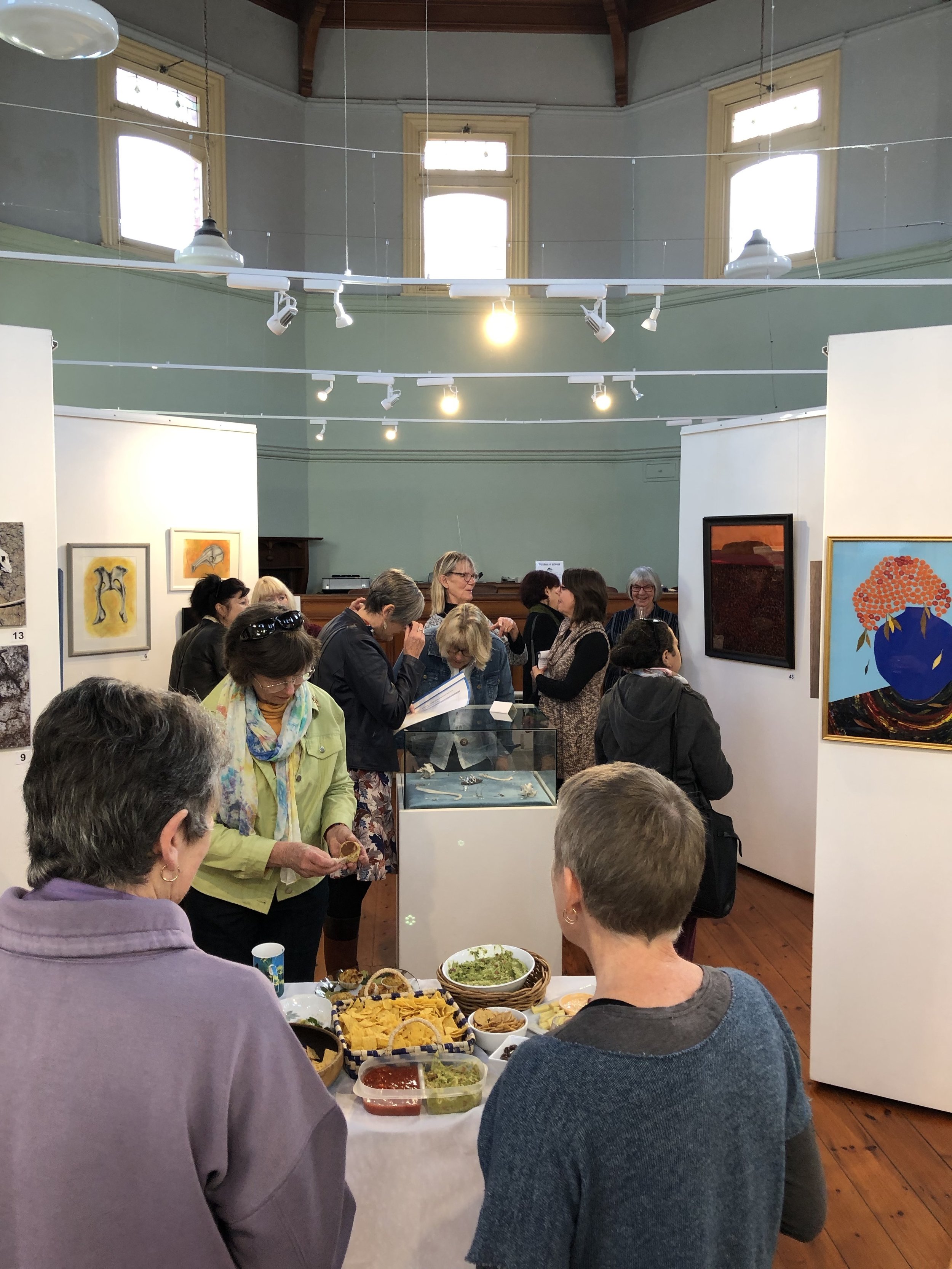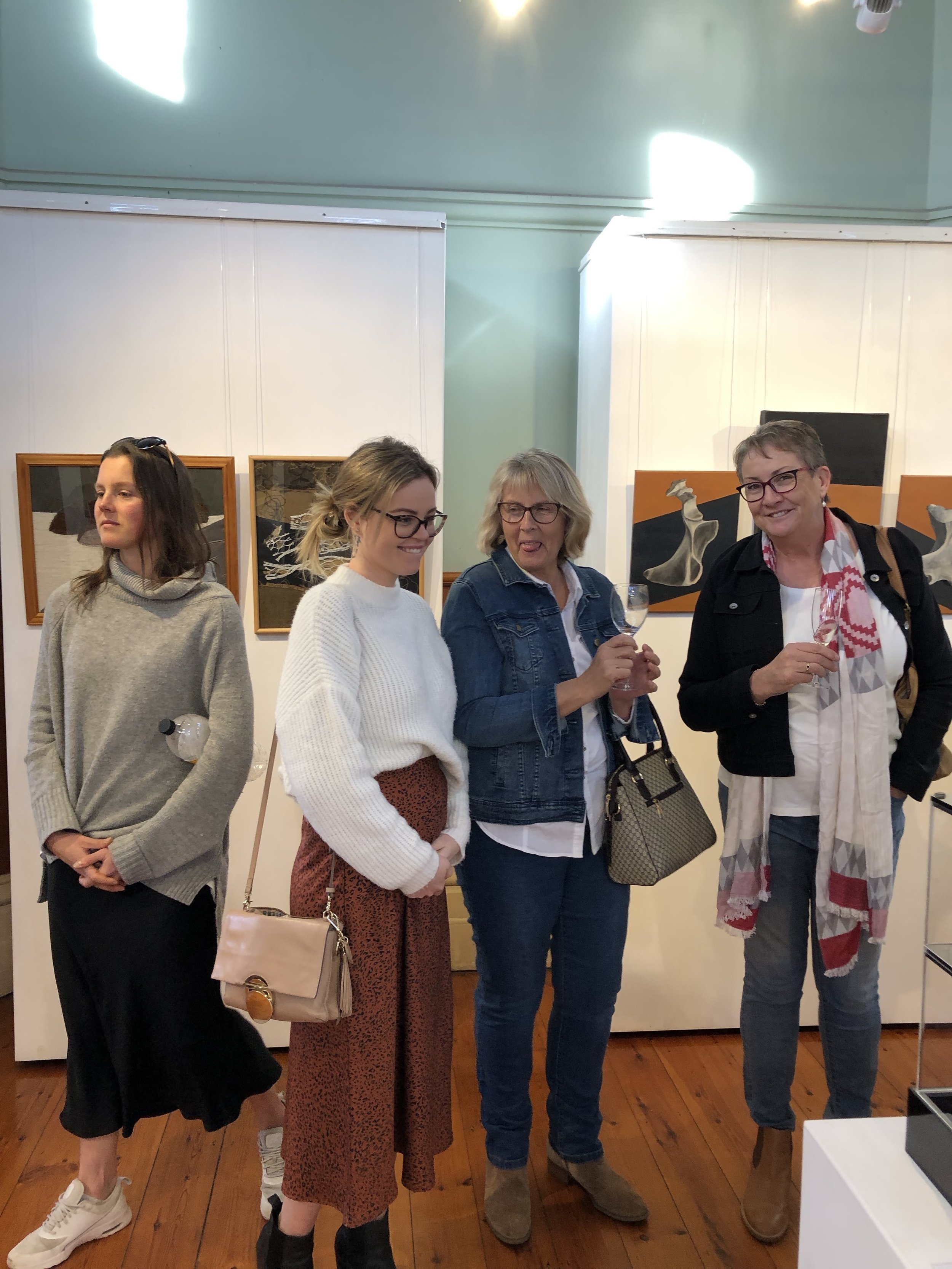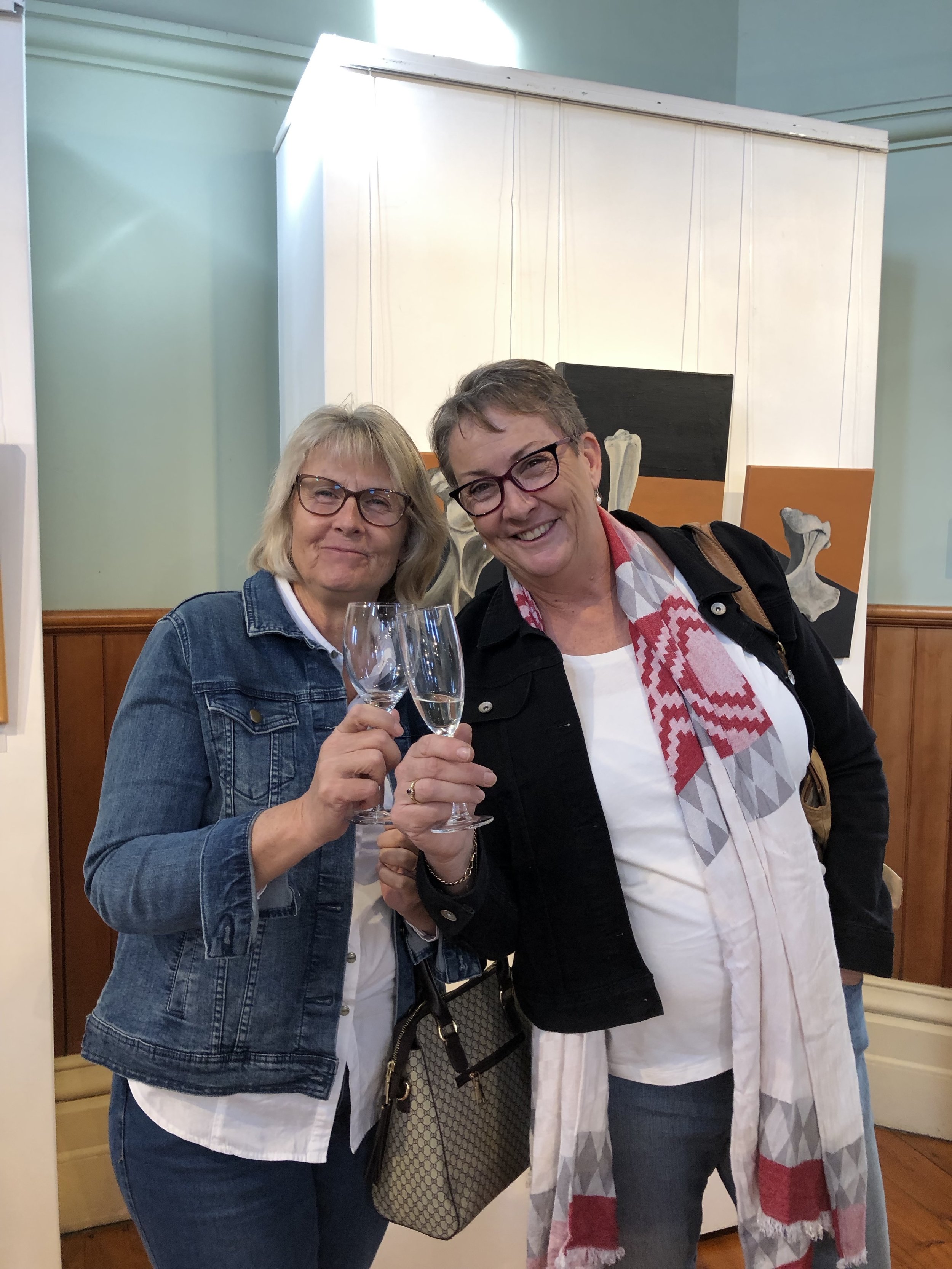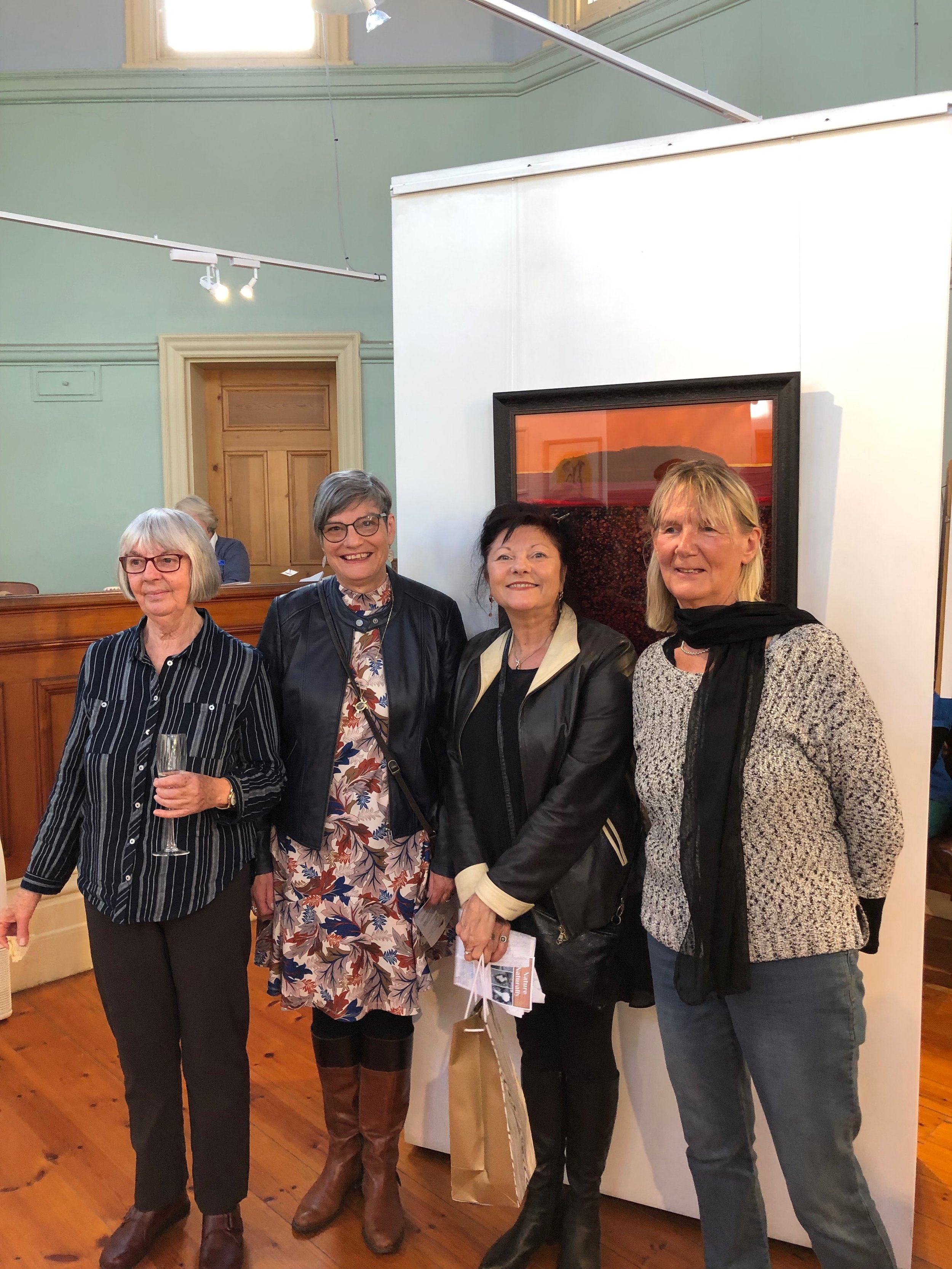AN EXHIBITION BY DINAH BARTON (TEXTILES), DONNA MARCIUS (JEWELLERY) AND LISA TIMMS STEVENS (MIXED MEDIA).
DINAH BARTON
Award winning textile artist, Lecturer/Tutor in Art and Design at R.M.I.T (City Campus) now working in her studio in Loch Sport, Victoria. Solo/Group exhibitions. Favours embroidering with fabrics and threads. I consider myself a textile Artist. Instead of using paints and brushes I use fabric and thread. A variety of yarns are combined to get the desired effect. I do not use the sewing machine preferring to glue, hand stitch and embroider. In the final stages I may add pencil or paint. The design concepts are based on my own sketches, doodles or photographs. The original idea does not contain much detail, choosing to create as the journey unfolds. It is this process that maintains my interest and enthusiasm. The interplay between the embroidered piece and the fabric background create textural depth. The art work on display is highlighting aspects of my interest in "nature naturally."
1. Loch Sport is surrounded by water which attract a variety of birds. Their habitat extends across the Gippsland Lakes. There is international recognition of this area as birds make the long flight from as far away as Siberia.
2. Wilson's Promontory provides sketching opportunities of rock formations, the ebb and flow of river and sea set against the ever changing light and water reflections.
3. Outback journeys across Australia has created for me a new intensity of colour and light not found in the coastal areas.
4. Part of my teaching career covered interior decoration and design. These flower studies set in vases on tablecloths reflect that influence.
DONNA MARCIUS
I completed a 4 year apprenticeship with Italian jewellers in Melbourne and have continued to work in the jewellery trade for the past 35 years. During this time I have worked in the retail trade repairing, remodelling and making jewellery in Melbourne, Traralgon and Sale. In this time I have worked one on one with clients creating their own bespoke pieces of jewellery. I work with all carats and colour of gold and sterling silver.
Nature has created such beautiful gems in the oceans and on the earth, so it’s a privileged to work with them, from the organic formation of coral and pearls, the time capsules of amber and fossils, to the most precious gems of opals, sapphires, rubies, emeralds and diamonds.
I live in Loch Sport Victoria and for many years have had a workshop at home. I’m surrounded by the Gippsland Lakes, 90 Mile Beach and National Parks, which has a great influences in the jewellery I create.
The other major influence is the Art Noveau period with its beautiful organic flowing lines. At the time this period was a reaction to the industrialization of the world and I think we need to encourage handcraft items in our time so we can be individuals and show our essence in what we create.
LISA TIMMS STEVENS
I live in Loch Sport, on the borders of Lake Reeve, a wide, shallow offshoot of the Gippsland Lakes. The surrounding Crown Land is a wildlife haven. When you walk through the narrow opening into the scrub and saltmarsh you enter a different world.
It was here that I found, earlier this year, a beautiful deer antler, and then a kangaroo skull. Their shapes intrigued me. All my art practice is about shapes – in the past I was drawn to mechanical shapes and my ceramic sculptures use shape to describe and define them. I began to collect native animal bones in earnest.
Bones lying on the ground in the wild are like little treasures – in almost every case when an animal dies the predators move in and scatter the bones so it is rare to find something in usable condition. I’ve been very lucky with my finds and the internet is a great source of information about cleaning and sanitising. Animal bone collecting is a worldwide hobby, though good finds are rare.
I feel a sort of reverence for the creatures whose bones I am portraying, it’s almost as though they are being acknowledged. It is right and natural for organic matter to return to the earth but it’s a nice thought that these helpless, harmless creatures have been appreciated for their wondrous existence even when they are gone. Among other things, I feel awed by the amazing skeletal structure of the echidna, the extraordinary shape of the wombat’s skull and the way the kangaroo’s skull fits together – and has two very long horizontal teeth at the front of the lower jaw. No wonder it hacks up our lawns!
I hope that these artworks may give others a sense of the beauty and wonder of nature as found in our own unique wildlife.
